0 Comments
How did Christianity prosper when it was powerless, ridiculed, and persecuted? Early Church historian Henry Chadwick attributes Christianity’s quick spread to women because of Christianity’s belief in the equality of women and men before God. True, in the early years of the first millennium Christian women were still constrained to the social roles of homemaker and wife, but Christianity elevated the status of women through its doctrine that all are created in God’s image and redeemed by Christ, meaning all must treated with respect and dignity. The long-standing importance of women evangelists in the Church was visible in Medicine Hat during the 100-year anniversary celebration of the Catholic Women’s League (CWL) of St. Patrick’s Parish on Saturday, April 27th, 2024. A century after the chapter’s founding, Bishop McGrattan called CWL a gift to the Church and the community because of CWL’s constant witness, faith, and service. CWL remains steadfastly committed to social justice by promoting life from conception to its natural end. As current St.Patrick’s CWL President Anne Helfrich proudly proclaimed, “since 1924 the CWL chapter of Medicine Hat has helped women grow in faith by being the hands of Jesus.” Michelle Bien, a CWL member who joined two years ago told me, “CWL is for me. CWL fills a niche that nothing else does; it filled a gap in my life I didn’t even know was missing.” This succinctly expresses the heart of the diocesan renewal’s promise of You are called; You matter; You belong. St.Patrick’s CWL chapter creates a vibrant and radiant parish life by actively caring for the parish and the greater community of Medicine Hat by fundraising for charities like the Ronald McDonald House, Salvation Army, and the Mustard Seed, giving away clothing to those who need it, teaching children how to pray the rosary, and providing scholarships to students of Catholic schools. Bishop McGrattan’s homily at the celebratory Mass and his speech to over 100 CWL members and guests at the dinner following, discussed how lay movements witness daily to the Church’s call to charity by, “Taking out of the storehouse what is good and bringing it forth.” Bishop McGrattan concluded by issuing a challenge to grow vocations throughout the diocese by committing to 40 hours of Eucharistic adoration because Eucharistic adoration will be the most efficacious approach to diocesan renewal. As I listened to the legacy of this vibrant CWL chapter and Bishop McGrattan’s message for renewal, I was reminded of another woman who sparked a Catholic renewal – St. Juliana of Mont Carillon – a Flemish nun instrumental in establishing the Feast of Corpus Christi in the thirteenth century when many people did not have access to, or understand, the Eucharist. Prophets like St. Juliana appear in periods of crisis when the patterns of life have been disrupted or destroyed. Religious leaders and laypeople at the time recognized and admired the religious devotion of St. Juliana and her sisters who channeled their energy into Eucharistic adoration. The Feast of Corpus Christi quickly became one of the most important and popular feasts of the Church because of its focus on the central mystery of the faith, and because it expressed pride in community life and, of course, simply because it was fun, which was fully on display when members of the CWL enacted a spirited and laughter-filled “fashion show.” While popular music of the past decades played, CWL members donned period clothing and joyfully paid tribute to women of the past 100 years, one decade at a time. President Helfrich, who revived the chapter after the pandemic at Fr. Roque’s request, gave the audience a humorous history lesson and noted major moments in Church history over the past 100 years. Worship, laughter, and frivolity merged into a joyous whole, showing how to bring the love of Christ into community life. If the Church’s past is any predictor of its future, women (such as the century of women from the CWL chapter of St. Patrick’s in Medicine Hat) will play a leading role in the Church’s renewal. They will lead the renewal through service to their community, Eucharistic devotion, and they will have fun doing so! “CWL is a great place to live the Catholic faith,” President Helfrich said. “CWL has supported me and what I stand for, filled my life with friendships, and gave me opportunities to help people.” Congratulations to all the members of St. Patrick’s CWL, especially the organizing committee. May God continue to bless the next generation of the Catholic Women’s League in Medicine Hat! Written by Jason Openo on behalf of St. Patrick's Parish, Medicine Hat for Faithfully. Photos courtesy of Jason Openo.
“I’m very good at Lent,” my friend confided, “but I’m not very good at Easter. I struggle with joy.” My friend said this to me after I had spent most of the day reading Catholic works from the Middle Ages as part of our diaconal formation course from St. Mary’s University. When my friend confessed her struggle with joy, St. Anthony’s severe advice was fresh in my mind: “The fibre of the soul is sound when the pleasures of the body are diminished.” St. Anthony obviously loved the desert of Lent. St. Benedict’s rule includes not seeking after pleasure, hating one’s will, remaining aloof from worldly ways, and not provoking or loving laughter. Benedict was definitely a Lent-lover. According to St. Bonaventure, the Holy Spirit whispered to St. Francis that “spiritual merchandise has its beginning in the contempt of the world,” and so St. Francis sought lonely places where he could voice groanings that could be uttered only to the Lord. It is perhaps easy to see why some philosophers call Christianity sour, dour, and humourless. More confusingly, though, these statements are hard to reconcile when considering Jesus’ comments, “Remain in my love. If you keep my commandments, you will remain in my love, just as I have kept my Father’s commandments and remain in his love. I have told you this so that my joy may be in you and your joy may be complete” (John 15: 9-12). Jesus is clear: if we keep his commandments to love one another as he loved us, to carry our cross daily, to feed his sheep, and participate in the Eucharist, we can partake in the same joy Jesus brings into the world when healing people or laying down his life for his friends. Joy should not be mistaken for a purely emotive state. Emotions are fleeting, whereas the joy Jesus describes is durable, independent of circumstance, and as much a part of what we will as what we feel. A resilient joy free from the vicissitudes of life is the only way we can make sense of comments from St. Paul that we might be “as sorrowful [as death] yet always rejoicing” (2 Cor. 6:10), or “I am overflowing with joy all the more because of our affliction” (2 Cor 7:4). The next morning, I revisited the course readings from the Medieval masters looking for evidence of this durable joy, and I found a joy grounded in our creation. St. Bernard of Clairvaux points to the foundation of joy: “it is only right to love the Author of nature first of all… we should love Him, for He has endowed us with the possibility to love.” We love God because He created love and offers us the opportunity to love, to praise, to worship, and to rejoice in His work. God’s very being is an experience of loving intimacy, and this is the ground of our inmost self, as well. Julian of Norwich adorably describes this shared identity as a process of oneing: “He knit us and oned us to Himself.” This oneing takes some effort; it takes work for Jesus’ joy to be complete in our lives. But in those rare moments when we are in harmony with Jesus and united to the Father’s will, the Holy Spirit will provide an unshakeable confidence that must be proclaimed because the only thing more wonderful than experiencing harmony with God is experiencing this oneing within a community. The Eucharist is the ultimate sharing of a commmunal presence with Jesus, and every time I accept his Body, I recall Mother Teresa’s prayerful declaration: “From now on, nothing can make us suffer or cry to the point of forgetting the joy of your resurrection!” Eucharistic participation provides a joy that is no longer just an emotion, but a permanent orientation to life itself. My Sunday Missal for the Third Sunday of Easter translates Luke 24:41 as, “While in their joy they were disbelieving and still wondering.” The Apostles were full of joy and doubt. That’s the struggle. While I have experienced moments of ecstatic joy, most of my life is comprised of ordinary moments where I “cling to the naked promise of faith,” in Henri Nouwen’s words. In dark moments, all I have to cling to is the promise that Jesus told me the truth; that if I keep his commandments, I will remain in His love and my joy will be complete. The cross protects us from a toxic positivity and a pollyannish view of life. But the cross is also the necessary means to joy, a fruit of the Spirit that, like all fruit, needs to ripen. Joy is still ripening within me, and the struggle of the Christian life is to create the ideal conditions for joy to grow.
We were incredibly fortunate to hold our first St. Mary's Cathedral Parish Renewal Gathering on Friday, April 26, 2024, which coincided with the Memorial to Our Lady of Good Counsel. It all began with a beautiful Mass at 5 p.m., with Fr. Avi presiding and Deacon Greg Barcelon and Deacon Dennis Foraie serving. The Catholic Women's League (CWL) of St. Mary’s was instrumental in preparing for this celebration—they diligently took care of various ministries for this Mass - as this is also a special celebration of Our Lady of Good Counsel, the patroness of the Canadian Catholic Women's League. It was a beautiful beginning for the renewal gathering, and it was lovely to see our Church filled with over 300 people at the Mass. After the Mass, Fr. Avi gave a short catechesis updating us all on the #Renewal process, after which we headed off to the Parish Hall to share in a “meatless Friday meal.” It was joyous to see over 220 people come together to share food and fellowship in the Hall. There was plenty of laughter and conversation, and a table was set up for the children to be able to colour and draw throughout the evening. Perhaps one of the biggest surprises to many was the talented group of musicians, led by our own Fr. Avi who performed a range of music and songs that appealed to all age groups. There was even a singalong to “Don’t worry, be happy”, along with Fr. Julian doing an impromptu dance inviting us all to be “joyful” witnesses to others. There was so much conversation happening that when it came time to focus on breaking up into smaller groups to answer 3 questions that the Renewal Team had selected for discussion, Fr. Avi first invoked the aid of Our Lady. Together, we prayed the Hail Mary which brought a profound stillness over us, perfectly setting the tone for thoughtful discussion. The event was highlighted by the mix of familiar faces and many new ones among the attendees. Many of the 220 present were attending their very first “Church” gathering, including several recently welcomed into the Catholic faith at the Easter Vigil. It was encouraging to see the mingling of different Parish group members present to share in the evening and offer a hand, as well as demonstrate their support for the Renewal Team. Feedback from the participants was overwhelmingly positive, with comments such as: “I feel so happy to be part of this lovely group of people”; “I feel like I belong here”; “Great event, great to see so many families here with their children”; and “Thank you so much for bringing us all together again.” “All things are possible with God” never rang so true as it did that evening. Given just two weeks to plan and execute our Renewal Gathering, it was clear to see that there is a hunger and a longing for belonging and meaningful connection within our Parish and the Diocese. It was a great beginning for us, and we remain committed to the spirit of the renewal already stirring within our Parish and Diocese. Submitted by Linda Edney, St. Mary's Cathedral Parish Renewal Team
Growing up, the Catholic Church was a feature in my life. My grandparents were regular Parishoners and my father, though lapsed in his own faith, made reference to the Church as a moral framework. I attended a Catholic school in my formative years out of pragmatism, but was transfered to public school at the impressionable age of 6 and remained in it until graduation. This presence of the Church but separation by a membrane of apathy and intangibility led to my belief that I understood the Church, when in reality I was utterly oblivious to the depths of its grace. This changed during the pandemic. In that time of struggle I was met with various hurdles, challenges that contributed to a deep malaise that overtook my life. It was within this climate of paranoia, uncertainty, and restriction, that I first began to take comfort in the stability and universality of the Church. I could find solace that cut through the pervading doubt that surrounded pandemic in the Truth of God. Apostolic succession, unchanging virtue, all surrounded by the vitality of the Church embodied in Christ. These were things that I did not know in my secular life, and graces that were absent in my other religious forays. I sought a way to unify with the Church, with the way and the life that was a hope in the oppressive darkness of the world. However, my lack of living ties, and the fact that at that time I was only 16, impeded my ability to join. In 2023, following my High School graduation and rapidly approaching my 18th birthday, the potential of a new chapter in my life emboldened me to pursue the fullness of the Church. So I did. I found my way to RCIA, and was met with the spiritual and temporal benefits of the Church that began to impact my life. Catechumenate life connected me with a fantastic array of people experiencing the ongoing journey of faith, people who were indispensible as guides along an uncertain bridge of intake into the Church. It was an honour for me to be able to undergo baptism with such a wonderful group of people, and to have the privilege to be assisted by the faculty of my Parish. Since becoming a Neophyte and I have received further blessings of faith, a galvanization to fulfill my duty as a Catholic and as a follower of Jesus Christ. I foresee a bountiful and happy life in the Church, so I hope that others can hear my testimony of its greatness to come and understand God. Submitted by Connor Shaw, who was baptized on Easter Vigil, April 20, 2024.
We have a beautiful special needs daughter who brought new meaning to “joy”. Hannah never learned to speak our language, but I could feel her love and her enthusiasm every minute I was with her. Hannah completed her earthly ministry in July of 2022 and left me with the biggest hole in my heart. Fortunately, a student and a wonderful friend of mine helped me see that where there is death, there is new life also. I had been happy in my faith and was not looking for more. But when I attended Mass with my friend I was totally blown away. I could not believe how close I felt to our Lord during the Eucharist. I had thought that Catholic worship was pomp and ceremony, but what I saw and felt was a conduit to my Lord. I could not stay away. I started attending Mass every morning on my way to work. Twenty-four hours seemed like such a long time to wait to come back again. A year ago, on Holy Thursday, I had accepted an invitation to a banquet at the Petroleum Club. At that time, I had not yet begun RCIA. So, when I accepted the invitation, I did not realize that I would miss the Mass of the Lord’s Supper. During the evening, something told me that I was at the wrong banquet. I got up and ran to my car, drove to St. Mary’s, miraculously found a parking spot and was just on time for the beginning of the Mass. I was not sure why I was there, but when Bishop McGrattan started washing the feet of those who had been chosen, I felt the most overwhelming spiritual sensation and nothing else mattered. It was like a river cascading in my head. At that moment, I knew that I would be baptized the next Easter. I must admit that my baptism at the Easter Vigil this year was a bit stressful – it was a departure from my past and I was confused and anxious. Now I realize that baptism is not simply an event, it is the beginning of a new life. While I didn’t feel an overwhelming sensation when I was baptized, I have felt a peace that is so beautiful and continuous since then. Something else happened as well – at my first confession. I needed to go, and I thought confession would be miserable with the priest scolding me. I didn’t want to go, and I rehearsed what I would say many times. But it was the most amazing experience – a loving priest understood me and gave me just the guidance I needed (and not what I had expected). I still feel the same way – every Mass is a spectacular adventure where I get to feel His love. I miss my beautiful Hannah, and I go and say a prayer at her grave each day. I know that “those who sow with tears will reap with shouts of joy” and I look forward to seeing Hannah again. And I am so thankful for my new life. I know that He died that we might live. Submitted by Mark Anderson, from St. Mary's Cathedral Parish. Photos courtesy of Maria Hernandez.
Before I became a Catholic, I led a fairly ordinary life as an independent woman in the secular world. I didn’t see much need for church-going or God’s help unless there was a snowstorm or a personal crisis. I was raised by Christian (Protestant) parents, my Father by Mennonites in the First Evangelical Free Church here in Calgary, and my Mother was raised Baptist. When they divorced, they stopped attending church regularly, and so did I. I was generally relieved to leave the hypocrisy of my upbringing behind and tackle life without much thought to the condition of my soul. Somewhere in my late 30s, I started noticing one particular question that kept coming up repeatedly: ‘How do I know what ‘right action’ is?’ I began searching for the answer to this question because it seemed to be at the root of both the suffering and the happiness in my life. I desired more happiness and less suffering. I asked more and more people this question and studied different philosophies, trying to understand how humans figure this out. It was fascinating! Around this time, I also wanted to quit smoking and went into a thrift store and picked up something that I could wear on a necklace to fiddle with when I felt the ‘itch’. It was a silver Miraculous Medal of the Virgin Mary, but of course, I did not know this at the time (I’m still wearing it today). A few years later, I met a friend in Montana who was a Catholic with a sound intellectual faith, and I asked him a little differently: ‘How do you know you are doing God’s will?’ He told me to write it down, and he would ask his priest on my behalf. The reply I received piqued my interest and appealed to my Protestant roots: ‘It is written on your heart.’ When I returned to Calgary, I looked up the closest parish to my house and contacted St. Joseph’s Parish about RCIA. Without over simplifying a rather deeply transformative process over several years, today as a Neophyte of one week exactly, I feel quite different from the woman who didn’t see much use for God before. I feel like I belong. The tradition of the Catholic Church holds the knowledge that intelligent Christians require to build faith. It succinctly and articulately addresses any and all questions that arise when it comes to inquiry about God. Anything that can not be explained is called a ‘mystery’ and fulfills a just purpose, as it is aptly named. I explain the Catholics to my Protestant kin as God’s scientists, my relatives, of course, are God’s ‘Hippies’! I had many questions about God growing up and into adulthood that no one could answer, other than to say that ‘I should pray about it’. So I did, and was confused, and then dropped out. (How does one know what thoughts are mine and which are God’s?) Since becoming a Catholic, I don’t worry about this question as much anymore. I don’t know if that means I have found the answer or the fruits of the Holy Spirit or, if it even matters which?! I also don’t really care too much about what secular people think anymore. The endless cycles of anxiety and depression driven by superficial pursuits are soul-crushing and stressful. It doesn’t mean I don’t feel that way, it just means I approach reprieve differently now. I read my bibles now (they’ve surprisingly multiplied!) and look forward to attending Mass. I don’t pray for solutions to the problems anymore, rather I think of what gifts from God I could really use to help me see things differently, if it is His will to reveal his plans. So far, I don’t have any more insight about what God's plans are for certain or His thoughts (Isaiah 55:8). However, I can recognize Joy, Peace, Patience, Kindness, Goodness, Gentleness, Faithfulness, Modesty, Self-Control, Chastity, and Love all around. I’m on the lookout for these graces now. How I feel is less important than before, when it seemed to be all I had to go on. Who I am, my purpose now, and the way in which I live this truth is rooted in something Great and I am not afraid. Written by Michelle Thiessen, baptized on Easter Vigil 2024 at St. Joseph's Parish, Calgary
Last year on Galiano Island I stood before a mural depicting orcas and noticed that it was actually a collection of smaller individual pictures, each intricate and unique, yet collectively expressing a beautiful web of marine life. Something similar is happening in east Lethbridge. All Saints Parish recently completed a 15 month process to develop a strategic plan for the future. Although the plan appears straightforward, it actually represents hundreds of individual inputs, from stakeholders within and outside the parish. Gathering and synthesizing these inputs was assigned to the ELCPAP team (East Lethbridge Catholic Parish Assessment Project), a diverse group of volunteers. From the launch of the process in January 2023, Bishop McGrattan was adamant that “all options are open”. He gave the parish a clear mandate, a timeline and a professional facilitator to ensure the ELCPAP group did not get mired in conflict or stagnation. The group began with an open ended survey consisting of just three questions – What should we START doing? What should we STOP doing? What should we CONTINUE doing? Almost 400 people took the time to offer their thoughts. Some responses were pages long, some just a few lines, some impassioned, others jaded. Most were hopeful and all demonstrated genuine concern. This personal feedback was invaluable to the process. To understand parish dynamics, it’s important to explain the recent history of All Saints Parish.
These goals were presented to the bishop who, together with diocesan councils, gave them fulsome consideration. In April, the parish convened a town hall meeting at which the result of ELCPAP deliberations was summarized. Bishop McGrattan formally approved the strategic plan, with one caveat. Fiscal prudence dictated that any new building project required fresh assessment of scope and feasibility, in light of economic changes over the past decade. Like a wall mural, the wishes of All Saints parishioners have been judiciously gathered, cemented with prayer, and assembled into a vision for the future. No single opinion can represent the whole and inevitably, the completed picture cannot fully encompass individual wishes. Going forward there will need to be a strong desire for unity in order to successfully build upon what has been started. There is still much work to be done but with goodwill and God’s grace, All Saints Parish can emerge greater than the sum of its parts.
Luis Ramos, chair of the Parish Renewal Team at Mary, Mother of the Redeemer Parish in Calgary, expressed his excitement about their first successful Parish Renewal Gathering, emphasizing the diverse participation from multiple communities and parish groups, "We had the participation of the Italian, English, and Spanish communities, along with 10 parish groups, and two parish ministries." To capture the essence of the event, feedback was gathered from the Parish Renewal Team members. Diana Arellano shared her joy at seeing a broad spectrum of the parish involved. "What I hoped for indeed unfolded before our eyes—many faces, representing diverse ministries, spanning all age groups, and even welcoming new participants eager to engage, learn, and contribute their insights," she said. Carlos Zerpa noted the parish community's eagerness to explore the three areas of pastoral priority and the nine actions presented, which was echoed by PRT member Angela Ruiz. "I think that people felt very comfortable during the event because of how welcoming the development of the meeting was, they also had many questions about this topic," Ruiz observed, indicating a community ready to engage deeply with their faith. A key element of the gathering was a communal prayer session centered around Lectio Divina, reflecting on Hebrews 10:19-25. This session aimed to resonate with the diverse cultural backgrounds of the parishioners, fostering a sense of unity despite challenges. Luis Ramos shared a personal moment of confirmation during the prayer, feeling reassured that this was the divinely appointed time for parish-by-parish renewal, centered on Jesus Christ and community collaboration. "My inspiration is the desire of others to witness community work illuminated by the gospel and guided by the local church." Andrea Leites also spoke about her spiritual calling since the project's beginning. "I felt a strong calling. I feel that God is calling me to be an active part of this process and not a spectator," she shared. Looking ahead, the team is cautious about introducing new activities, focusing instead on refining existing programs to better align with the Renewal's goals. "It's not about adding more to our plate but enhancing what we already have, ensuring our programs contribute effectively to our mission," Ramos clarified. This approach includes a strong emphasis on doctrinal and biblical training for everyone, equipping parishioners to serve as missionary disciples.
Asked about what fuels their enthusiasm for the renewal process, Ruiz shared her joy in assisting others to reconnect with the church. Each team member's commitment to this visionary project reflects a collective drive to foster a dynamic, faith-filled community eager to grow and serve together. Working together on the Parish Renewal Team has brought team members closer, fostering a sense of unity and dedication towards their common goal. Leites reflected on this collaboration, emphasizing the team's aspiration for the project's success. "During the preparation meetings, I was able to get to know the team members a little more. Each one wants to do their best so that this project is truly a spiritual renewal not only of our community but of the entire Diocese," she observed. Her enthusiasm for the educational component of the project is obvious, "Knowing that we are going to educate ourselves to serve in the best possible way excites me very much. I am very happy to have said yes to this call from God.” Being at the helm of leadership role of the Parish during the Renewal process, member Carlos Zerpa referenced scripture, "In Ephesians 4:11, where Paul tells us that God chooses the leaders. Those whom He chooses, He equips. A leader is not self-made or self-appointed. Instead, a leader should be humble and aware that he is where he is because of God’s mercy and for the sake of God’s people,” he noted. Further elaborating on his motivations, PRT chair Ramos shared his vision for unity and outreach through the Pastoral Renewal Plan. "My motivation for serving in the church has always been to promote unity in diversity and seek opportunities to lead others toward a life in Christ. The Pastoral Renewal Plan presents a broad vision that invites us to give up ourselves, get out of the ministry or group we have served for years, and go out to meet those people who need the love of God,” he said. He also expressed gratitude for the parish community's eagerness to implement their ideas, guided by faith. "Our parishes are full of disciples eager to put many good ideas into practice. Let us take advantage of this itinerary that God shows us to resume our mission of sanctifying time and our works and, proud of our Catholic identity, bear witness to faith and charity," he shared. Through these reflections, the team members of the Parish Renewal project expressed a unified commitment to deep, spiritual renewal—guided by formation, humility, and a profound sense of divine calling. In conclusion, Arellano humbly noted the divine guidance behind their mission, "I recognize that this endeavor is not solely ours to lead, but rather God's project, and our role is to be faithful stewards of His will.” On Saturday, April 20, 2024, Sacred Heart Parish in Calgary welcomed approximately 60 parishioners for a parish renewal gathering as part of the Diocesan Pastoral Renewal. The event was a beautiful opportunity for our parish community to come together, learn about the Renewal, and pray as we seek to renew our parish life. During the gathering, attendees were introduced to the Diocesan Pastoral Renewal, shared a meal, and engaged in small group discussions. These discussions allowed parishioners to reflect on their pastoral priorities and to share their hopes and aspirations for our parish. It was inspiring to witness the enthusiasm and engagement of everyone present, especially with having only 2 weeks of preparation. The event provided us with a valuable opportunity to engage the parish community and discern a common path forward for Sacred Heart Parish in light of the Diocesan Pastoral Renewal. We are grateful to all who participated and contributed to making this event a success. As we continue our journey of renewal, we look forward to growing even more rooted in the Church’s mission of bringing people to Christ and forming missionary disciples. Submitted by Sacred Heart Parish Renewal Team. Photos courtesy of Sacred Heart Parish.
"We urgently need more vocations in our diocese—to Consecrated life and the Priesthood. Without everyone's involvement, how can we hope to see an increase in vocations?" Sr. Dianne, Assistant Director of Vocations, posed this compelling question at the Vocations Rally on Good Shepherd Sunday, April 21, at St. Michael’s Parish in Calgary. “We really need to get that soil prepared so that the seeds of vocation can fall into it, and they can flourish,” she continued. Indeed, this was the driving force behind gathering the faithful at the Vocations Rally, aiming to enlighten us all on how to create such nurturing conditions. The event, co-hosted with the Benedict XVI Institute from Newman Theological College, was a hopeful beginning for fostering vocations within our diocesan community. With more than 400 attendees, including pre-registrants and walk-ins, the Rally kicked off with Mass at 11 am, led by Fr. Edmund Vargas. Afterward, attendees were invited to enjoy a delicious lunch prepared by the Knights of Columbus in the narthex, and explore various booths featuring Religious brothers and sisters, seminarians, and vocations advocates before the start of the presentations. Fr. Cristino, Director of Vocations, shared his astonishment at the turnout and the discussions he had in the days following the rally. “It was impressive to me, first of all, how many people were in attendance. But the follow up conversations I've been having with people all week clearly indicate that they were deeply impacted by all of the sharing they received in that brief time together!” But this comes as no surprise. The insights shared by each speaker, combined with the sense of community encountered at the Rally, were a true renewal experience.
Videos from the Vocations Rally are available here:
Videos courtesy of St. Michael's Catholic Community. The Office of Vocations is very thankful for the Vocations Rally Planning Team, Benedict XVI Instittute of the Newman Theological College, St. Michael’s Parish and Diocesan staff, video and photography team, Knights of Columbus, Seminarians, Consecrated Life members, Serra Club of Calgary, and many others who supported the Vocations Rally and came to support our Diocesan effort to create a culture of vocations! We wouldn’t be able to do it without you.
Photos: Bandi Szakony, for the Diocese of Calgary If you haven't already, check your calendar. On the weekend of May 3-4, 2024, our Beloved Daughter's Ministry's will host the second annual Women's Conference "Worthy and made New" featuring guest speakers Crystalina Evert and Fr. Anthony Sortino, LC. This time, it'll be held at St. Michael's Church in Calgary. We are thankful for God's blessing on our inaugural conference last year, the "Restoring the Feminine Heart" conference. Over two hundreds participants left with hearts rested in Christ's grace and love, nourished by the prayers and wisdom from speakers Jake and Heather Khym from Life Restoration Ministries. This year, we hope that women will leave the two-day conference more deeply rooted in the truths of who God is and who they are in light of how God sees them - to be empowered to go out and witness this same love in their individual states of life.
“What inspired you to get into Women’s Ministry?”
“What do you think is the greatest struggle and/or obstacle that women face today that hinders their ability to know and live out of their identity as a beloved daughter of God?”
“Can you share a time you came to know your own Belovedness?”
“What are you most excited to share with the women at our upcoming women’s conference?”
We are also excited to have Fr. Anthony Sortino, LC speaking at this year’s conference, where he will share about our inherent dignity and ability to be made new through the mercy of Christ. Fr. Anthony has spoken at women retreats in the past and has a gift in being able to provide a source of healing through his words and ability to assist others with entering into scripture. As a member of the clergy, we are grateful to Fr. Anthony for his wisdom and witness of the faith throughout his years of priesthood. It's truly exciting to see the Diocese of Calgary fostering an environment through their Pastoral Renewal, where Christians are reminded that they belong, and they matter. As a women’s ministry serving females of all ages, we hope to provide a platform in which women can encounter and witness Christ through our annual conferences; a space where women are able to reignite their faith and continue our journey of forming an authentic relationship with Christ.
Written by Beloved Daughter's Ministry for Faithfully
Last Saturday, April 13, 2024, St. James' Parish in Calgary hosted its first renewal gathering, attended by twenty parishioners intrigued and excited about the Renewal.
The event fostered four small group discussions, where the Holy Spirit's presence was felt, and the renewal team, along with parish priest Fr. Eligio Canete, were encouraged by the intensity and scope of the discussions about the parish's needs and actionable ideas for progress. Acknowledging the busy weekend schedules of many parishioners, Fr. Eligio extended an invitation for those unable to attend to participate in alternative ways. "For those who cannot attend, we have placed whiteboards inside the church and our parish hall where they can post their inputs, ideas, and suggestions on sticky notes. All these feedback and suggestions will be considered and will inform our 5-year Pastoral Plan," he stated. Ideas were wide ranging and spoke to all aspects of parish life from the young to the seniors. However, Real added, "I think it is a little early to talk about specifics as we are looking at other ways to obtain feedback from parishioners." Although this was the inaugural renewal gathering, it will certainly not be the last. To attract more people to get involved in the Parish Renewal conversation, the team set up a couple of feedback/idea boards at the back of the church and in the parish hall, inviting parishioners to share their voices, or ideas that could be integrated into the parish plan. This approach proved effective in drawing attention to the event and encouraging participation in the Parish Renewal conversation. Real Phaneuf reflected on the outcome of the event, stating, "Overall, the attendees left the gathering feeling heard and optimistic about the journey we are about to embark on." The American Jesuit priest, writer, and Servant of God Fr. John Hardon once said, “[I]n God’s ordinary providence, vocations are the fruit of prayer…We mistakenly assume that some people just receive the grace of vocation and always respond to it. Not so. Vocations are the result of prayer twice over.” Yesterday, the Fourth Sunday of Easter, known commonly as Good Shepherd Sunday, marked the 61st World Day of Prayer for Vocations. Jesus Christ tells us that praying for vocations is not an option but a must: “The harvest is plentiful, but the labourers are few; therefore ask the Lord of the harvest to send out labourers into his harvest” (Matt. 9:37-38). On Ash Wednesday of this year, Bishop McGrattan reminded us of the need to pray for vocations by issuing a letter introducing the 40 Hours Devotion for Vocations into the Diocese of Calgary. The Bishop wrote, “It is my hope that every parish in the Diocese will participate in the Devotion, taking turns holding it on the successive weekends throughout the year, so that it becomes a perpetual tradition in our Diocese.” So far, eight parishes in our Diocese have held the 40 Hours Devotion for Vocations- five parishes in Calgary (St. Mary’s Cathedral, St, Anthony’s, St. Luke’s, St. Bonaventure, Mary, Mother of the Redeemer, Holy Spirit Parish, St. Michael’s) and two outside of Calgary (St. Martha’s, Lethbridge and St. Mary’s, Brooks). Other parishes are scheduled to hold the Devotion in the coming weeks. St. Anthony’s Parish, Calgary holds 40 hours of Eucharistic Adoration for Vocations once a month. The response to the 40 Hours Devotion has been extraordinary. During the last month and a half, more than a thousand parishioners have come to adore Jesus Christ in the Blessed Sacrament and pray for vocations to the priesthood and consecrated life. In one parish, as many as 378 people signed up for the adoration, and many more came who had not signed up. A parishioner remarked, “No issues came up, all went smoothly…Calm, peaceful, holy.” At one parish, besides praying for vocations, parishioners prayed for other important intentions as well, such as peace in the world, peace in families, an end to abortion and euthanasia, and the conversion of sinners. An important part of the 40 Hours Devotion is overnight adoration. Getting up in the middle of the night is a sacrifice, but precisely for that reason, the spiritual fruits of nocturnal adoration are immense. Particularly noteworthy, therefore, is the number of people who have come out to adore the Blessed Sacrament during the night. One parish reported having an average of 14 persons in the church from 12 am to 6 am. In a testimony submitted to the Office of Vocations, a young person from another parish writes: Getting up in the middle of the night and driving to Adoration for 3 am was an amazing experience. While meditating on the actual presence of Christ right before my eyes, I was struck by how more acute and aware my senses and attention were at this dark hour. It occurred to me that there was no better time to spend time before God himself…It also occurred to me that the more people would attend adoration, the more graces they will receive to become stronger in their belief in the true presence of Christ, and this will have a greater impact on our society.”
Note from the editor: We're thrilled to share insights from Fr. Tim Boyle's third year of service with the Diocese of Mackenzie-Fort Smith during Holy Week. Dive into the highlights of his northern journey, alongside the inspiring story of Fatima. Her dedication as a Missionary Disciple in the Village of Gameti, NWT, truly captures the essence of daily service, sacrifice, and true commitment. Enjoy the read and the photos! ==== God has given our church enough ministerial vocations. Many of them have been given to women. Fatima Lee received one of those calls. Born in Hong Kong supported by a mother who believed in education, Fatima’s call to serve God was shaped when as a young women she left Hong Kong to study theology at Louvain in Belgium. Her vocation to serve the church was put on hold when she married Bernard and together they raised their two sons, eventually settling in Toronto. In the course of time she found her way back into ministry and served the People of God in a parish for many years. The sudden death of her husband eight years ago resurrected her original vocation to be a missionary. When the Archdiocese of Toronto invited local priests to serve in the north, Fatima asked Bishop Kasun if they would sponsor a layperson. Six years ago she began a new chapter in the Diocese of Mackenzie-Fort Smith. She serves as the Diocesan Religious Education Coordinator, creating and offering sacramental preparation programs for catechists, working with lay leaders and on various projects for the Bishop. But her true heart’s work is as the spiritual leader of Village of Gameti where she shares reflections on scripture and leads their Sunday communion service whenever she can. When I first visited the village with her, I thought of the winter north as something similar to their picturesque winter castle festival. The ice road is seen from the air as a straightforward, simple, smooth drive. But accompanying Fatima this year, I have begun to see that ministering in the north is a mix of breathtaking beauty and heartbreaking challenges. On Wednesday of Holy Week, we drove the 300 km six-hour winter ice road to Gameti. Driving the winter ice road captures ministry in the north better than any other experience. We went through sections of forest surrounded by skeletons of trees destroyed by the fires.
Gone was the beautiful clear ice.. the open skies. The lakes and the forest we travelled through were now snow-covered, and the night was silent.
Gazing out into the landscape lit only by our headlights, Fatima remarked that having faith and ministering in the north was like driving the winter road at night. You can only see what the headlights show you. Only by trusting and moving forward will you discover that God has prepared a path for you.
“We are excited to have Timothy joining the Diocese as Executive Director – Business & Operations and expect that his considerable experience in human resources, corporate finance, financial reporting and analysis, board governance, enterprise risk management, and operations management will benefit the Diocese greatly,” said Rev. Wilbert Chin Jon, V.G., Moderator of the Curia.
Timothy holds an MBA from the Smith School of Business at Queens University, where he also completed the Centre for Social Impact’s graduate program in socially responsible leadership. Previously, he attended the Schulich School of Business at York University where he completed an undergraduate degree in Economics & Business. Timothy is a professional member of the Institute of Corporate Directors, Institute of Internal Auditors, Chartered Professionals in Human Resources, and the Society for Human Resources Management and has served non-profit boards as a member and through his consulting & advisory practice. In addition, he is a Certified Fund-Raising Executive and has completed Osgoode Hall Law School’s program in Indigenous Peoples and Canadian Law, along with the Project Management Institute’s construction professional’s designation. Timothy is an avid runner, cyclist, conservationist, and father of three. “I’m excited to build on the outstanding work of our team.” said Timothy. “Our community is extremely welcoming and is very special to both me and my family. The critical role of the Diocese, in building a healthy, dynamic, resilient, and sustainable community cannot be overstated. Moving forward collaboratively, while leveraging our team’s knowledge, skills, and abilities, I’m optimistic that the sky is the limit about what we can achieve together.” This year, National Volunteer Week will be from April 14 to 20, 2024, and we're taking a moment to celebrate the incredible impact volunteers have on our parish communities! Our volunteers, the quiet champions of our parish, embody love in action. They uplift those in need, prepare the sacred liturgies and sacraments, maintain our sacred spaces, and nurture our young during their formative years. Their dedication echoes far beyond the Holy Week preparation and Easter Sunday—a constant reminder of the impact one person can have in the lives of many. We’re profoundly grateful for their presence and the grace they bring to our Church.
This year, Easter Vigil at Mary, Mother of the Redeemer Parish was nothing short of astonishing. For my wife, Cathleen, and me, the mother of all holy vigils is a significant event we look forward to each year. This celebration holds a deeply personal significance, as it was during an Easter Vigil, much like this one, that she was received into the Catholic Church in 2016. As Blessed Carlos Manuel Rodríguez of Puerto Rico puts it, “We live for this night.” This parish is unique in that it offers not one, not two, but three Easter Vigil celebrations in English, Italian, and Spanish! We were there for the English Mass, the first of the evening, unaware of what we were about to witness. The liturgy began with a series of readings and Psalms, telling the story of salvation from the creation of the world, through God’s covenant with Abraham, the Passover, and His promise of redemption. These stories reminded us once again how God, from the beginning of the world, has always saved and transformed people’s lives. Throughout these readings, however, our attention kept drifting to a mysterious box next to the altar, adorned with angels. Cathleen asked me what it was, but I was just as puzzled.
He is risen indeed! As the Mass continued, the time for the second Vigil was approaching. We noticed some members of the Italian community beginning to arrive. A humorous thought crossed my mind: “Hope they remember to bring Jesus back down before the people show up.” For us Christians, Jesus never “goes back down.” Christ is risen, and nothing will ever be the same again. St. Augustine once reflected that “in the former period, we train ourselves with fasting and prayer, but in this post-Easter season … we sing Alleluia.” St. Paul reminds us in Ephesians 1:17-20 that the very power that raised Christ from the dead is now available to us. It is this Paschal joy and power that are at the heart of our Diocesan Renewal. This is a reminder that, with the resurrection of Christ, the sky's the limit! What better time than Easter to consider how we can bring a fresh start into our own lives and our parish community? First, let’s focus on deepening our personal relationship with the risen Jesus. This can be as simple as dedicating some time to prayer or even incorporating different forms of prayer, such as Lectio Divina, the Examen, or the Liturgy of the Hours. We can also partake more meaningfully in the Sacraments and study the Word more deeply with FORMED resources or even joining a Bible study group. Rather than things to check off a list, these are opportunities to grow closer to Jesus and be renewed in the process. Next, let’s look at how we can be engaged in the parish, our local community of fellow followers of Jesus. Every church is made up of people with different talents and gifts, and yours can truly make a difference in renewing your parish. Whether your strengths lie in organization, music, teaching, or simply offering a smile, there’s a place for you. Getting involved is not only about giving of ourselves but also about being witnesses, collectively, to the risen Christ amongst a society plagued by confusion and despair. Finally, let’s support this renewal with prayer. Ultimately, it is only the Holy Spirit who can open our minds, guide us, and bless our endeavours towards renewal. Risen Lord, let your face shine on us and renew us!
Triduum & Easter schedule in the parishes in Google Sheet
Bishop McGrattan will celebrate the following liturgies at St. Mary's Cathedral:
“Thanks be to God for his indescribable gift!” (2 Corinthians 9:15) With grateful hearts, we rejoice in the opportunity to engage staff and students in Eucharistic Adoration in Calgary Catholic School District high schools. Through the collaborative effort of local clergy and high school principals and chaplains, over 45 hours of Eucharistic Adoration for vocations was hosted in high school chapels, the Cathedral and Central Office between February 26 to March 6, 2024. Eleven high schools committed to offering four hours of adoration and engaged participants in private and collective prayer, reflection on scripture, music, and silence. In one case, local parishioners joined the school community in prayer before the Blessed Sacrament, and in another, a Eucharistic procession took place throughout the school. This time of prayer and adoration exalted the greatness of our Lord, helped deepen participants' understanding of God’s call to vocation, strengthened the bond between parish and school communities, and created a desire in staff and students for more opportunities to engage in Eucharistic Adoration. Together, let us continue to pray for hearts and minds open to the voice of God and the grace to faithfully follow his call. Of all devotions, that of adoring Jesus in the Blessed Sacrament is the greatest after the sacraments, the one dearest to God and the one most helpful to us." ~Saint Alphonsus Liguori Contributor: Michelle Hoogveld, Calgary Catholic School District
Photos courtesy of Calgary Catholic School District On Saturday, March 9, 2024, St. Mary's Cathedral was illuminated by an inspiring expression of faith and community—the Eastern Rite Chaldean Catholic Community's modern rendition of the Passion Play. This event drew over 300 faithful, who were moved by the actors' passionate portrayal of Christ's trials and tribulations. The evening was framed by prayers and reflections in Aramaic led by Fr. John Jwad and Msgr. Noel Farman from St. Mary's Chaldean Parish. The entire proceeds from ticket sales and donations were dedicated to the building of a church for Calgary's 300 Chaldean Catholic families. Immerse yourself in the visual journey and reflection from the captivating photos below. These scenes will take you into the heart of Christ's passion. Contributor: Fr. John Jwad, St. Mary Chaldean Community, Calgary.
Photos courtesy of St. Mary's Chaldean Community.
A Renewed Faith: A Parishioner's Path to Renewal You are called. You matter. You belong. Being an immigrant, this slogan is the perfect start to the Renewal, especially since society has told many of us to go back to where we came from. By its theme, the Diocese also signals its willingness to embrace, on a daily basis, its people in all their diverstiy. The Renewal is comprehensive in intent and nature, being personal, familial, parochial, or diocesan or, most likely, various combinations thereof. I read the 2023 Diocesan Synthesis several times, and each time, my joy increased, and my desire to cooperate with the Holy Spirit intensified. By the time I attended the Calgary Renewal Gathering (Nov 4, 2023) and heard Bishop McGrattan’s Q&A, I was convinced of a calling to serve the Church in a way that would be more meaningful than what I had done previously. I was inspired to become engaged in the Pastoral Renewal process. How would I be engaged in the Renewal? I did not know, but my contemplation of the Bishop’s proposed next steps led me to ask myself what tools (charisms) I possessed that could benefit the Renewal process. Consequently, I registered with the Catherine of Siena Institute for its Called & Gifted Process to discern my charisms. As I expected, I am seeing growth in my faith ― my personal renewal has begun. Cradle Anglicans of the Anglo-Catholic tradition, my wife and I (and the entire congregation) converted in 2011 to Roman Catholicism in (the Diocese of) the Personal Ordinariate of the Chair of St. Peter. This was made possible by Pope Benedict XVI in 2009 (Anglicanorum Coetibus) to allow Anglicans to convert in groups. COVID-19 brought into our lives new realizations, one of which was the awareness of our desire to enter the Diocese of Calgary. After visiting several parishes, we registered with Sacred Heart Parish in Calgary in the Spring of 2023. Since then, we have been allowing ourselves time to become acclimatized, to see how things are done in both the Diocese and the Parish. The concept of “missionary disciples,” introduced or restored by Pope Francis, is new to me. I have the understanding that, as a Catholic, I accept the dual role of imitating Jesus while contributing to the building-up of His Church. This is consistent with the main goal of the Pastoral Renewal process. Therefore, I am expressing my heartfelt gratitude to the Renewal Leadership Team for organizing and managing the Pastoral Renewal process. I am happy to have been caught in its net, and I pray that I shall discover my true calling at last. May the Holy Spirit strengthen and guide us all in the fulfillment of God’s will. ---- Shared by Roy Ifill. Roy was a cradle Anglican of the Anglo-Catholic tradition. Roy converted in 2011 to Roman Catholicism in the Personal Ordinariate of the Chair of St. Peter. After COVID-19, he joined the Diocese of Calgary, and is a parishioner at Sacred Heart Parish in Calgary.
If you have a #Renewal story to share, we'd love to hear from you. Please reach out to us at [email protected]
Diocesan renewal is alive and well in Medicine Hat. The process of making Missionary Disciples has been ongoing in Medicine Hat for some time now, with the local Men's ministry utilizing the TMIY (That Man is You) resources and currently in its 12th year. This year's retreat theme was "Prayer, Basic Training," and a silent men's retreat was held earlier this month at Holy Family Parish, on March 8-9, 2024. Deacon Robert Risling, the coordinator of the TMIY program, and Lindsay Heier, MA, a core team leader, delved into the history of the Desert Fathers and prayer traditions from Eastern and Western Catholicism. They taught participants to "Breathe with both lungs of the Church" (a quote by St. Pope John Paul II) to help them develop a rule of prayer. "To be successful in life, one must be intentional; one must both make and keep a plan; the spiritual life is no different. During the retreat, over 30 men who were eager to improve their prayer lives immersed themselves in a silent, contemplative, monastic experience of prayer. This is not an easy task in the noise-filled environment we're accustomed to." shared Deacon Robert. This men's retreat has drawn significant praise from its attendees. Deacon Robert and Lindsay offered profound spiritual insights that resonated deeply with the participants. Bob Anderson, a participant, expressed his appreciation for the retreat's focus on internal perspective and humility. "The perspective we learned is that the development of a prayer rule is not because we are advanced but because we are weak," he said. Anderson emphasized the importance of prayer as a reaction to God's grace and a means of assimilating its content within ourselves. "Prayer is natural, yet mysterious, ordinary yet mystical, simple but supernatural," he added. Anderson concluded by highlighting prayer's role in instilling hope and strengthening faith, thus eliminating the fear of the past, present, and future. Mike Rae shared how the retreat was an inspirational godsend for him. "The retreat opened my eyes, heart, and mind to how lacking my prayer life was," he confessed. Leaving the retreat, Rae felt inspired to devote more time to God, describing the experience as unique, inspirational, and educational. Robert Rae appreciated the pairing of monastic elements with theology and practical tools for improving prayer life. He described the retreat as a blessing that offered both spiritual and practical direction, emphasizing the need to slow down and give what is due to the Lord in our busy lives. Ray Bosch found alignment in the retreat with Pope Francis' Jubilee Year of Prayer. He particularly appreciated the focus on prayer and the use of "Lectio Divina" to prepare hearts. "I believe the Word of God unified us as we all draw on the same source of living water that gives life to our souls," he said. Bosch also highlighted the impact of the silent retreat, which allowed time to savor and digest the richness of prayer. Blaine Nowicki described the retreat as a great experience and very informative. "I not only learned so much about different ways to pray, but also how to apply it to my prayer life and become closer to Jesus," he said. The feedback from these attendees underscores the profound impact of the Men's Lenten Retreat. It was not only a source of spiritual insight but also a platform for personal growth and improvement in their prayer lives. As the participants' testimonials indicate, the retreat has been instrumental in inspiring and guiding them towards a more fulfilling and profound relationship with God. Contributor: Deacon Robert. Deacon Robert was ordained in 2002 by Bishop Frederick Henry. He has been serving at Holy Family Parish in Medicine Hat for 22 years and has also been a trustee for the Medicine Hat Catholic Board of Education for 10 years. Deacon Robert has been married for 33 years and has four children and three grandchildren.
Photos credit: Deacon Robert Riesling. |
Author
Catholic Pastoral Centre Staff and Guest Writers Archives
July 2024
Categories
All
|
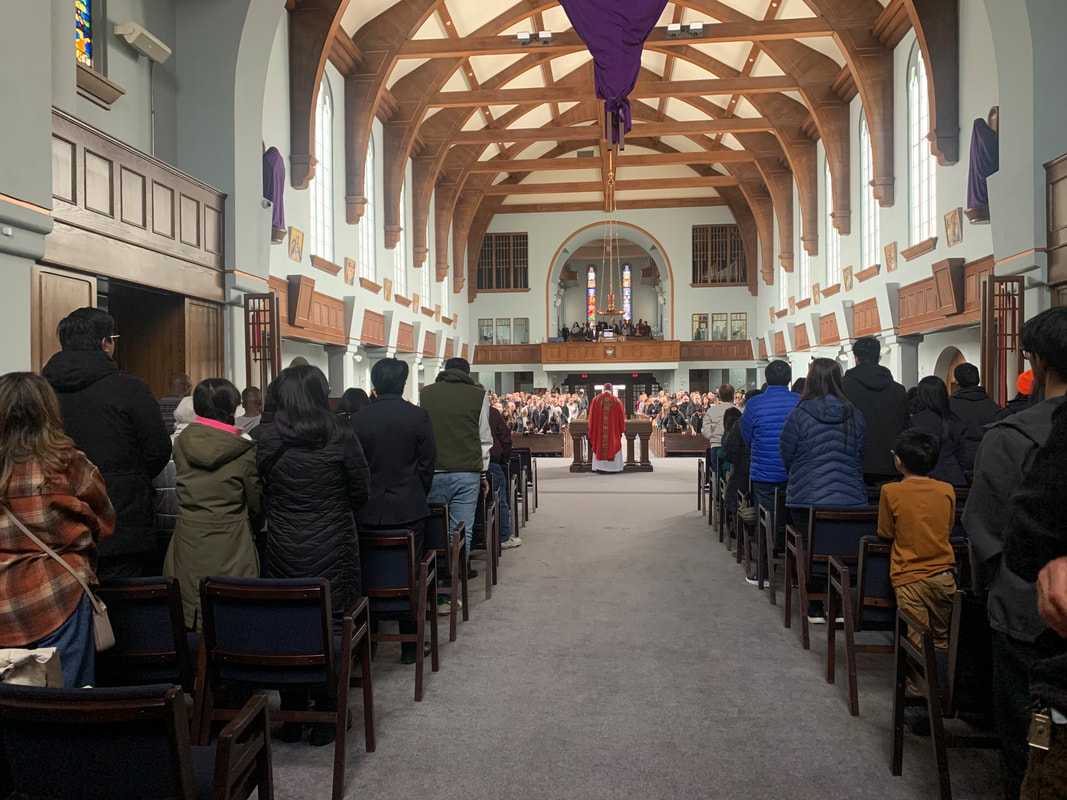
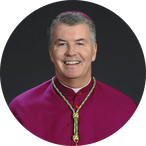

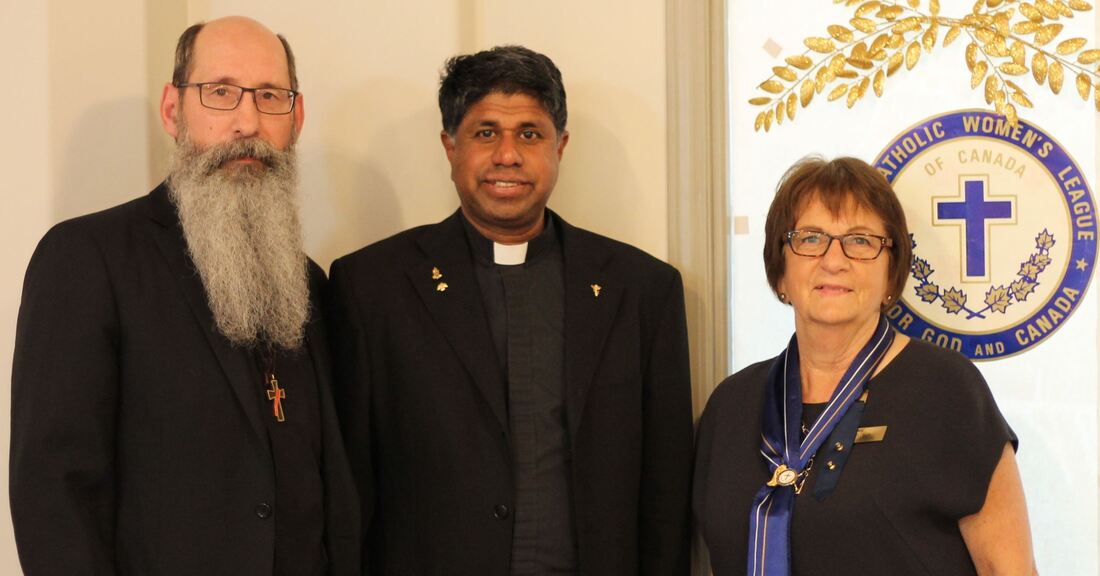
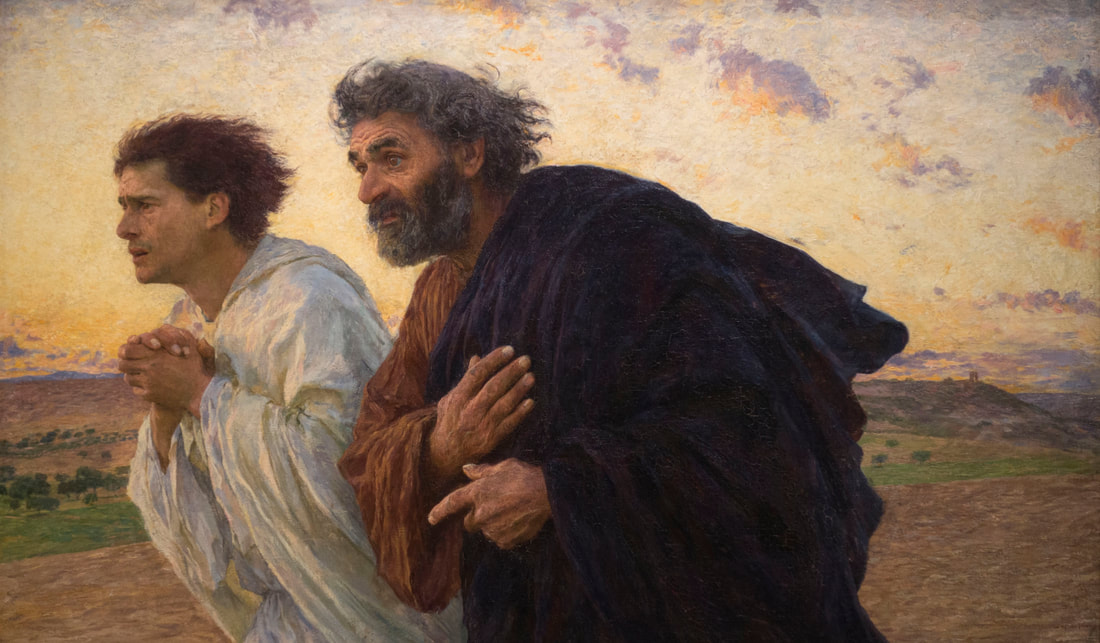
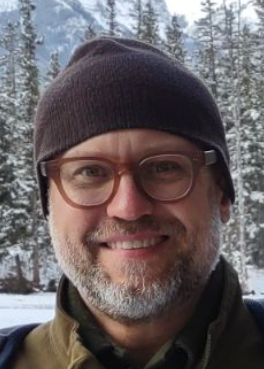
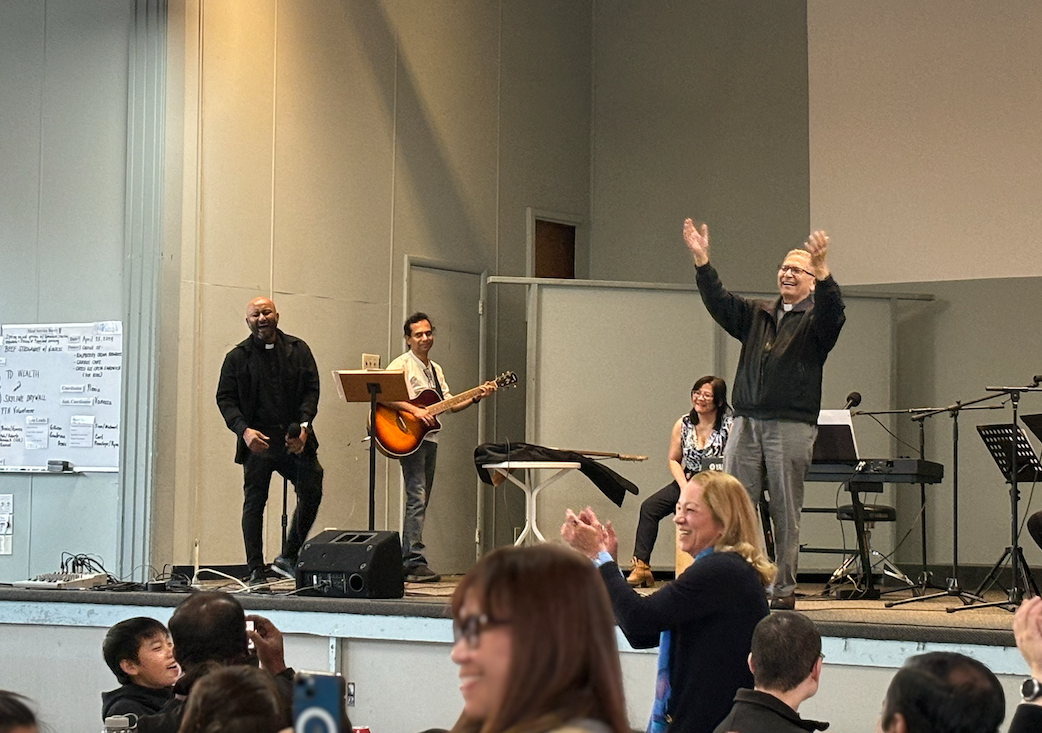
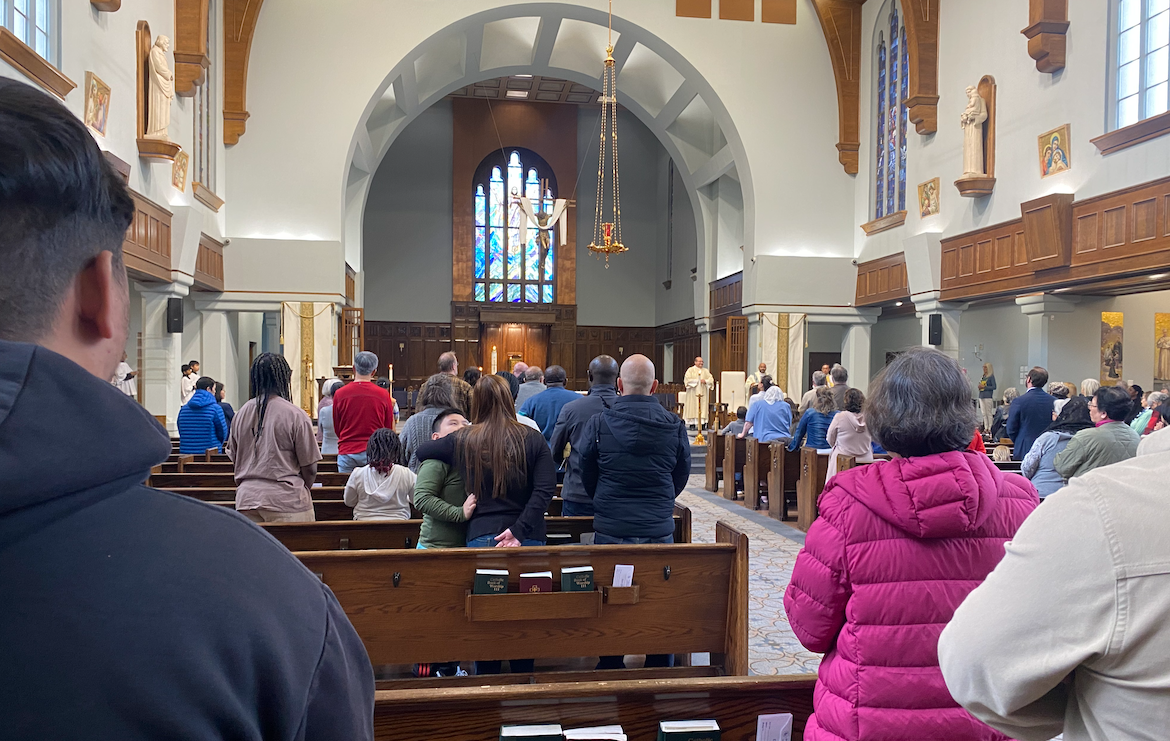
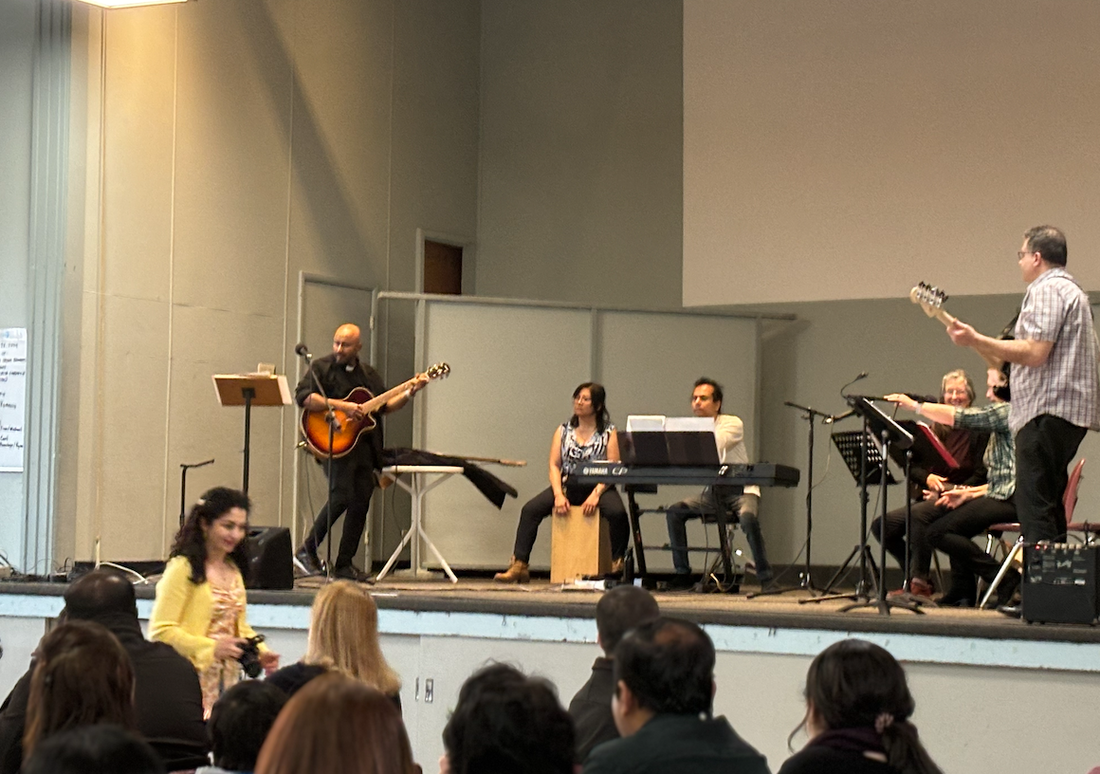
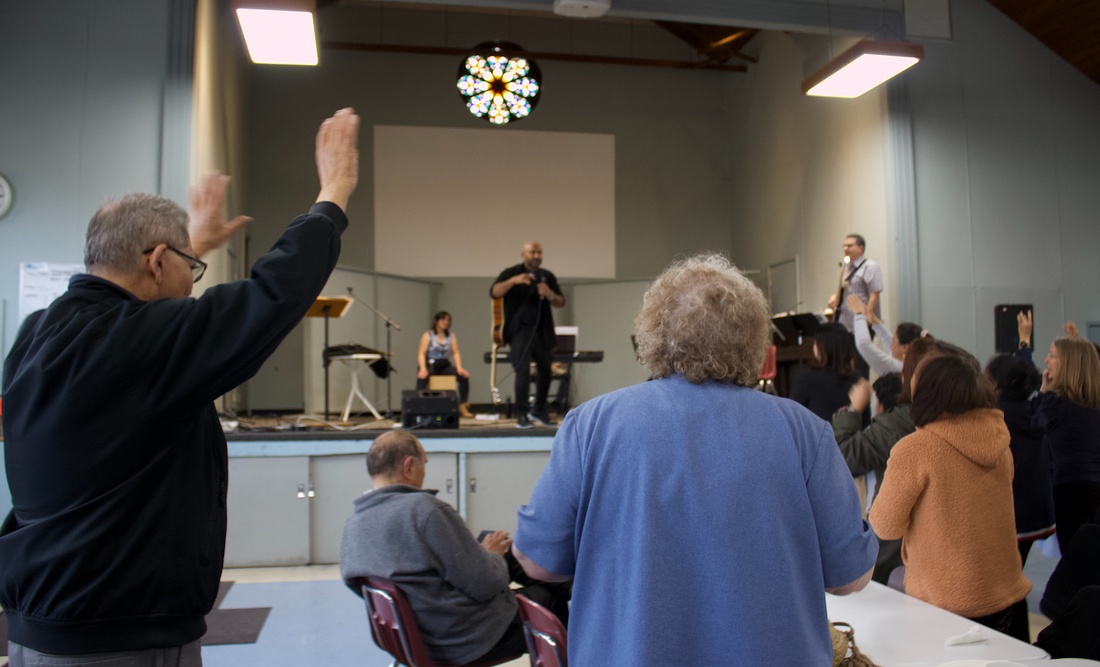
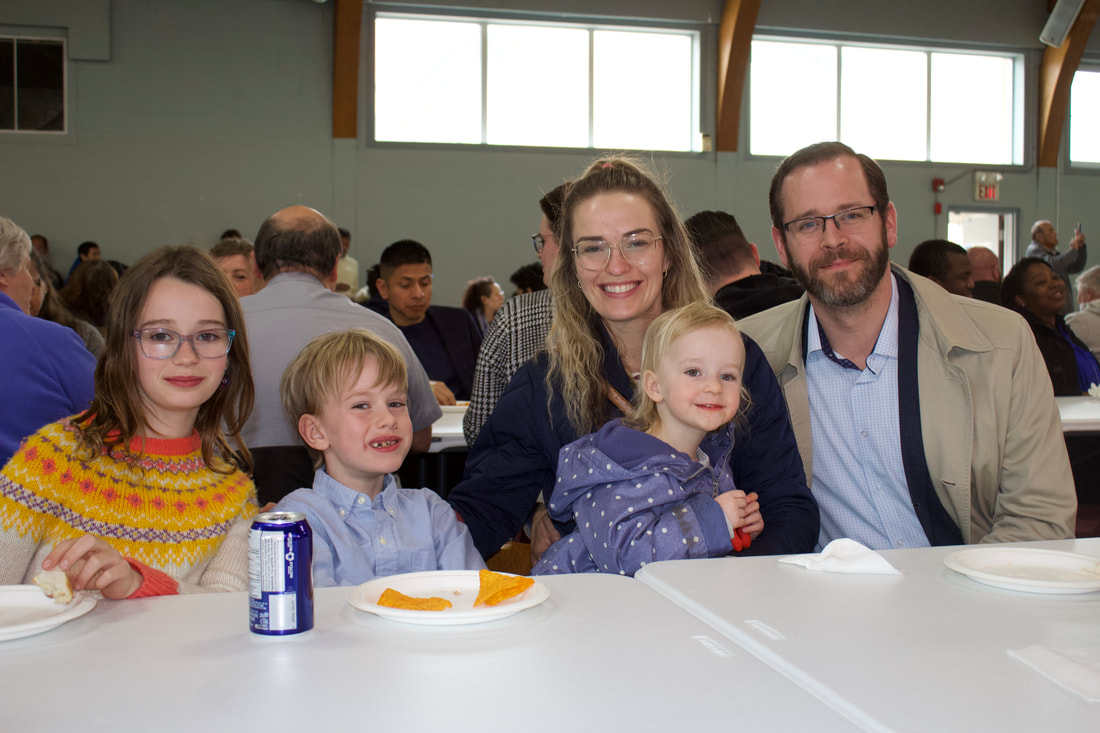
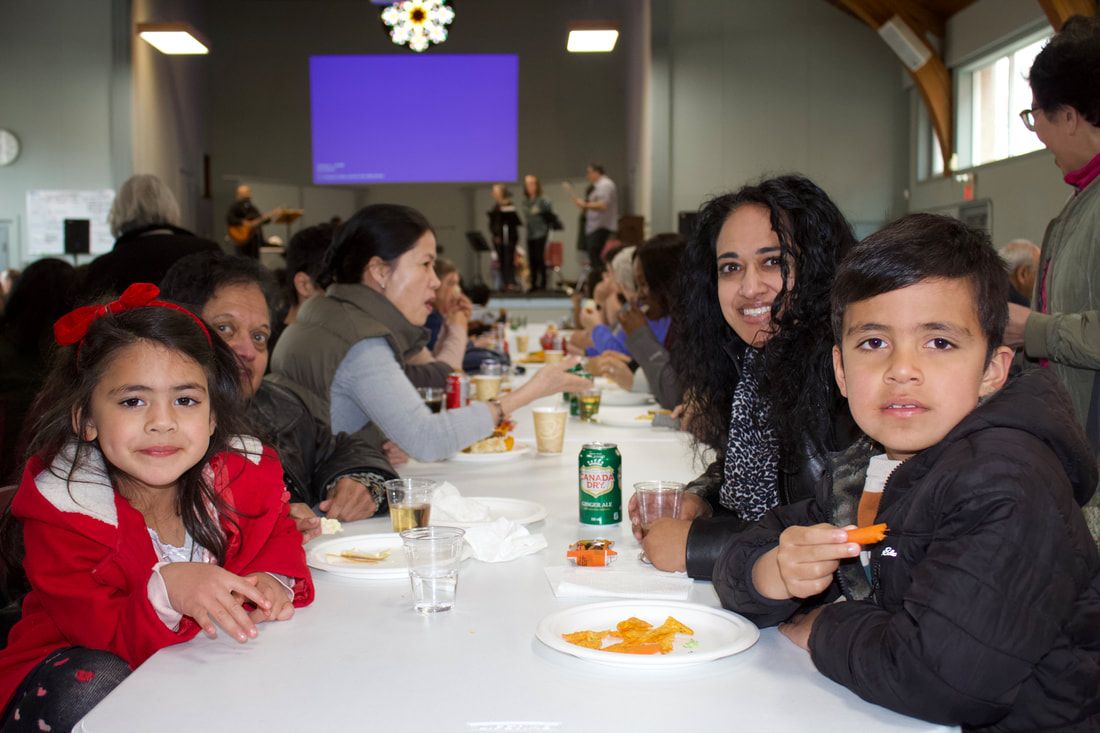
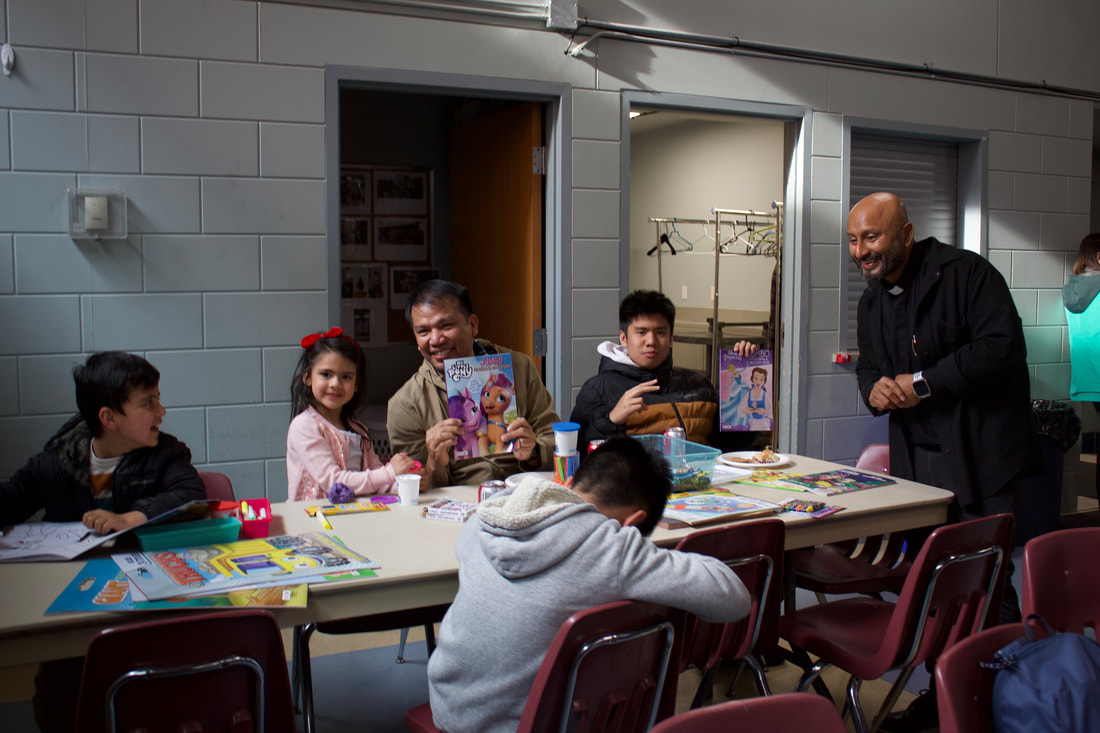
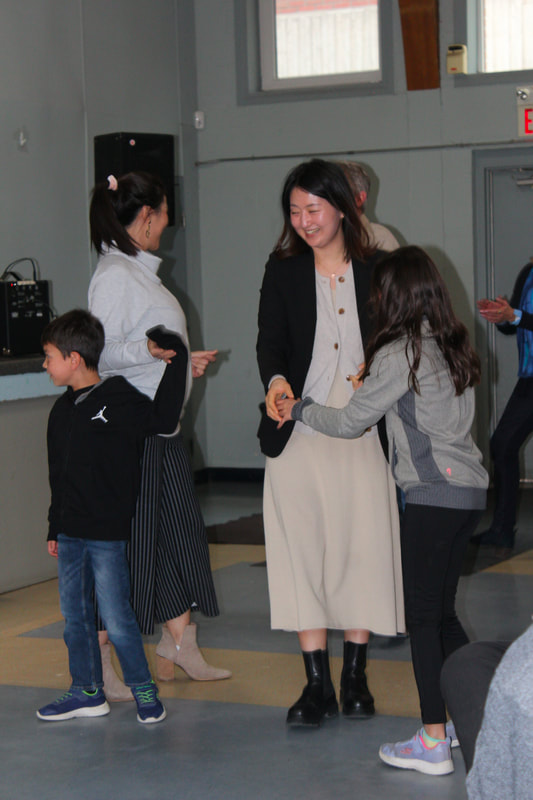
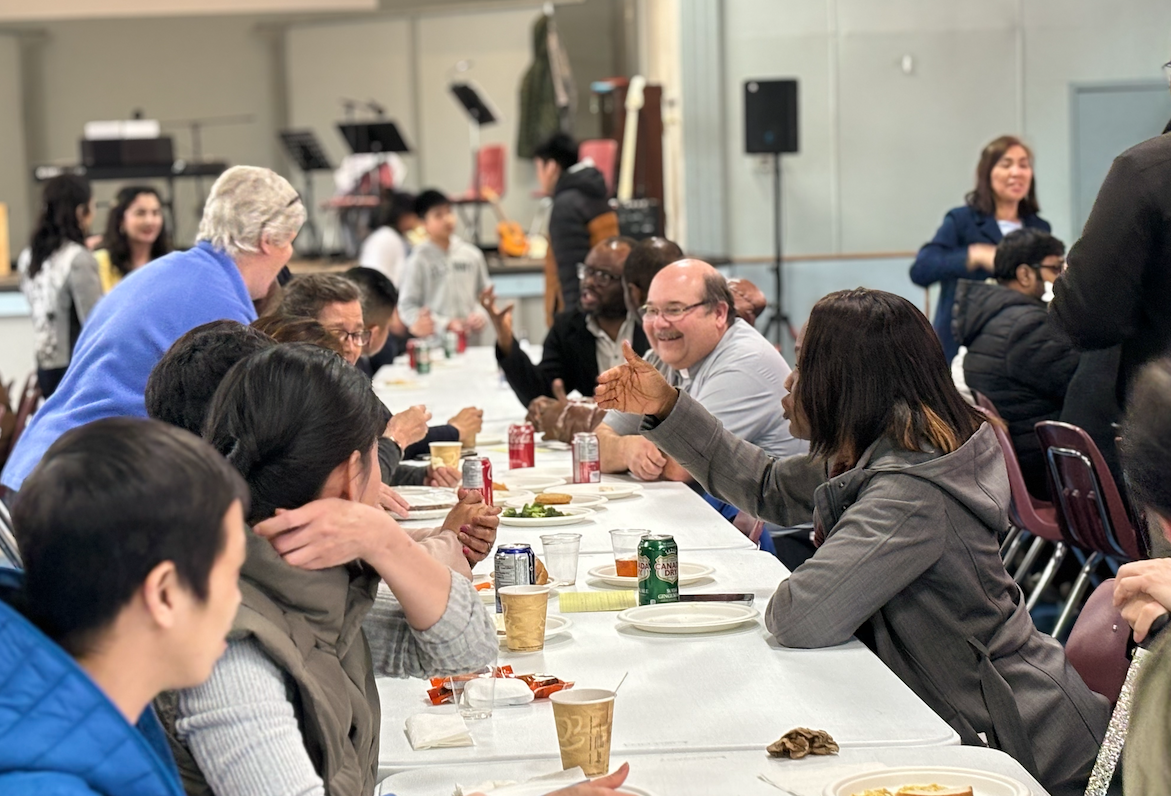
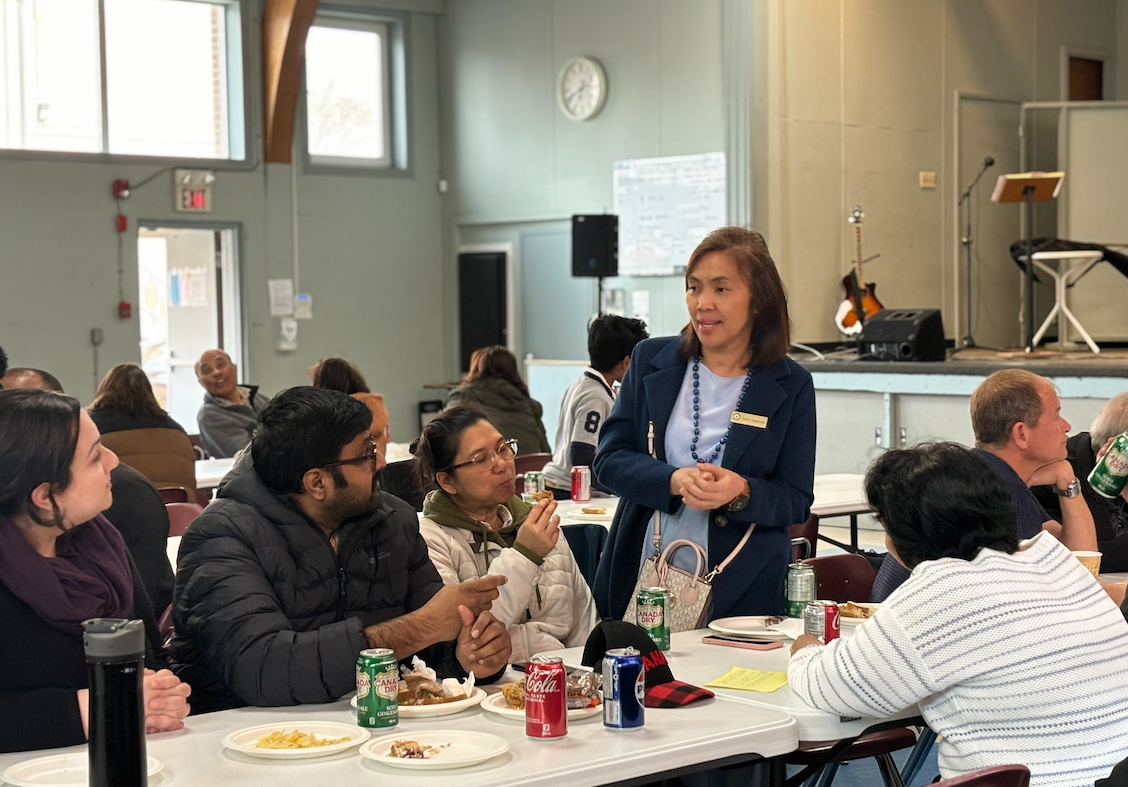
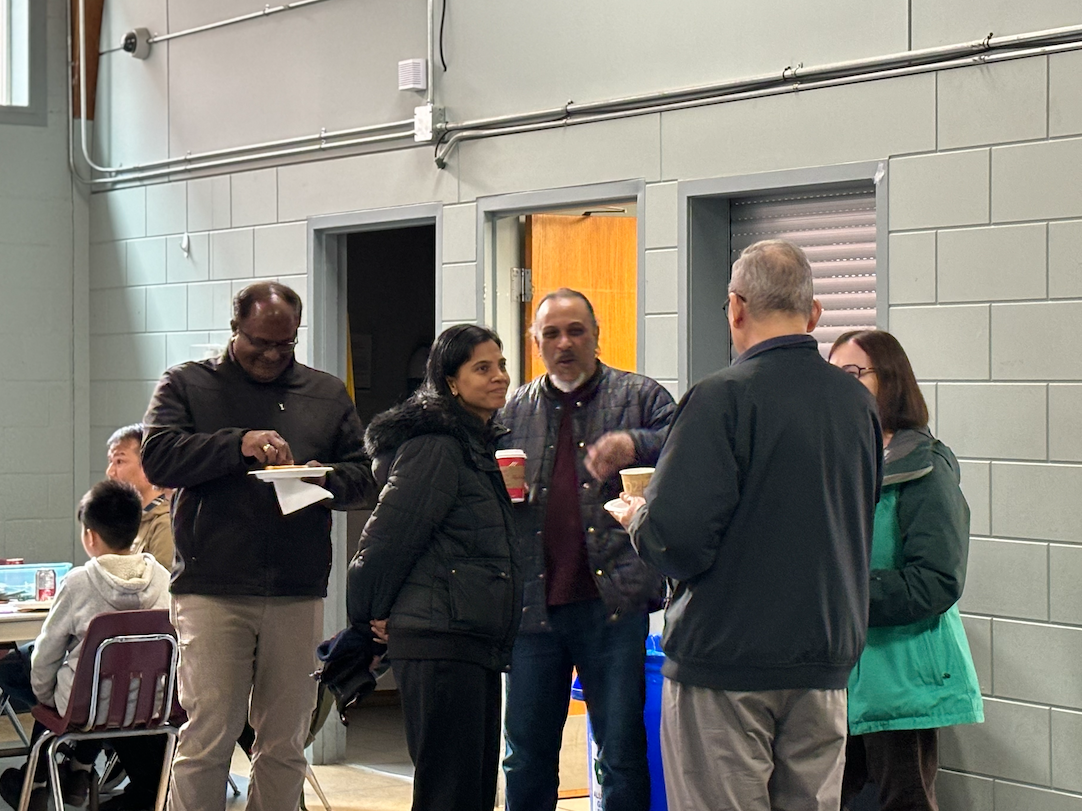
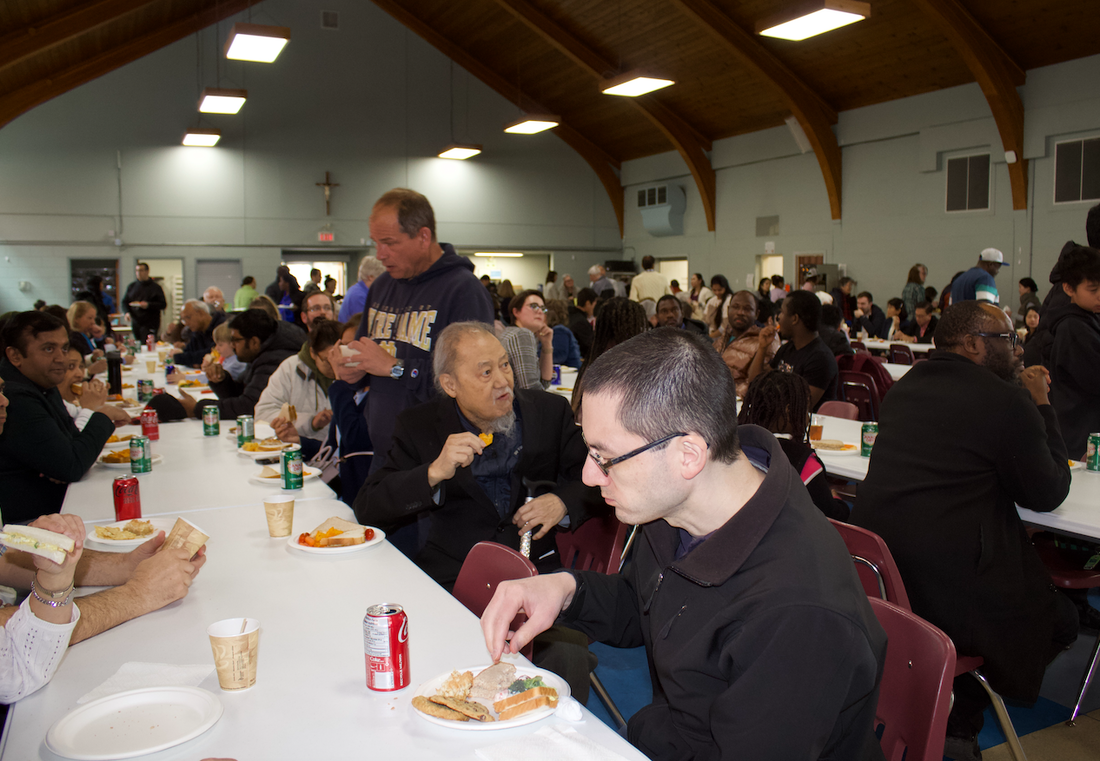
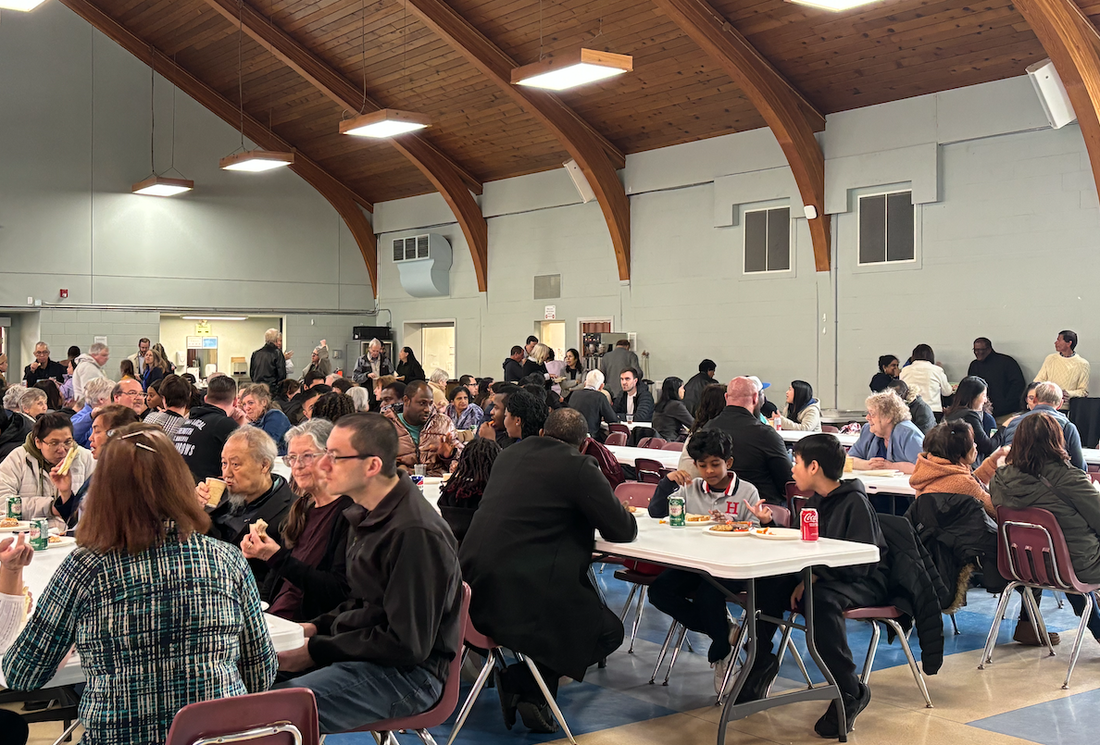
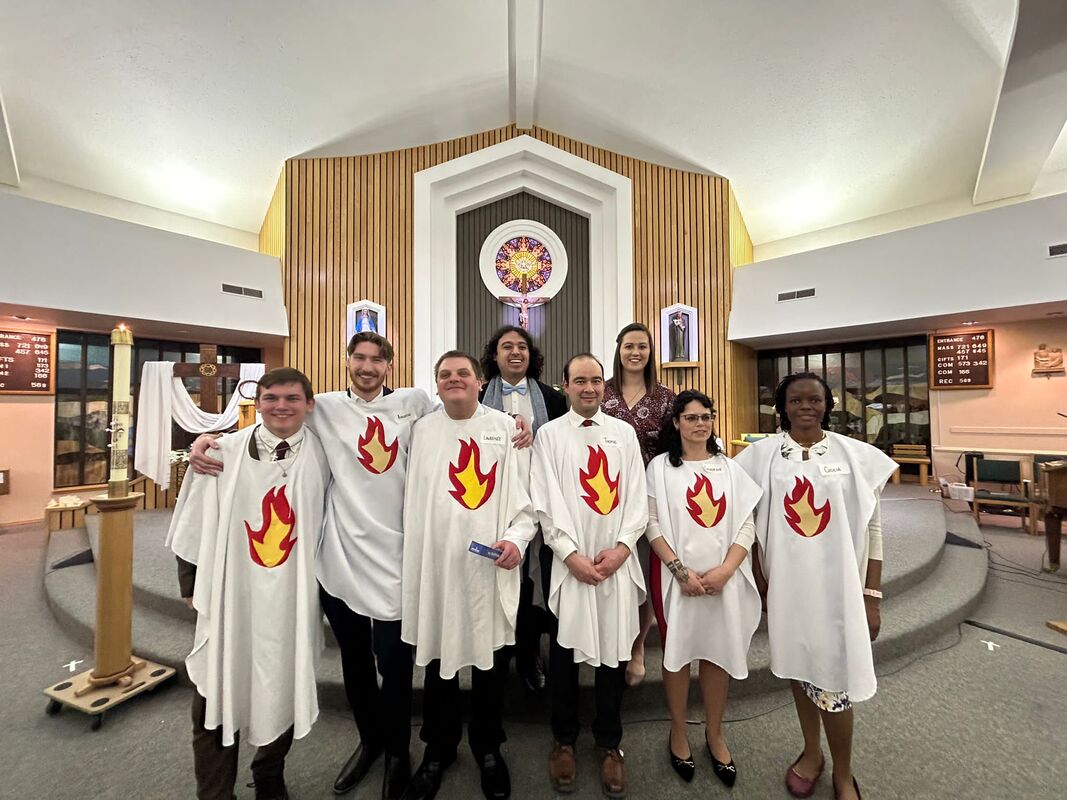
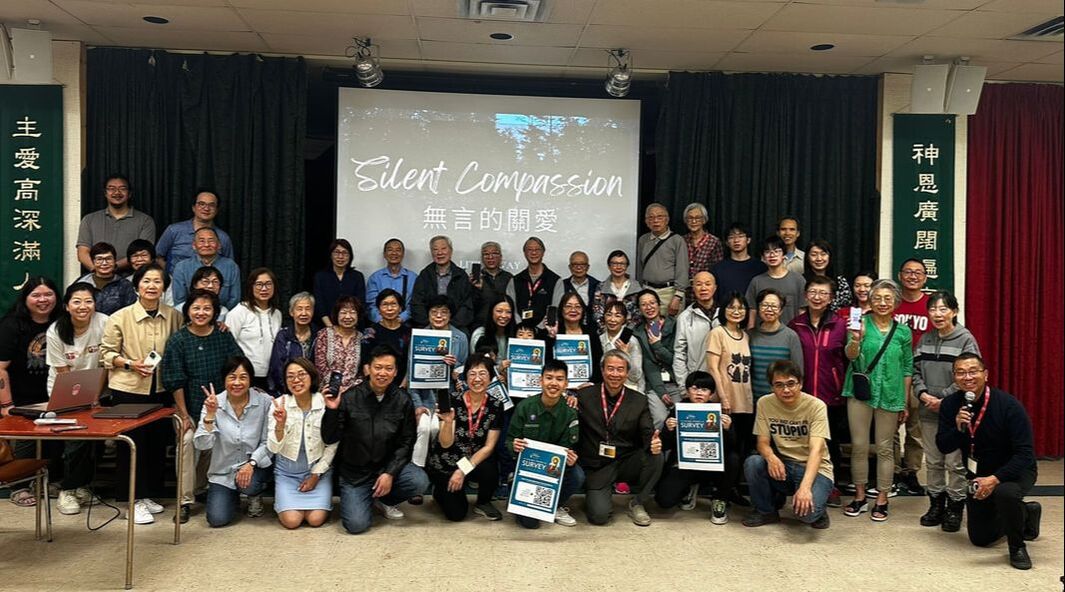
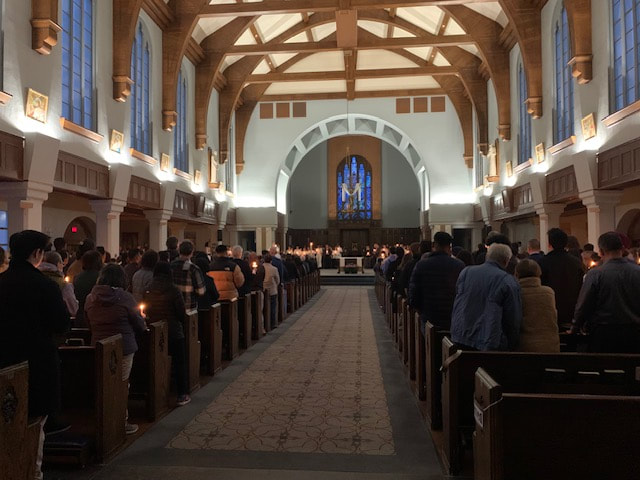
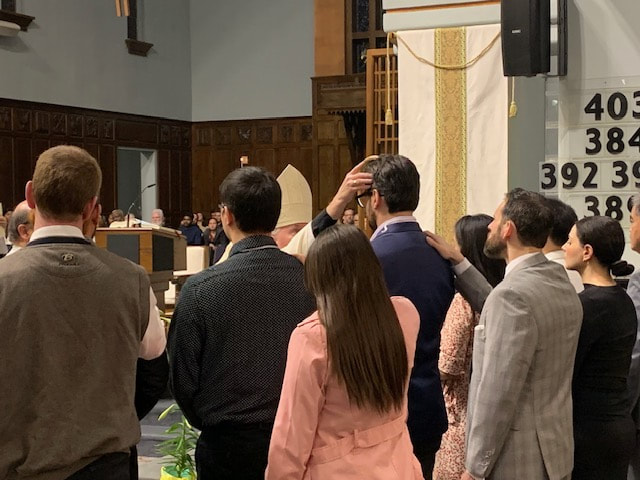
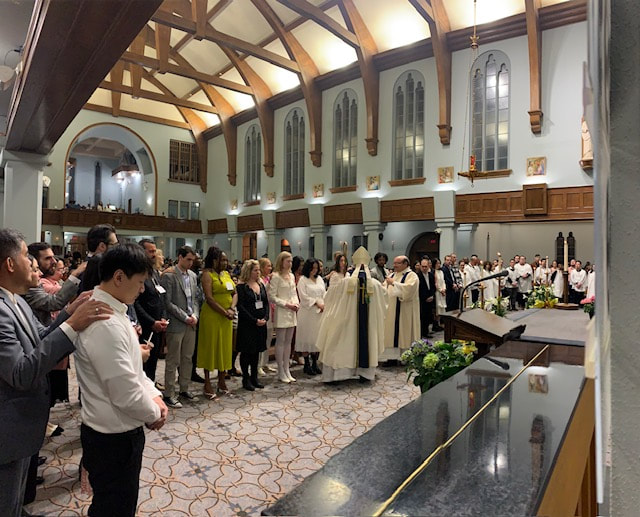
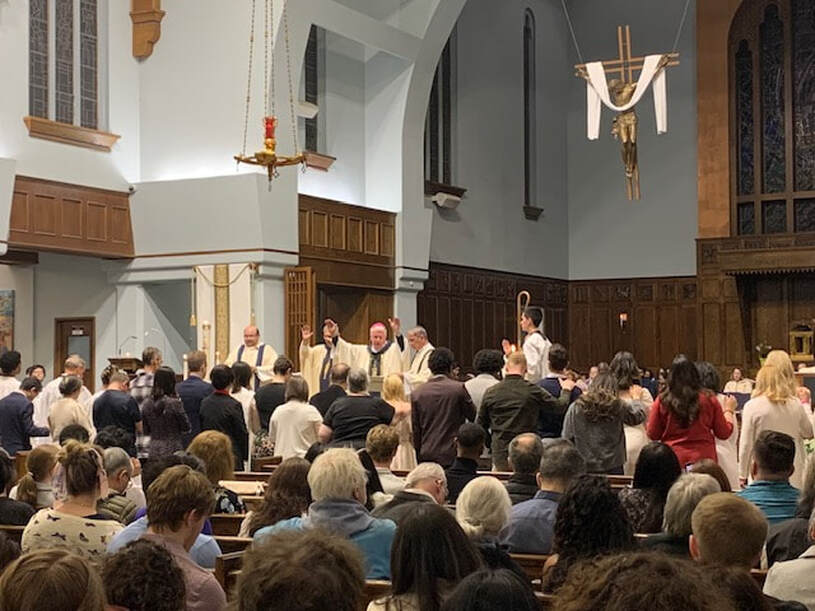


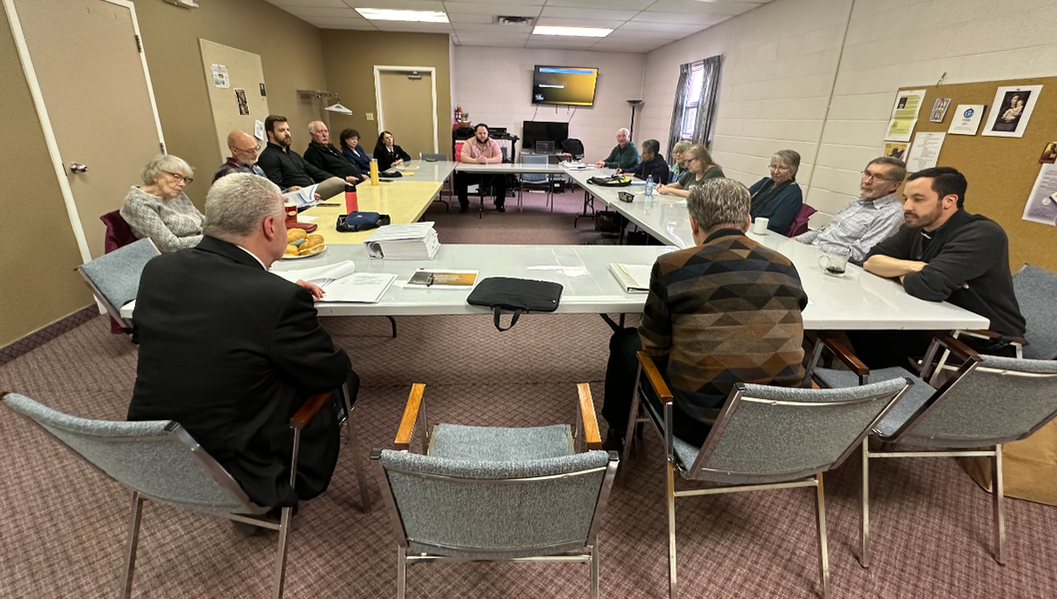
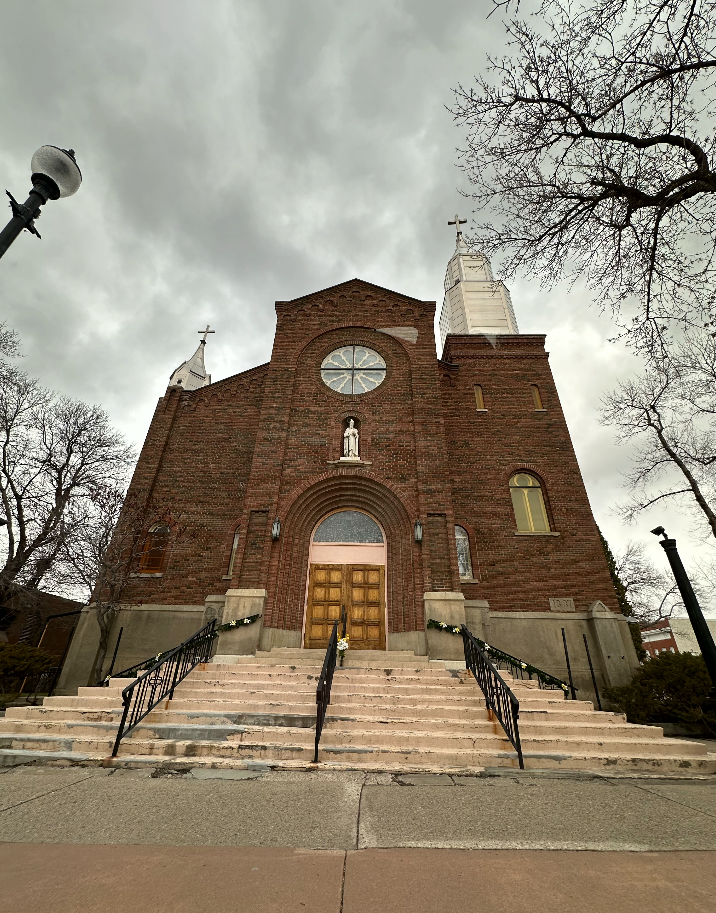
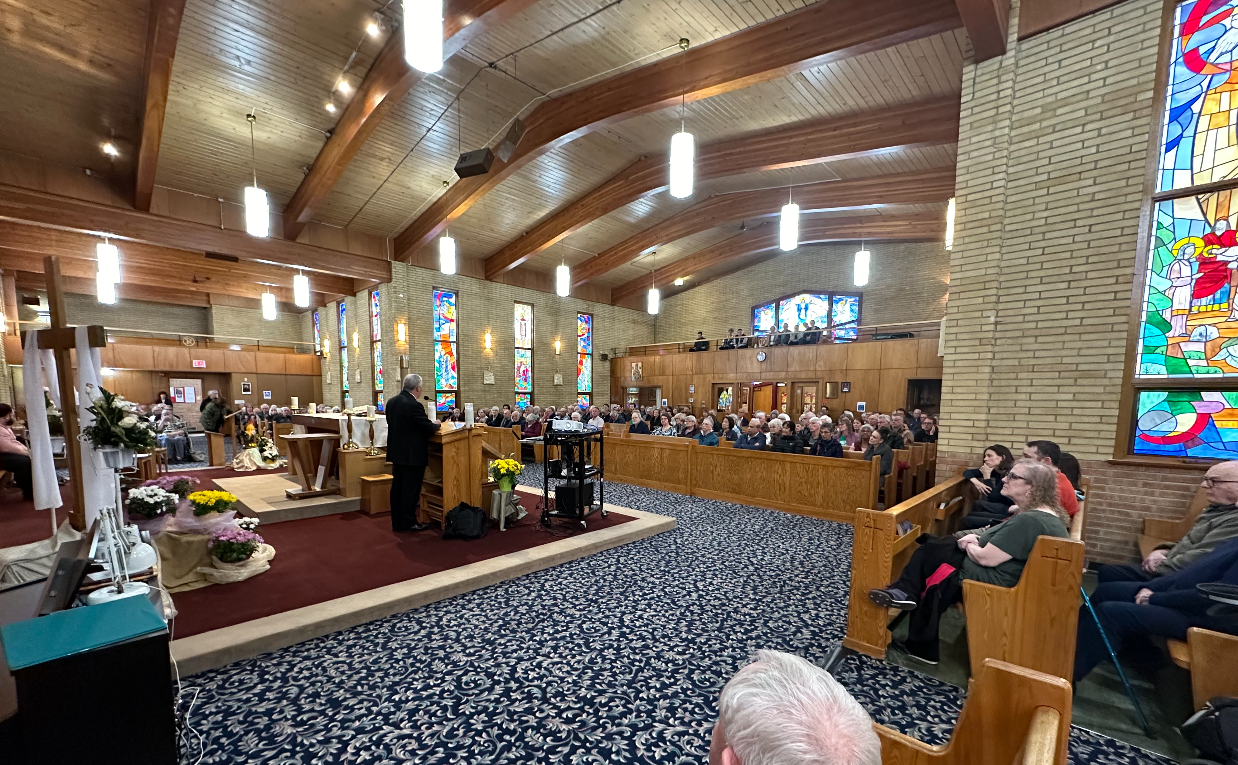
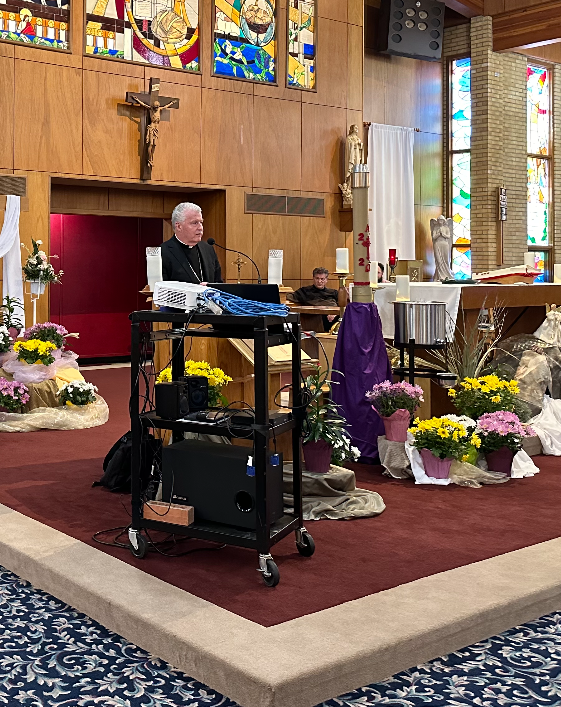
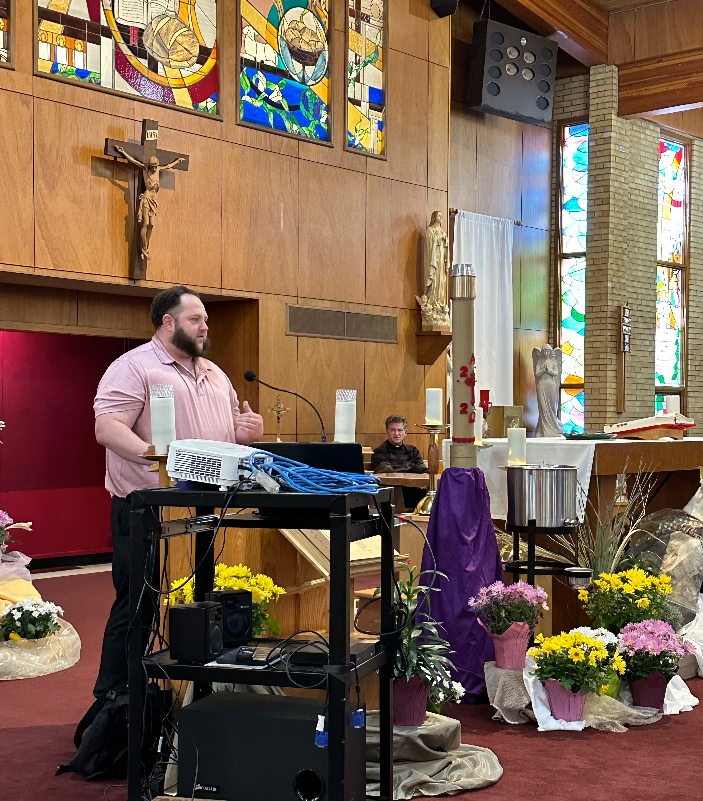
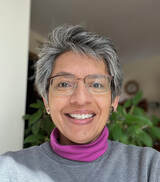
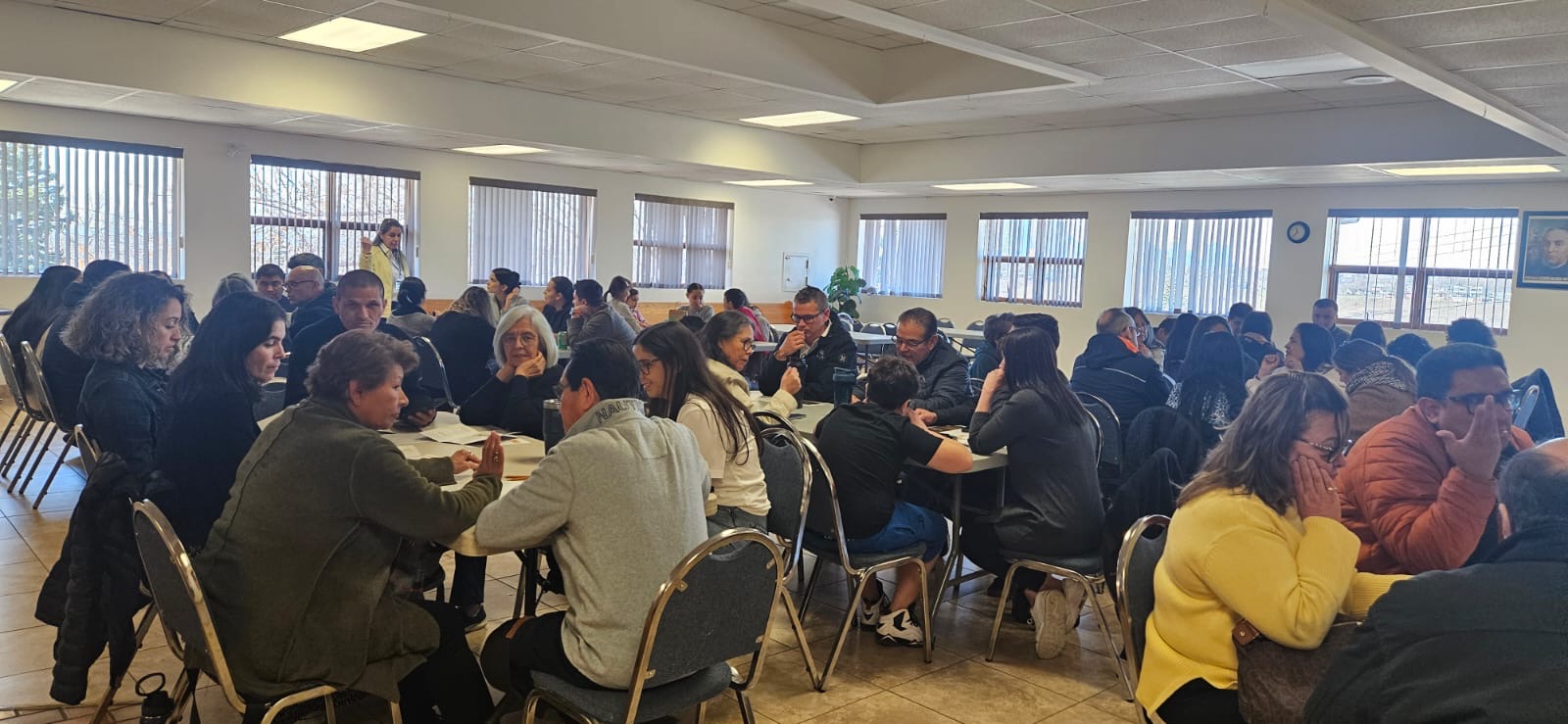
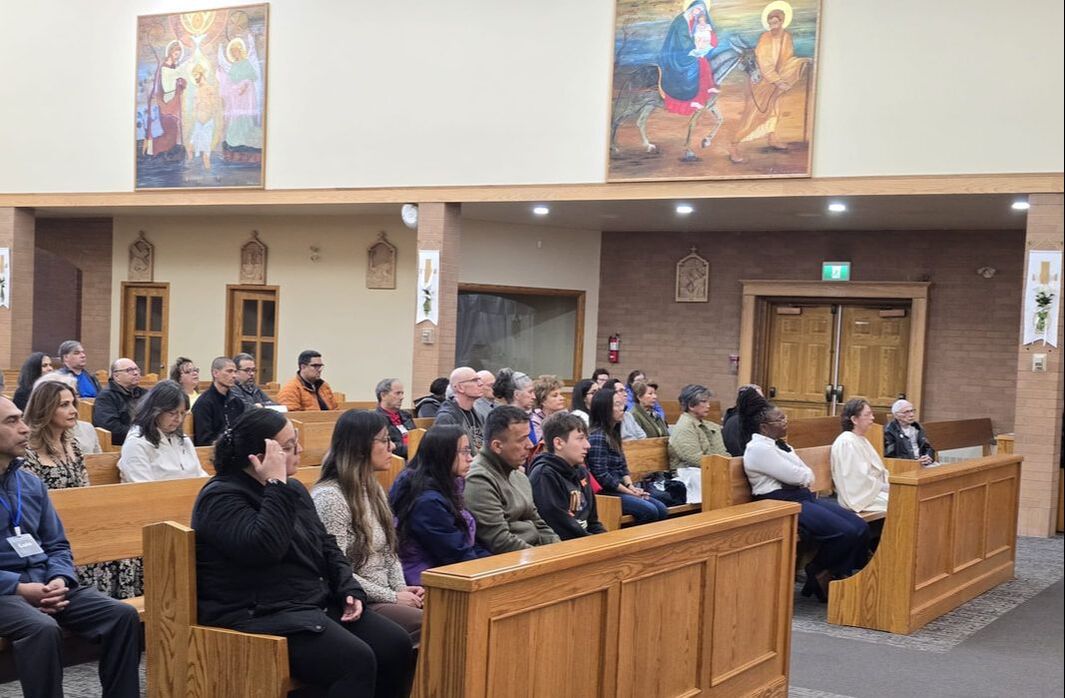
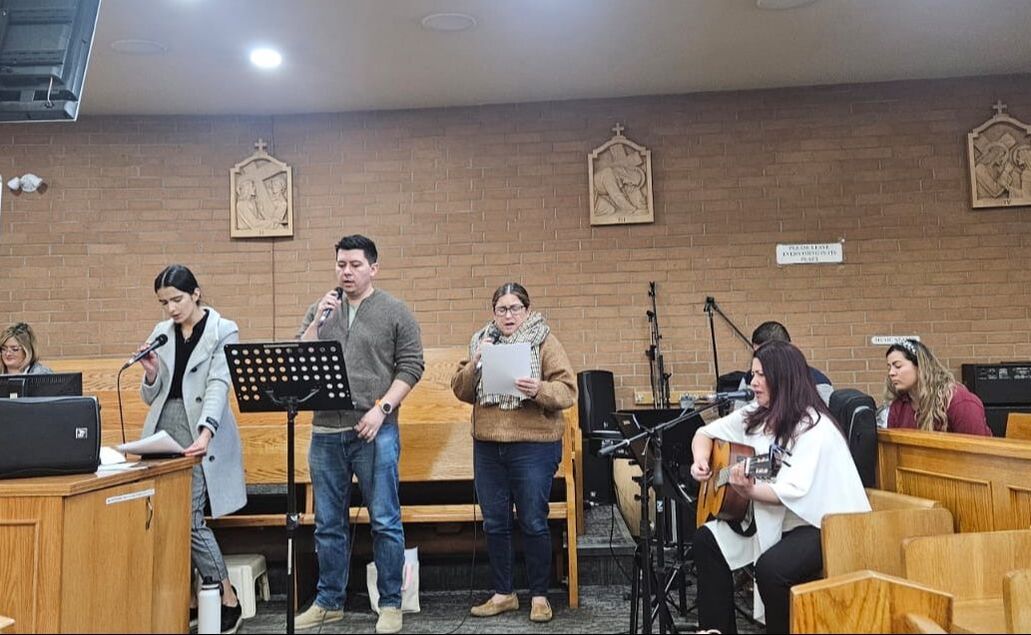
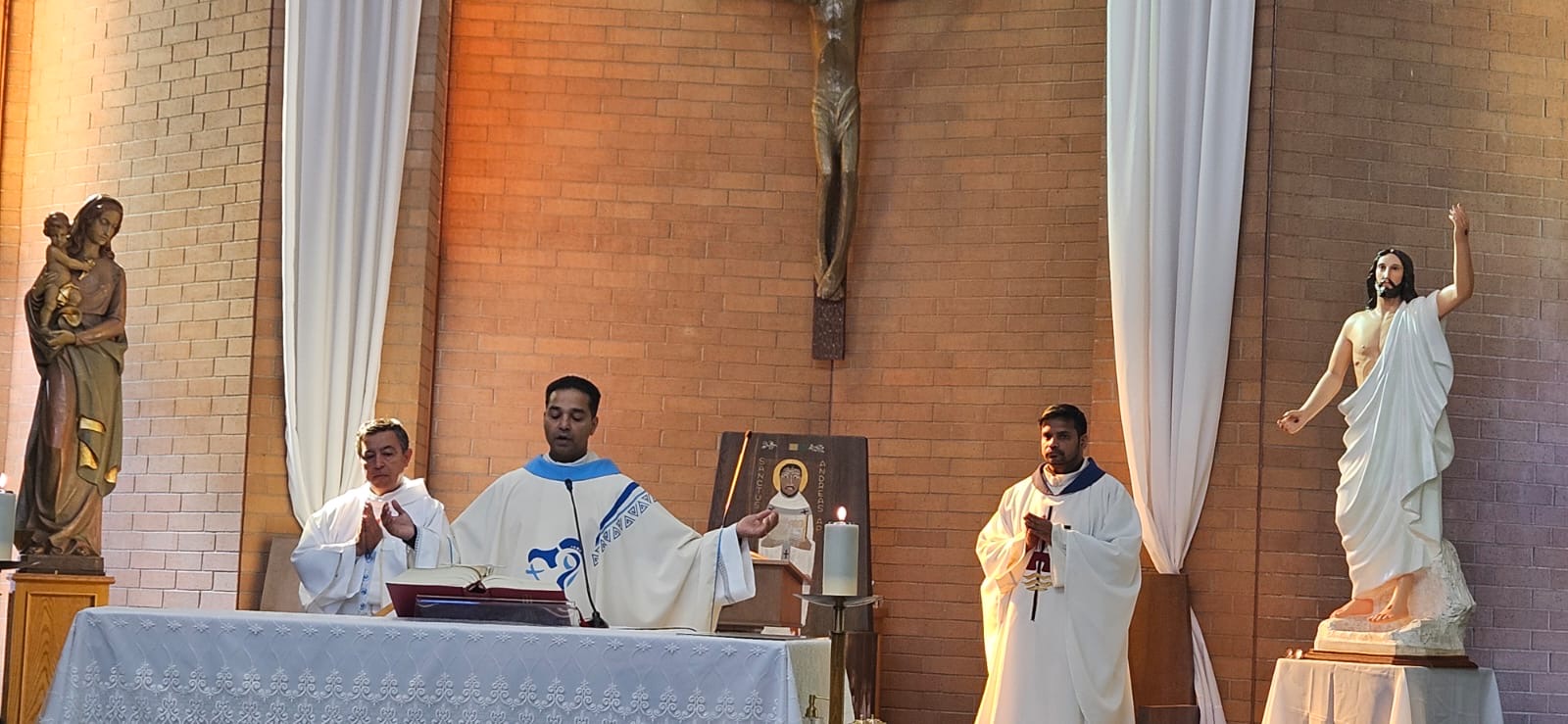
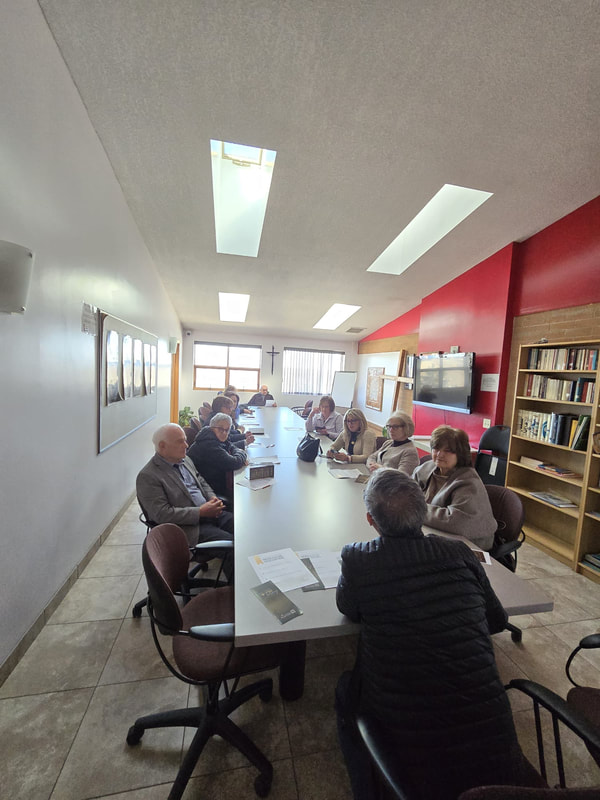
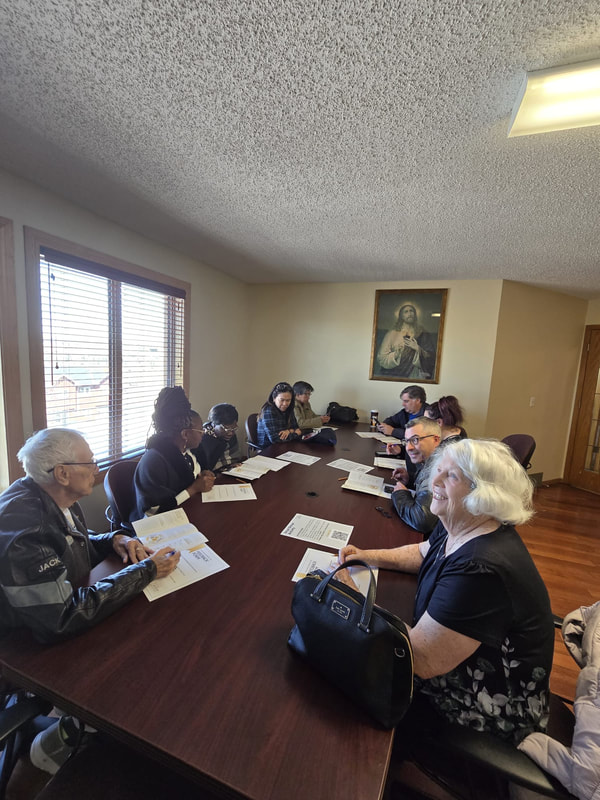
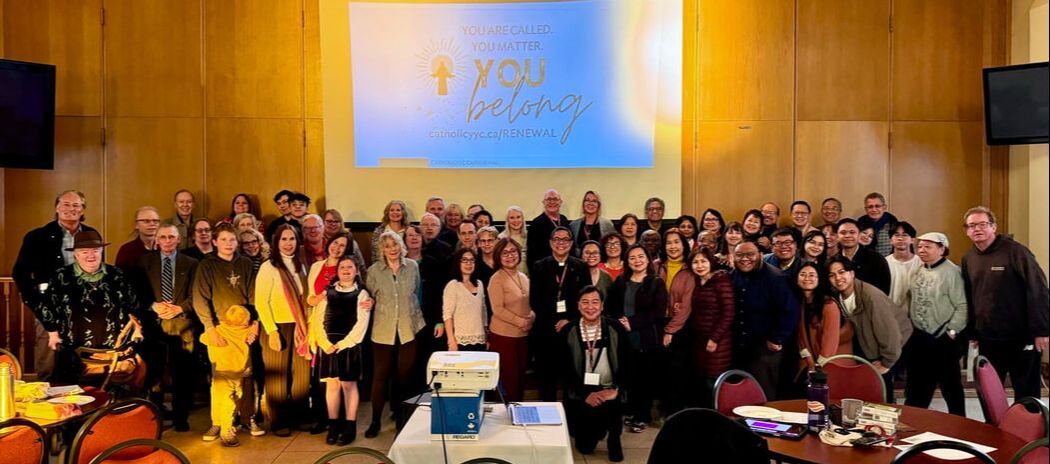
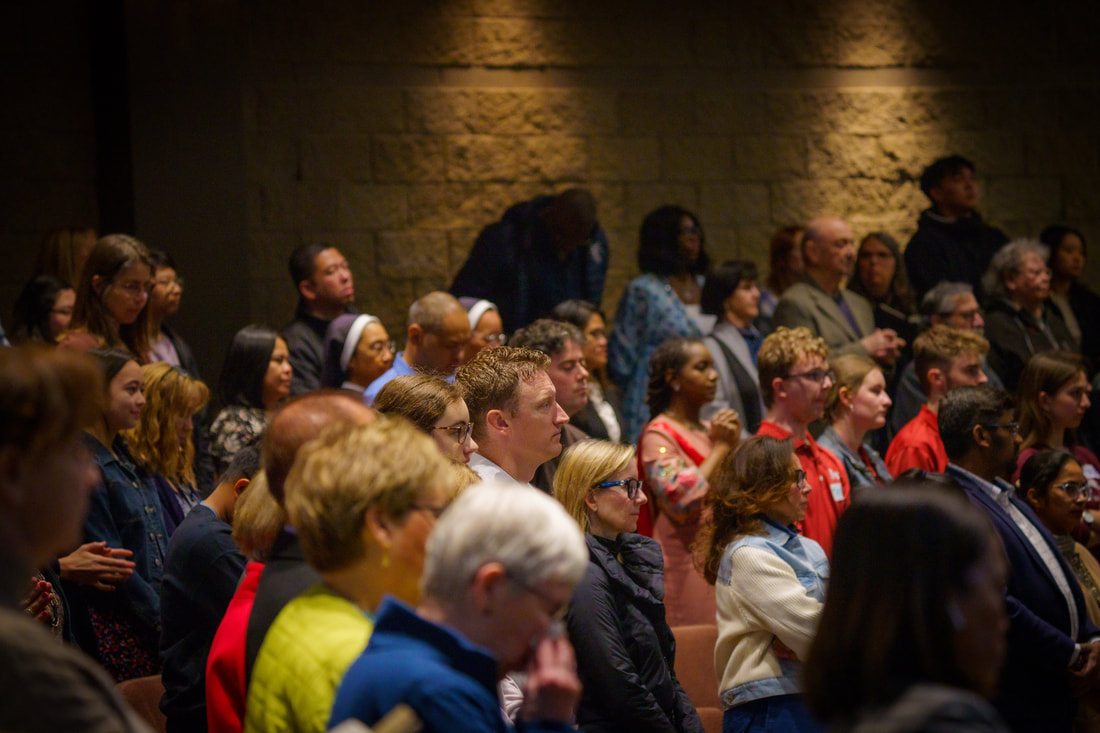
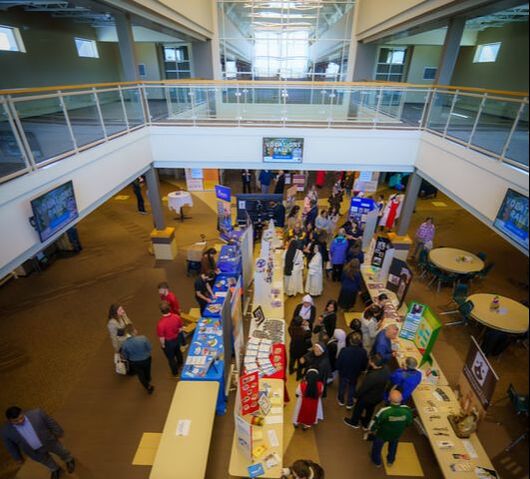
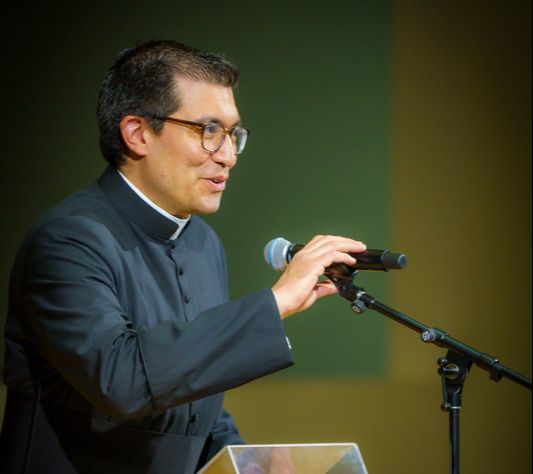
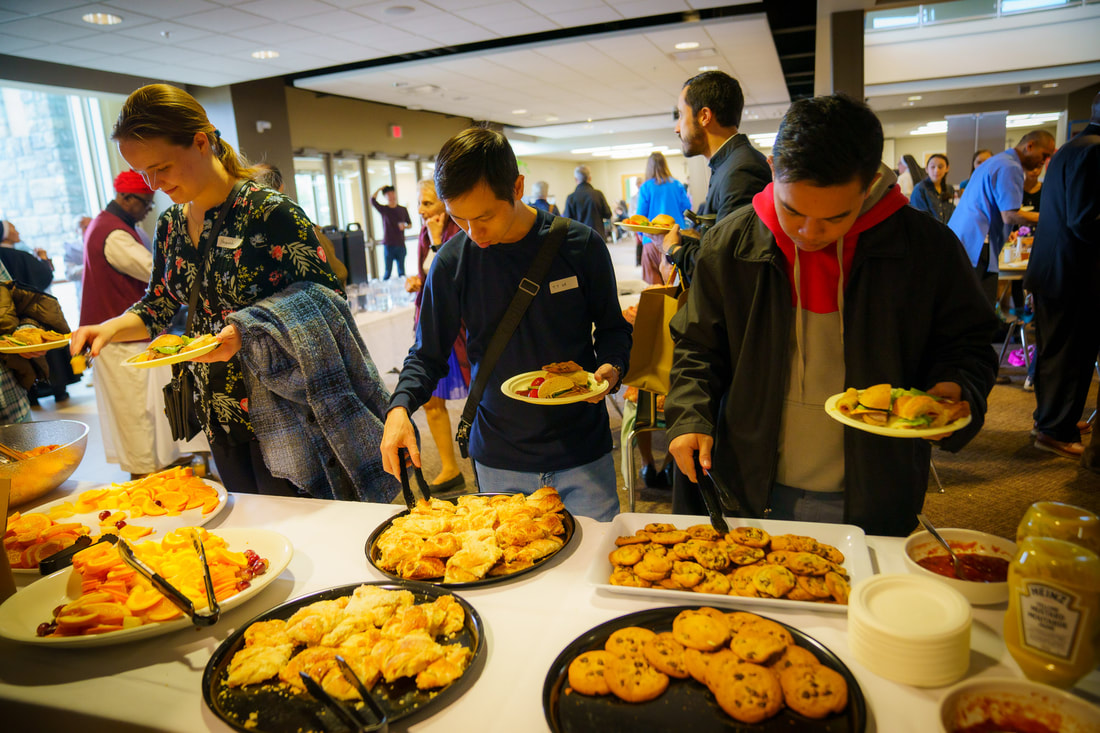
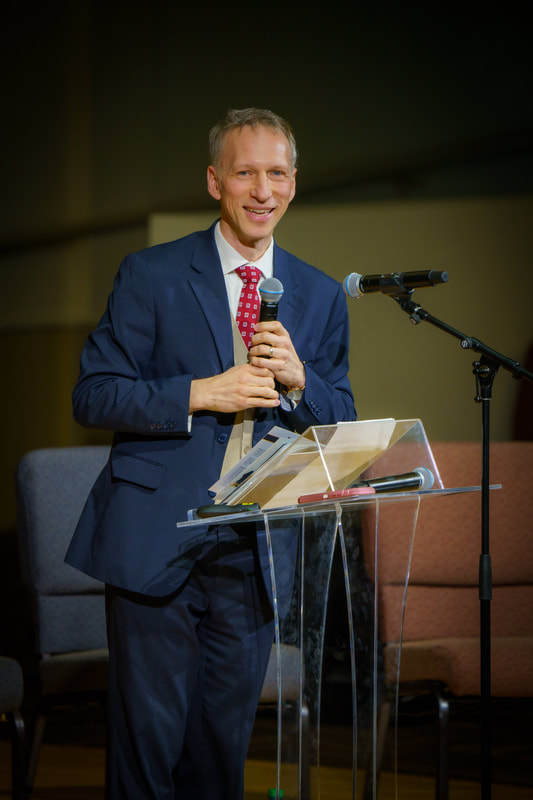
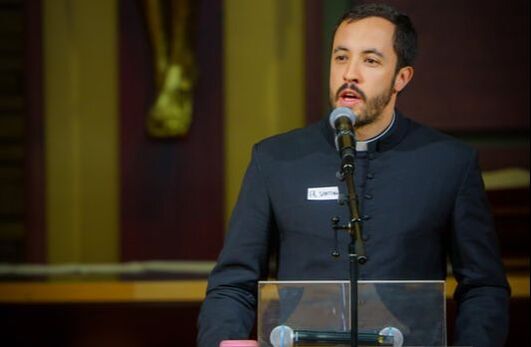
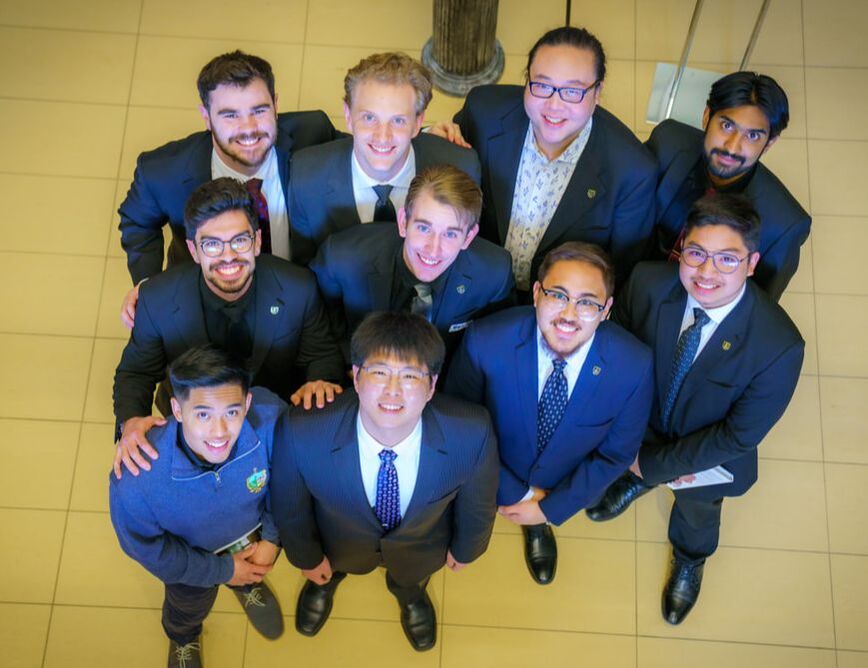
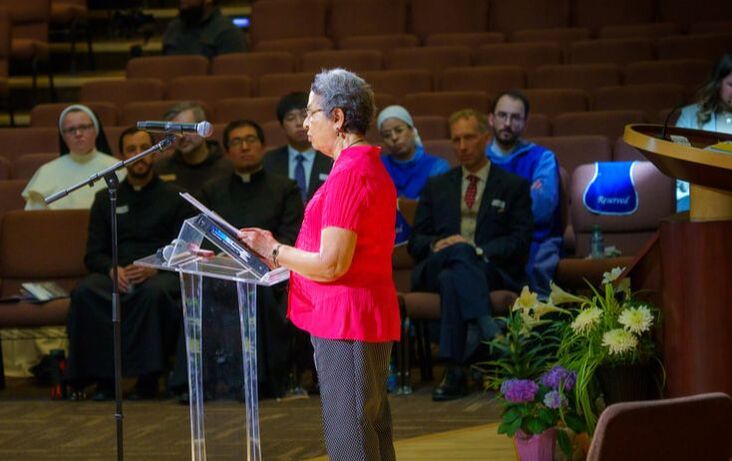
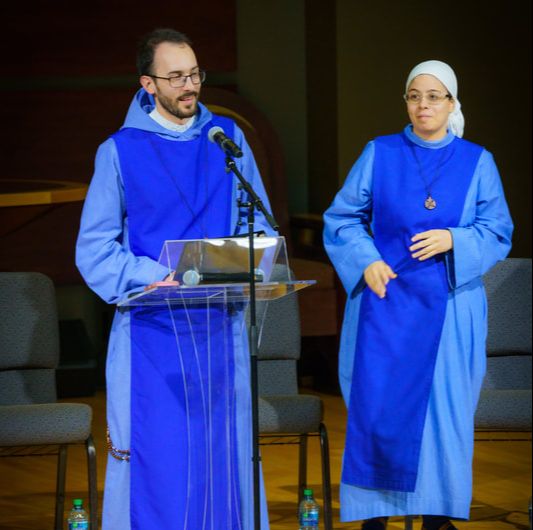
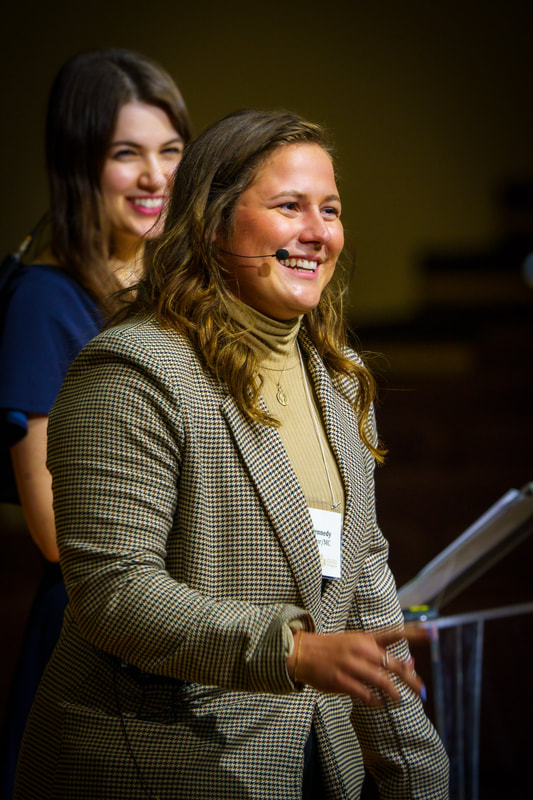
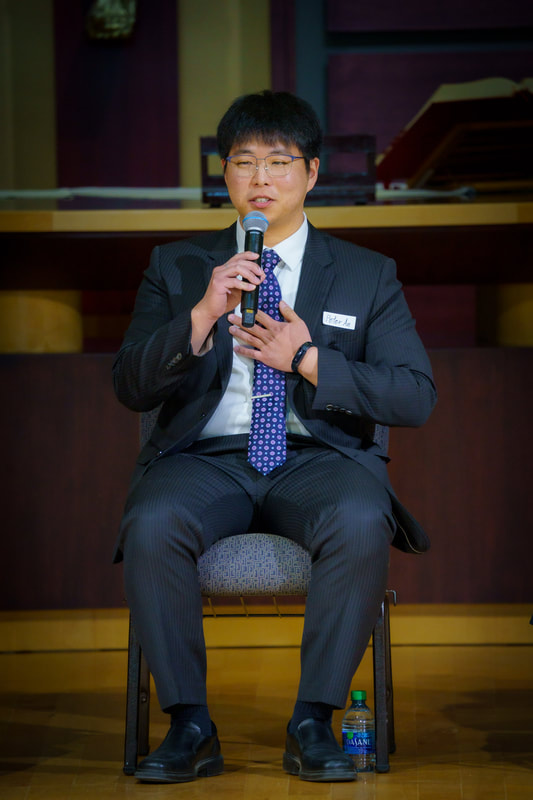
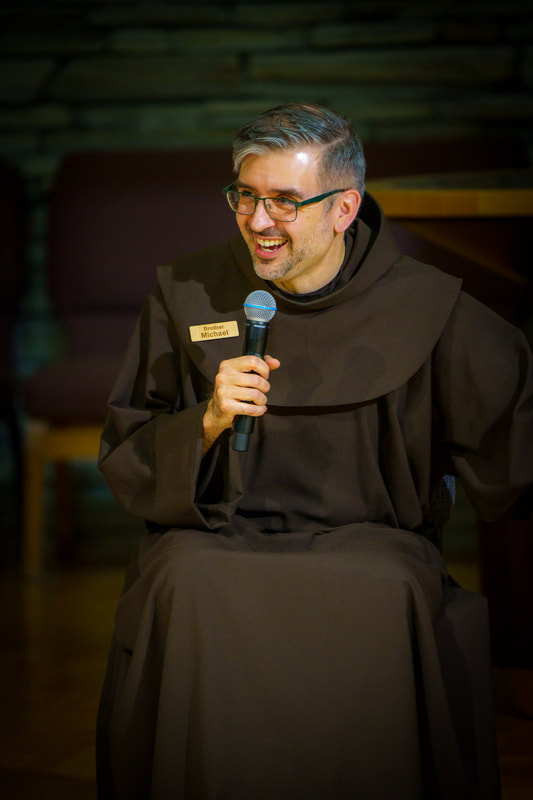
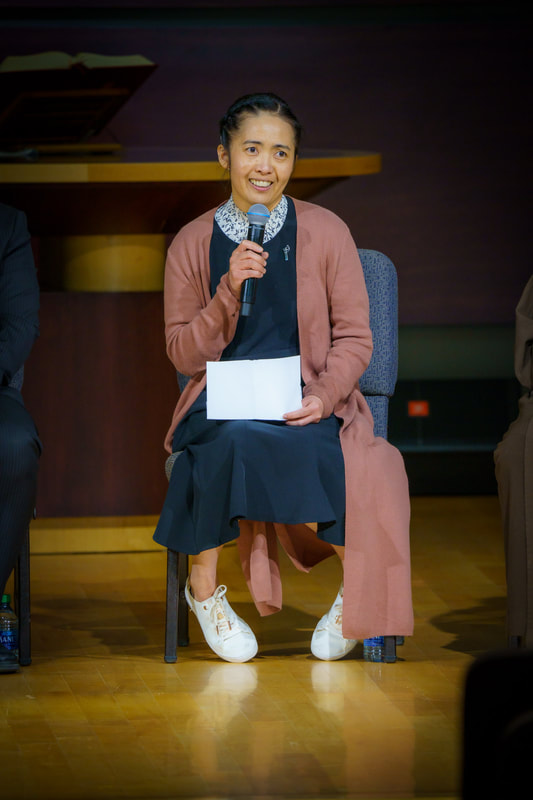
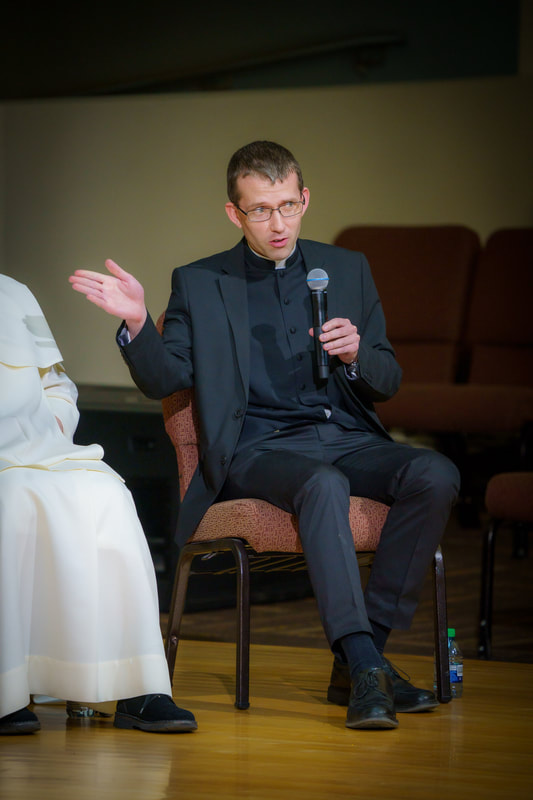
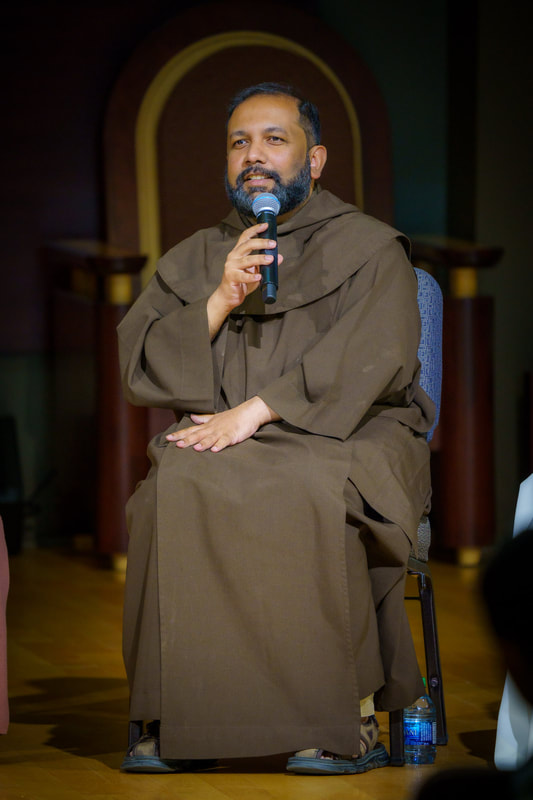
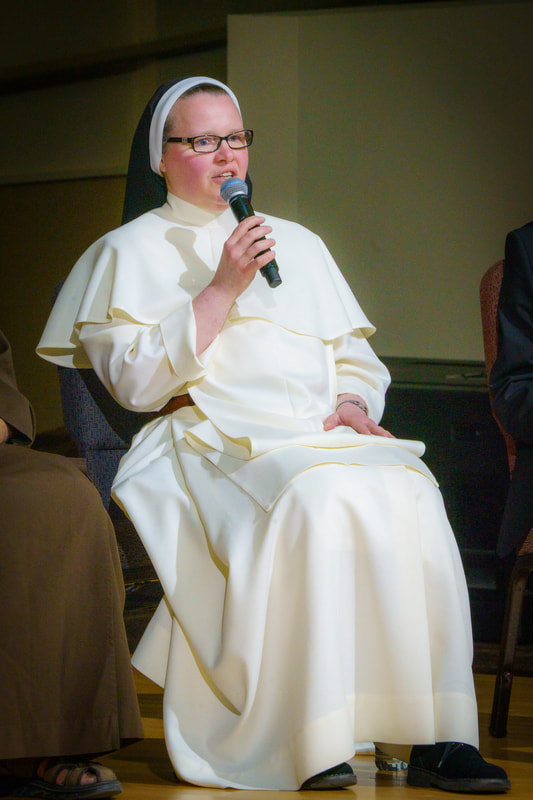
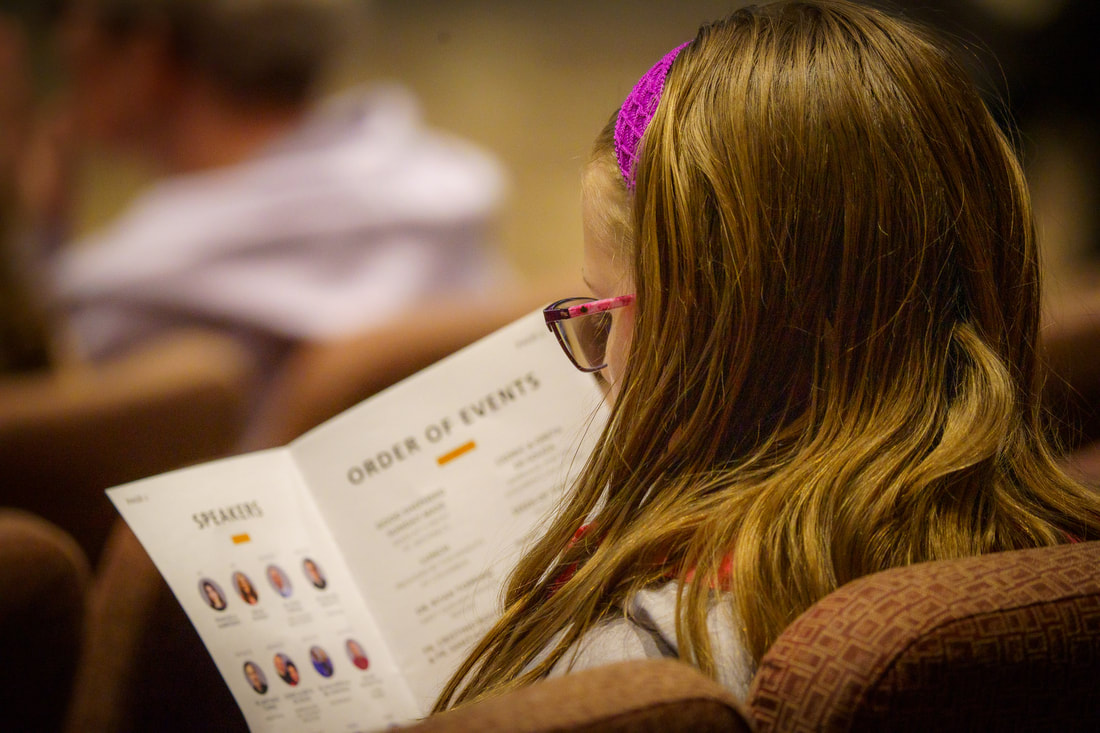
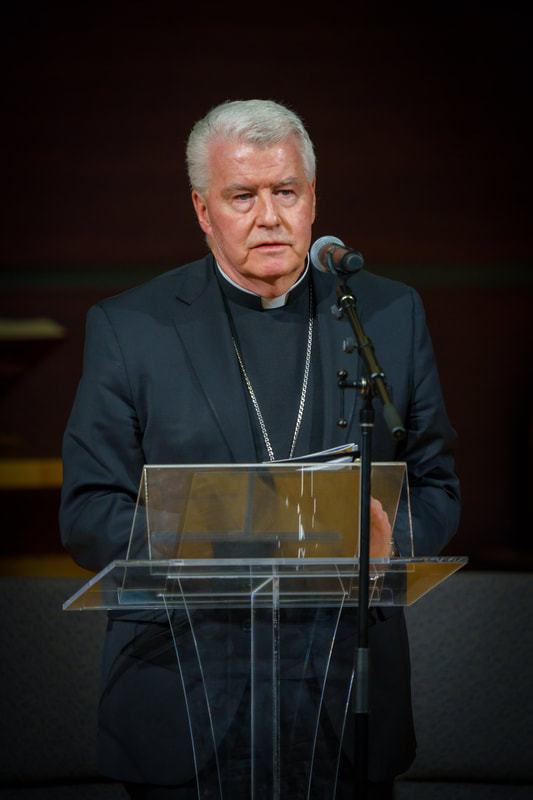
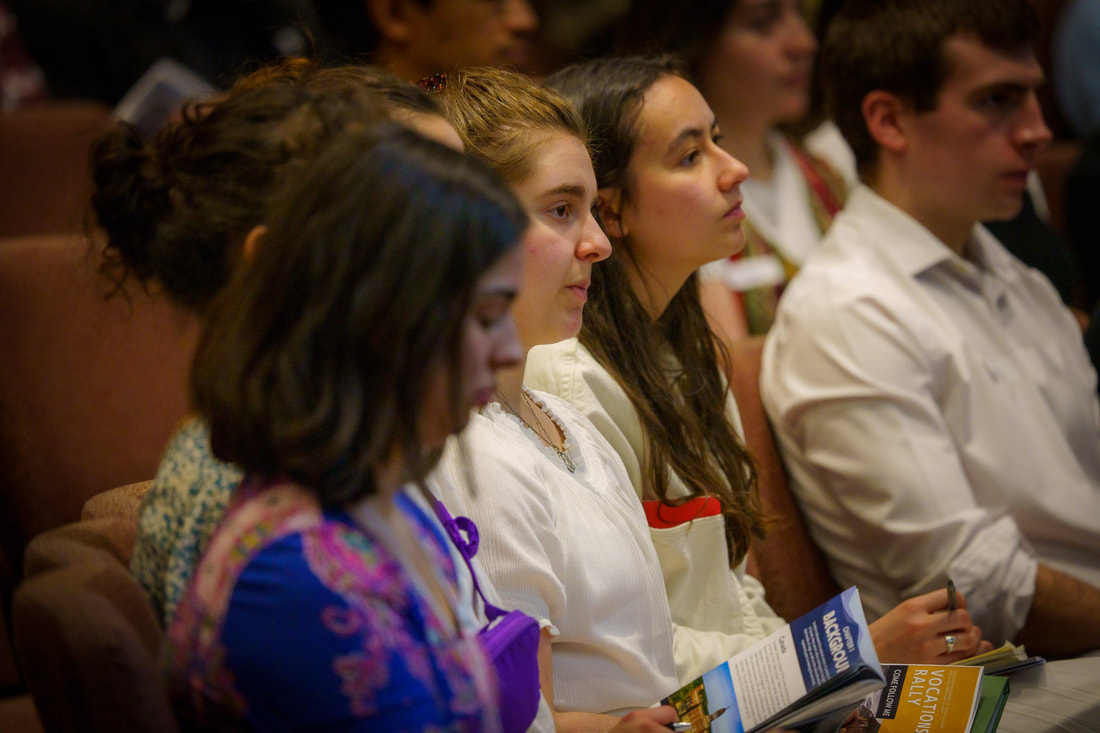
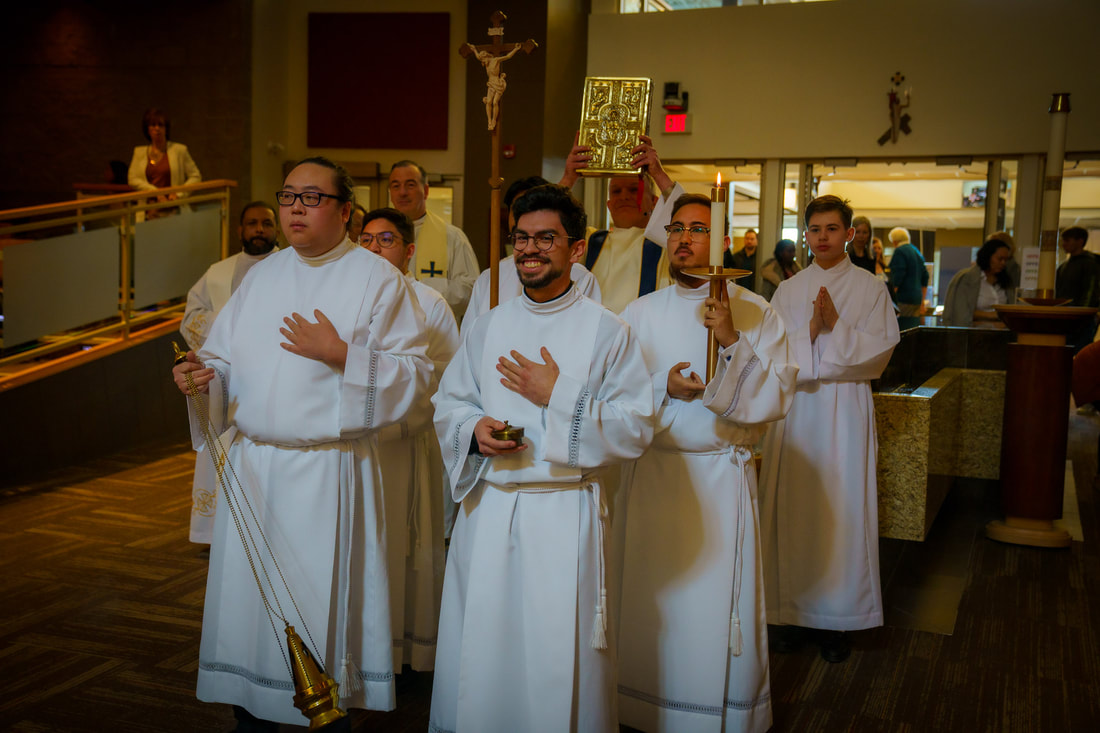
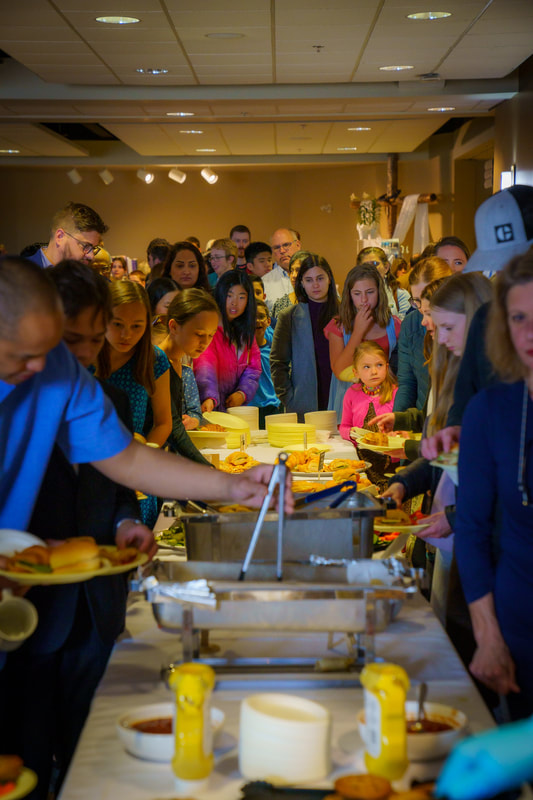
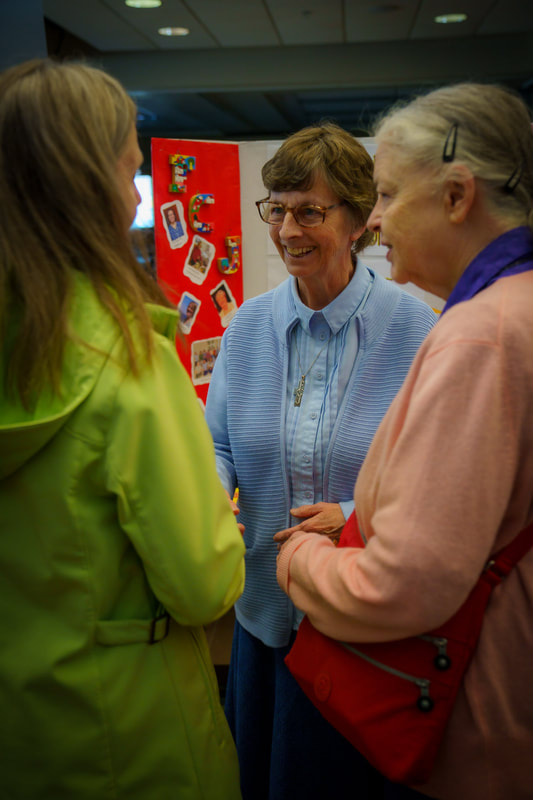
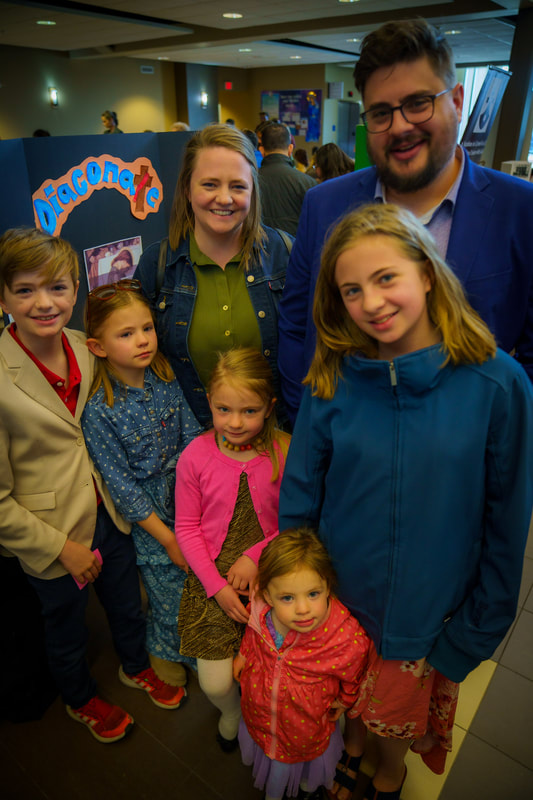
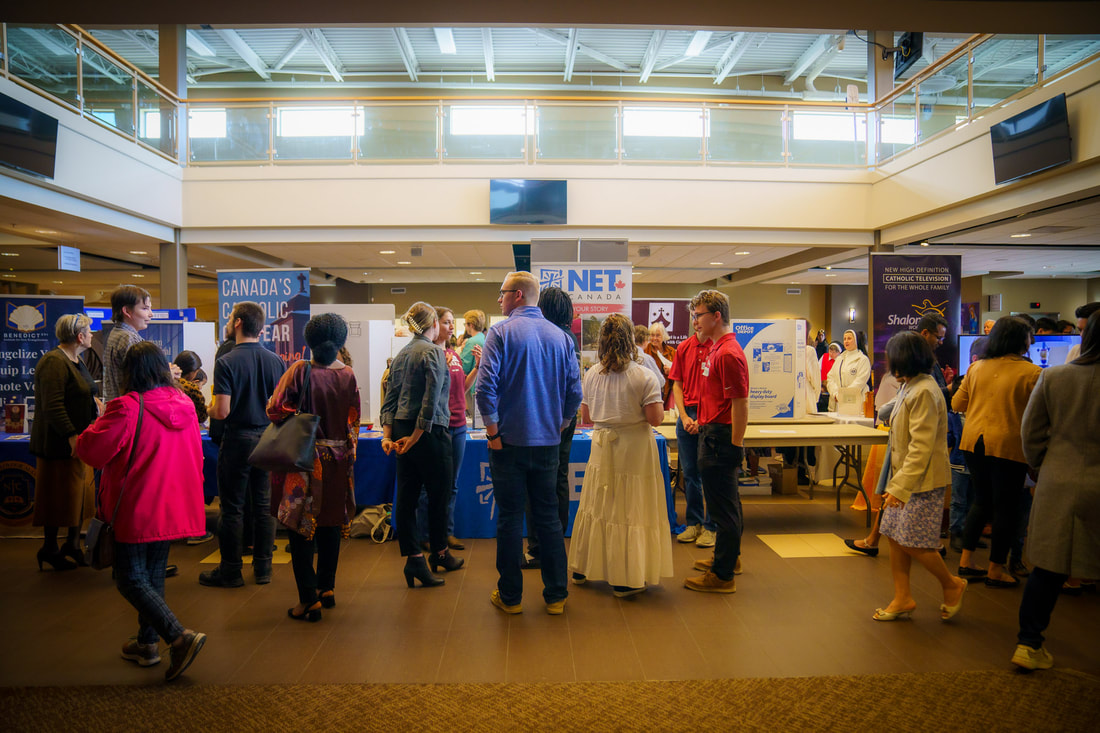
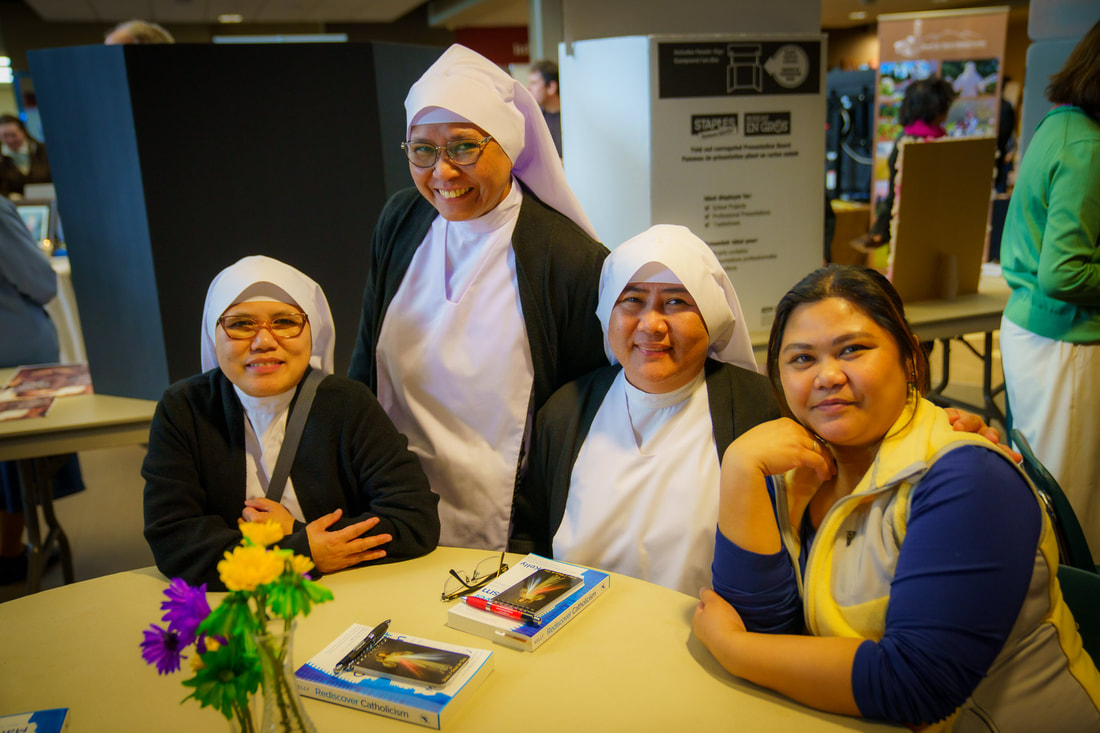
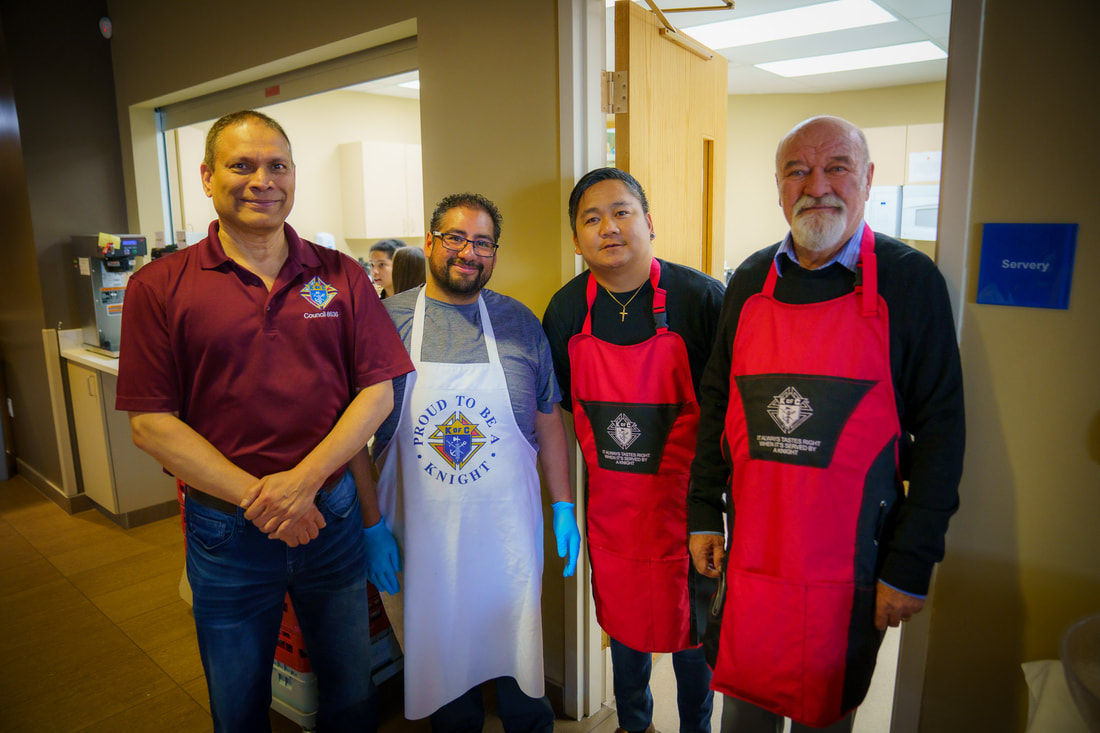
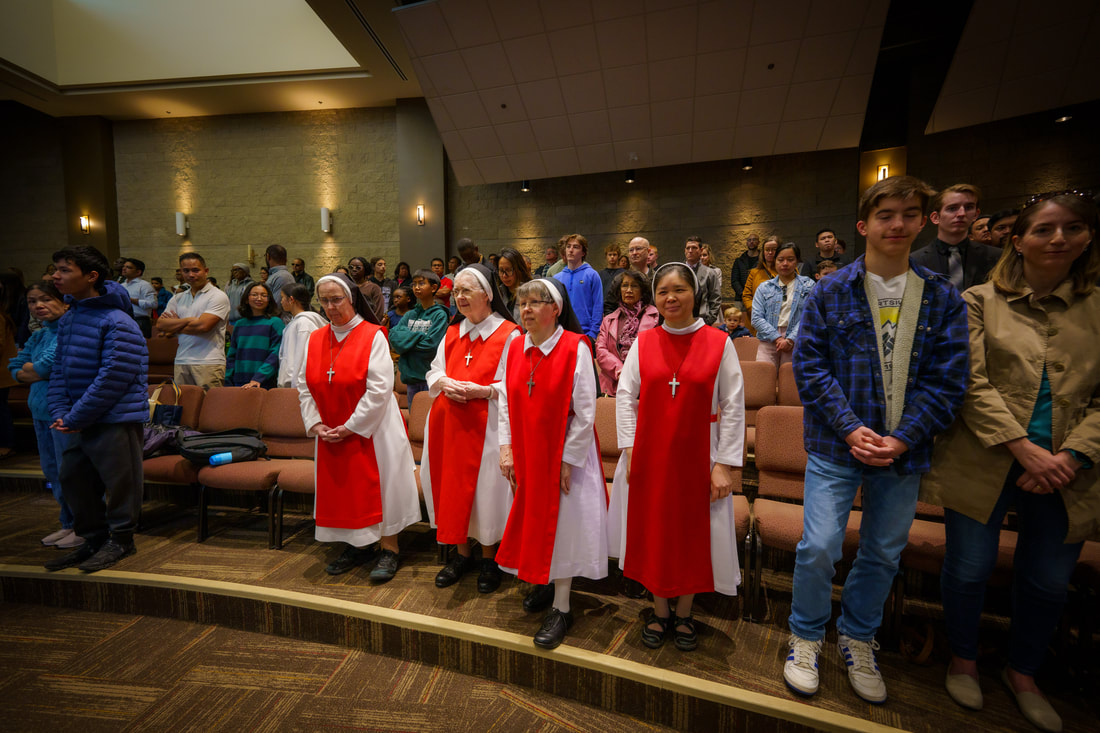
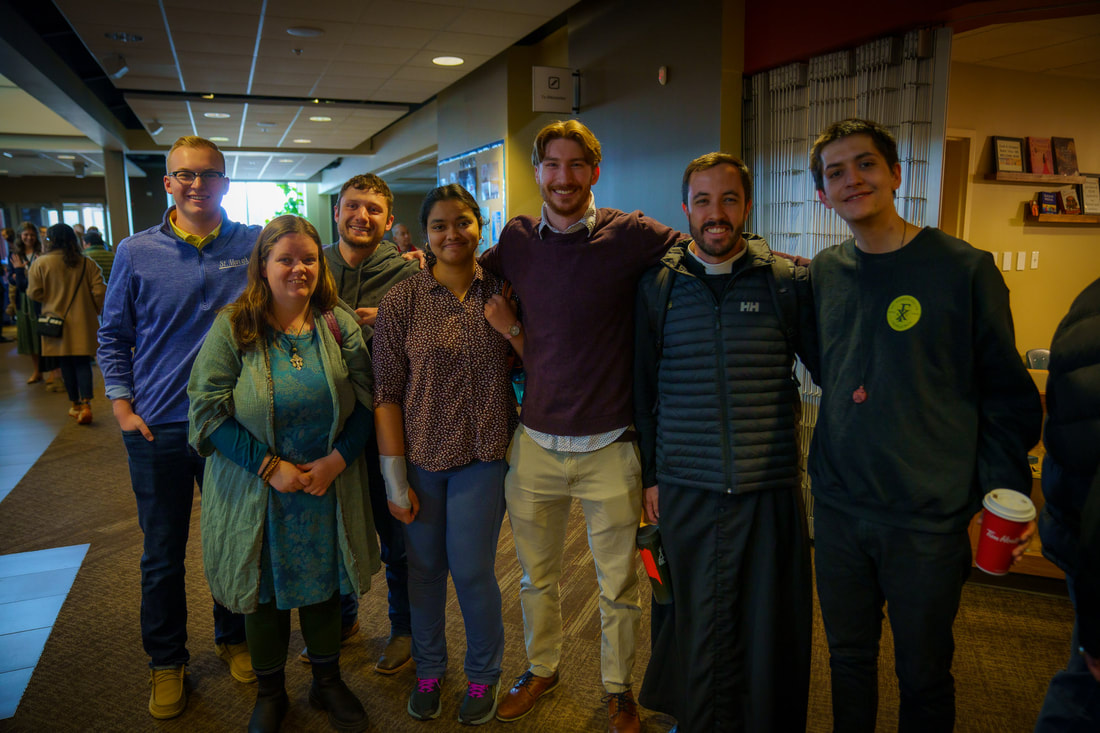
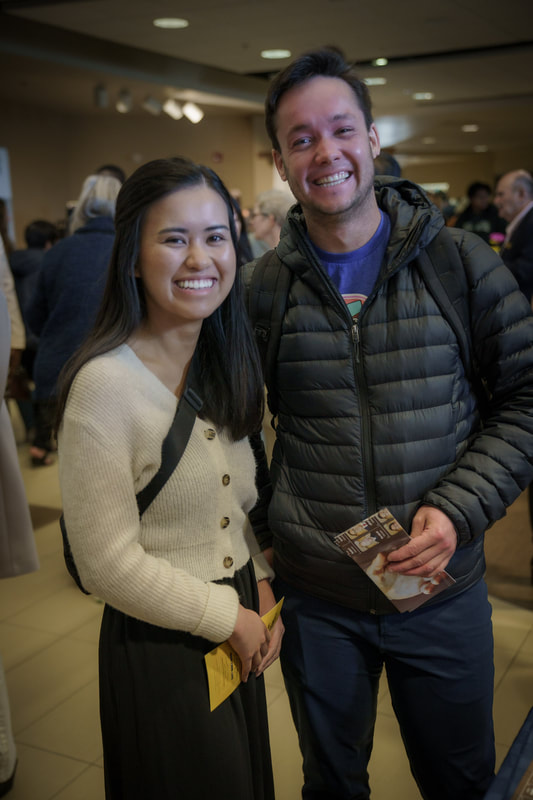
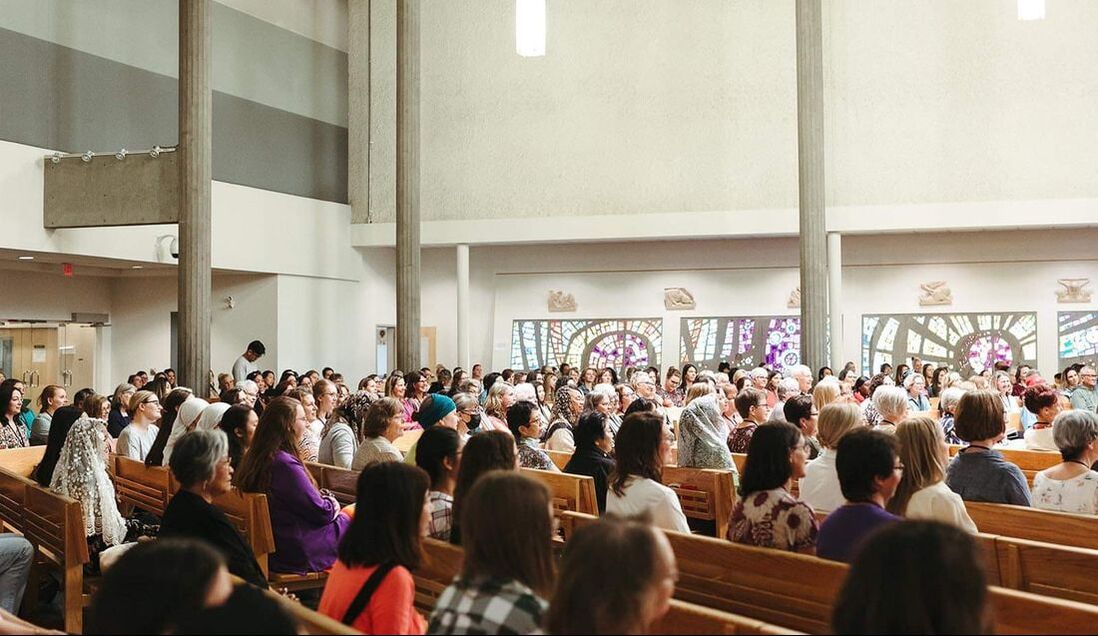
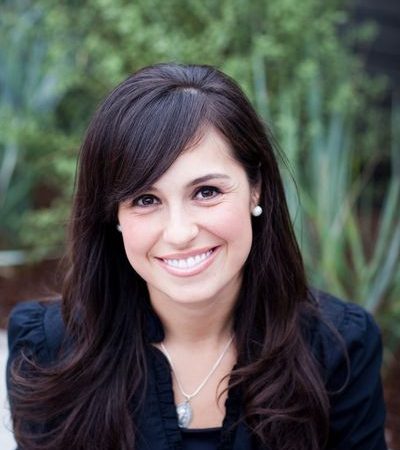
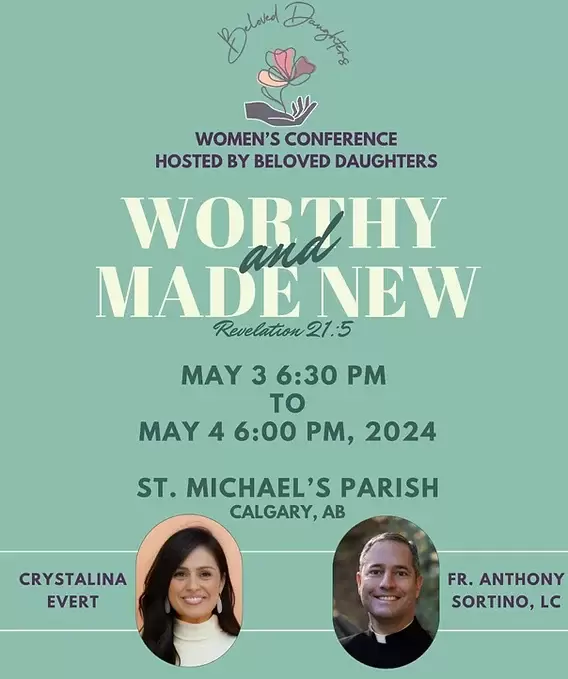
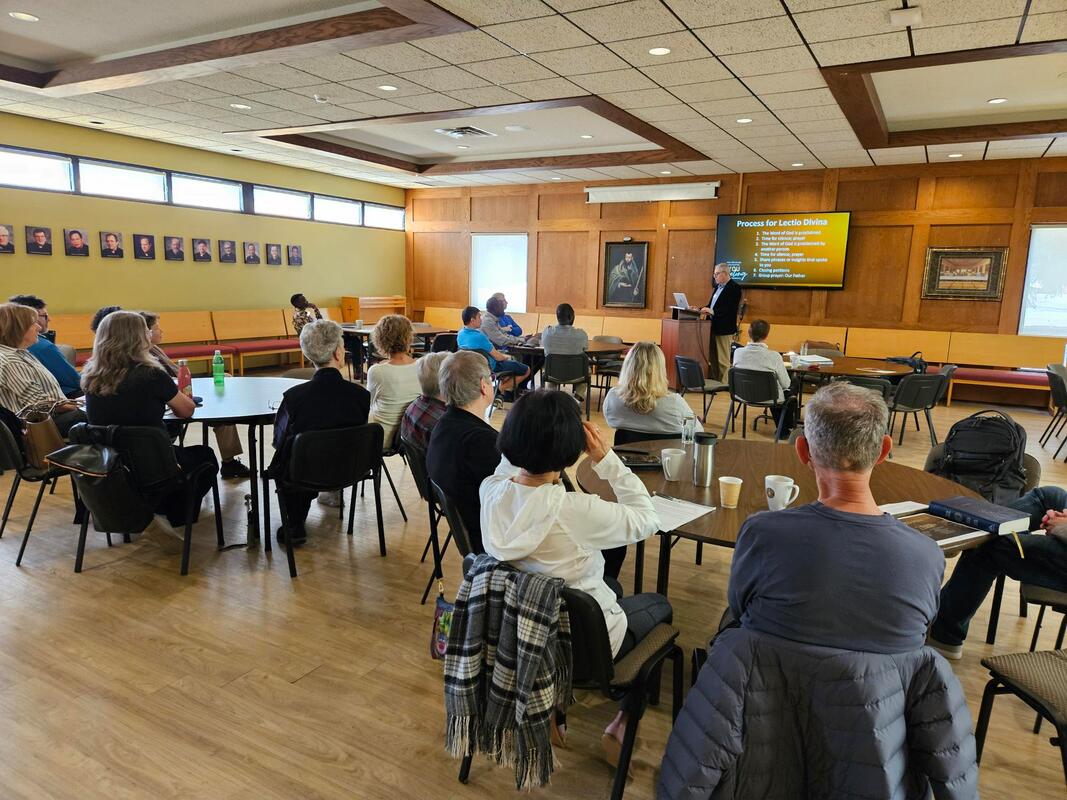
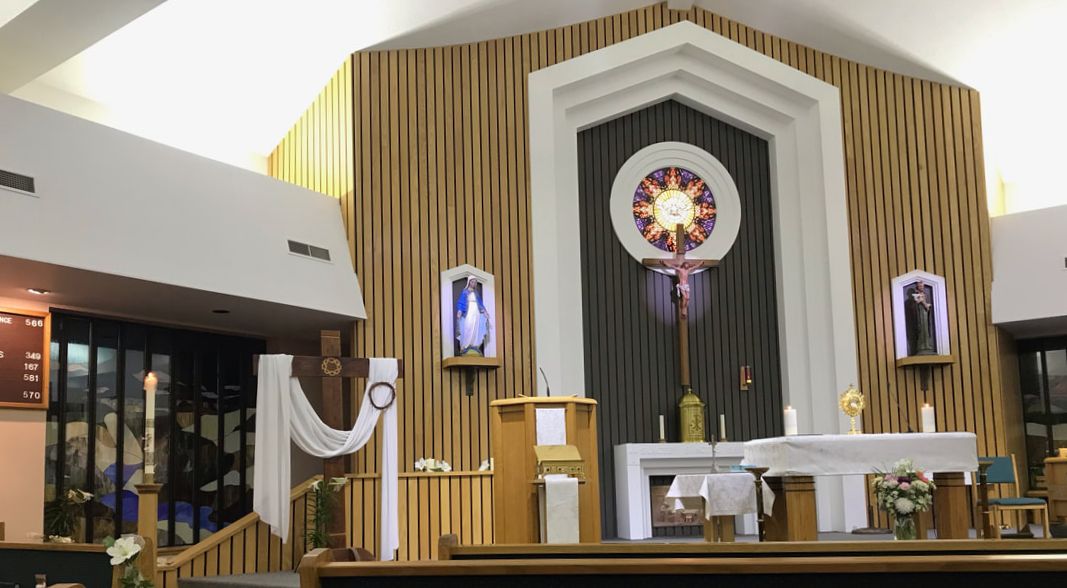
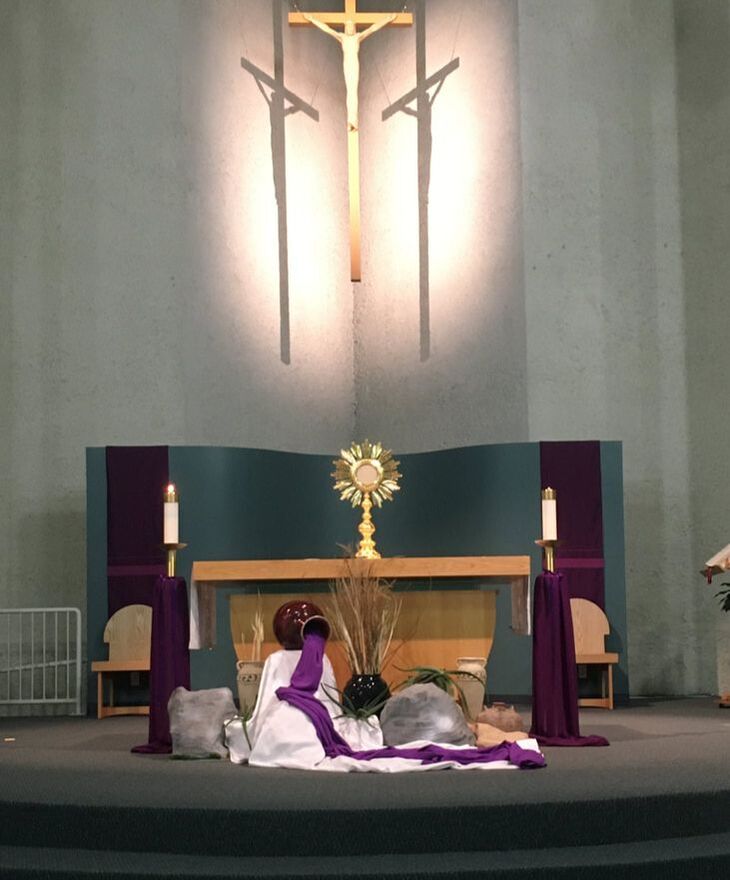

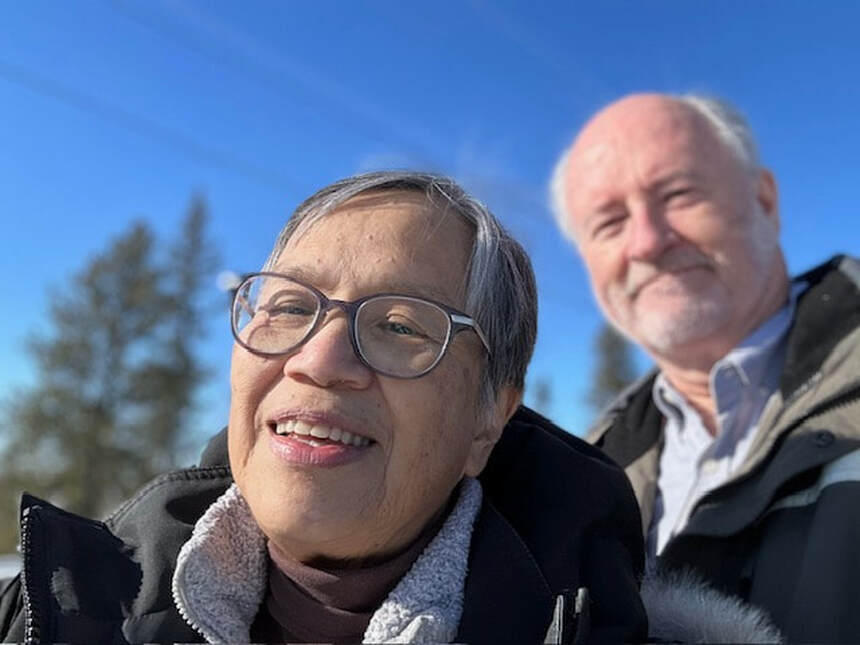








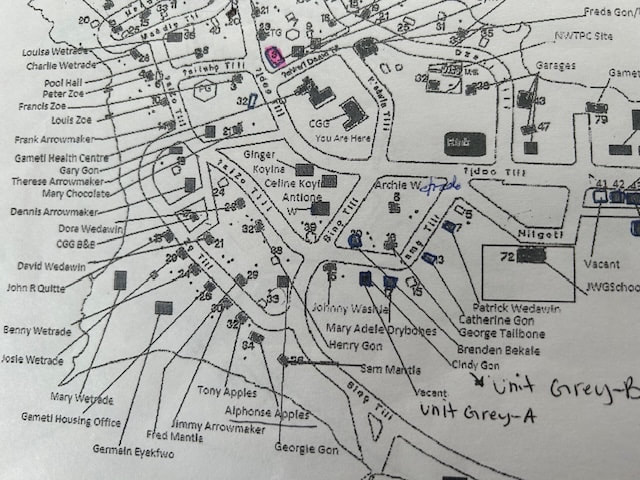

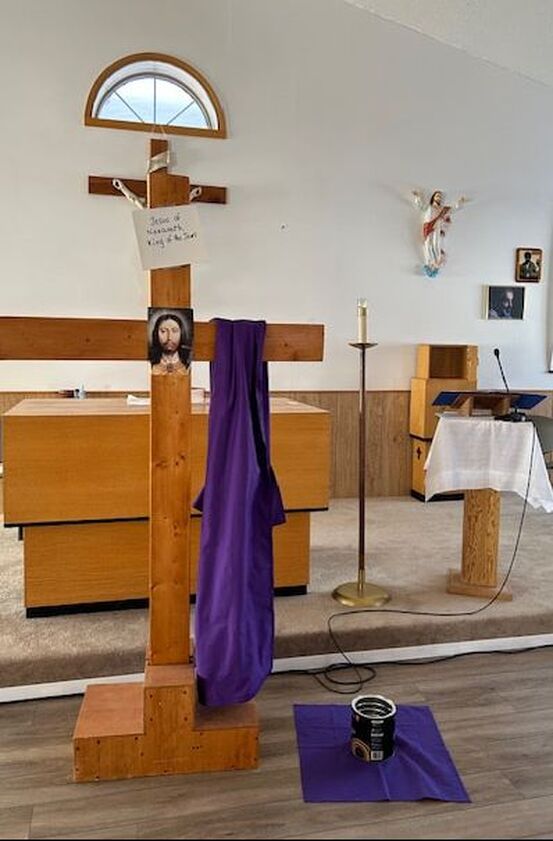
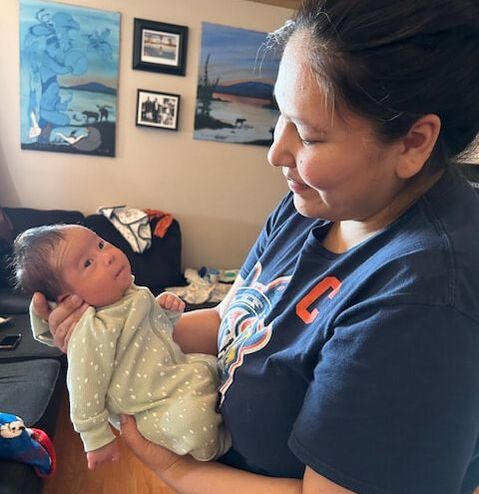
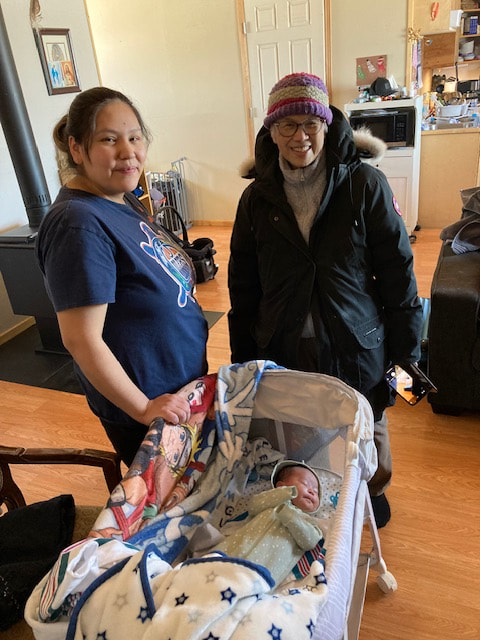


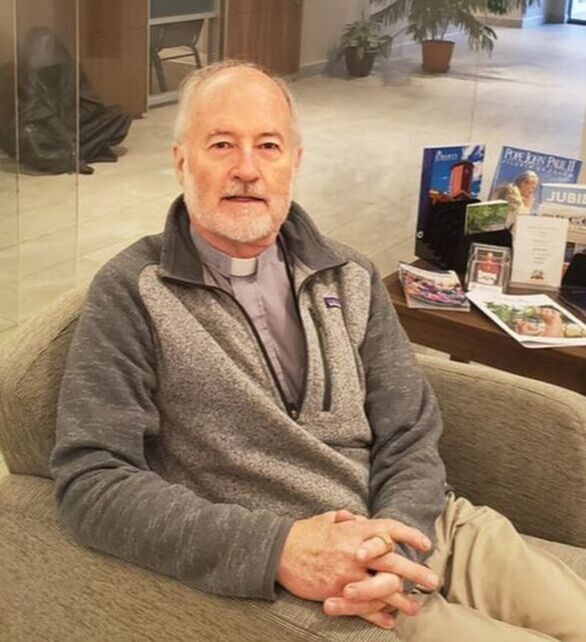
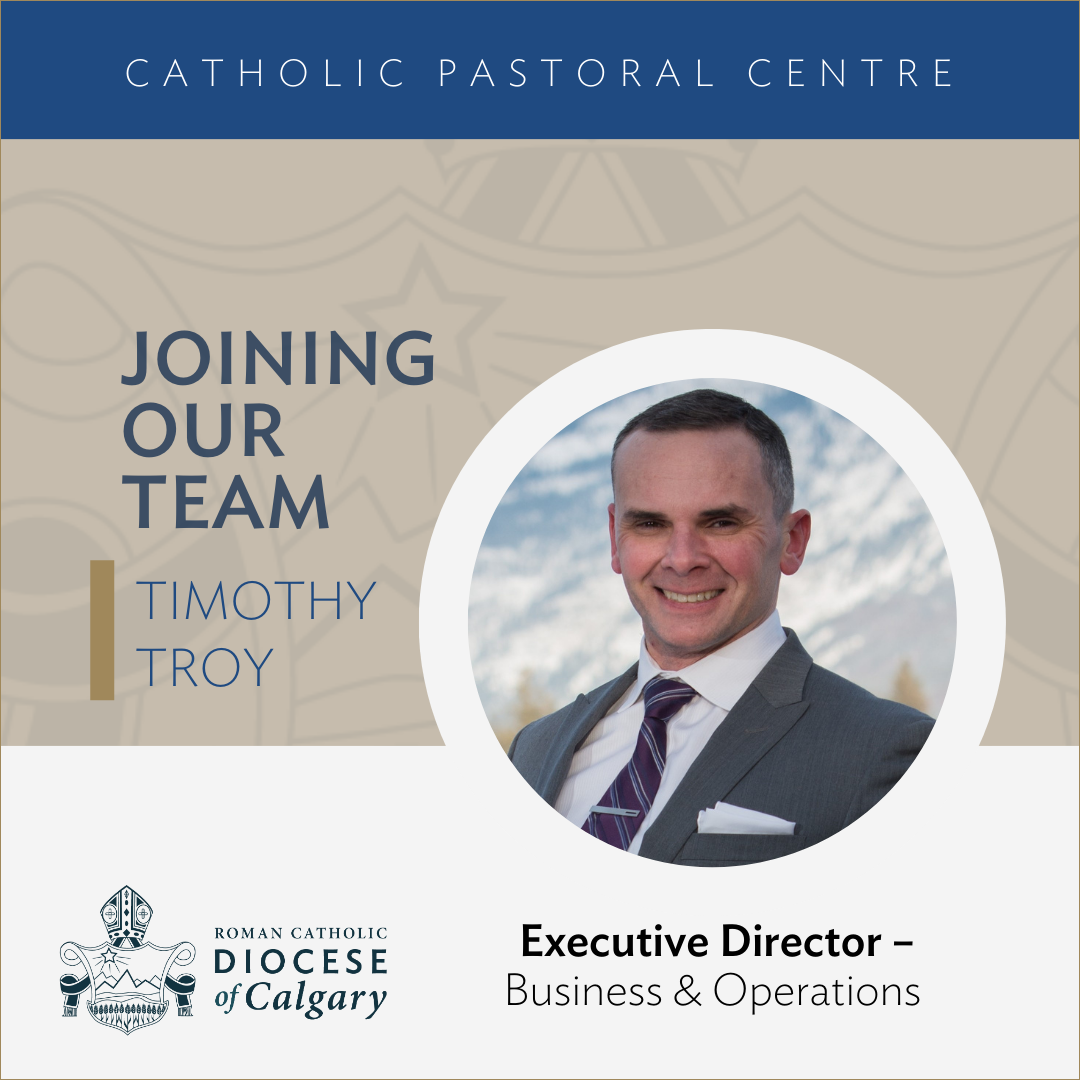

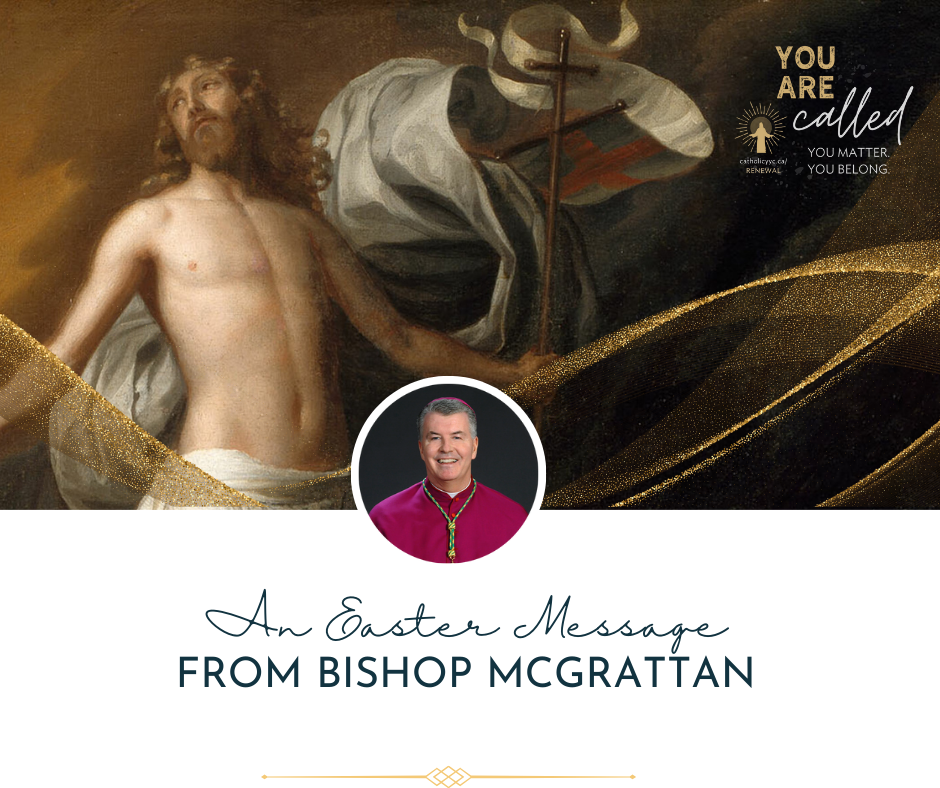
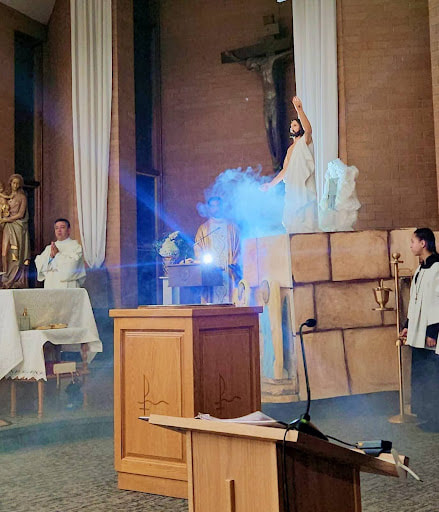
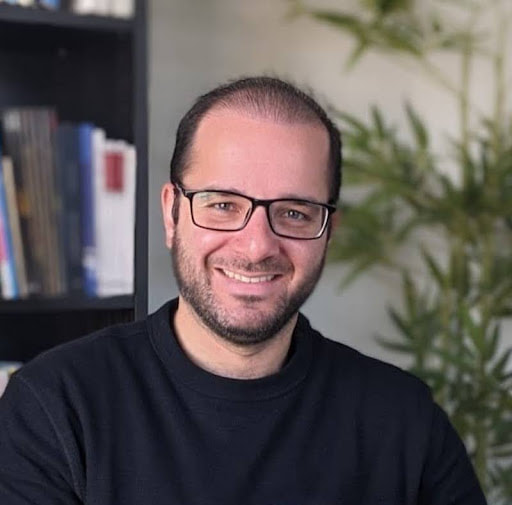
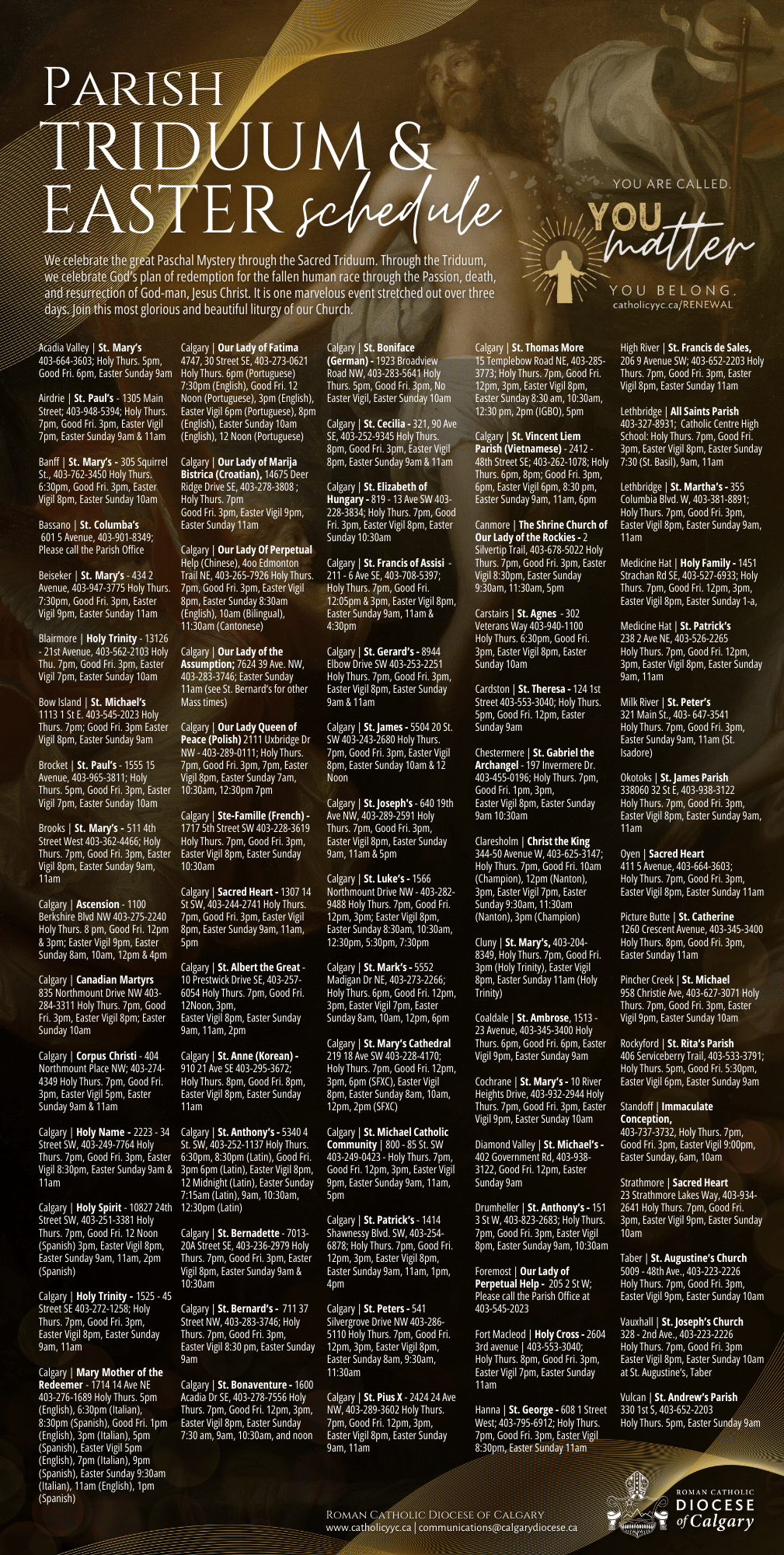
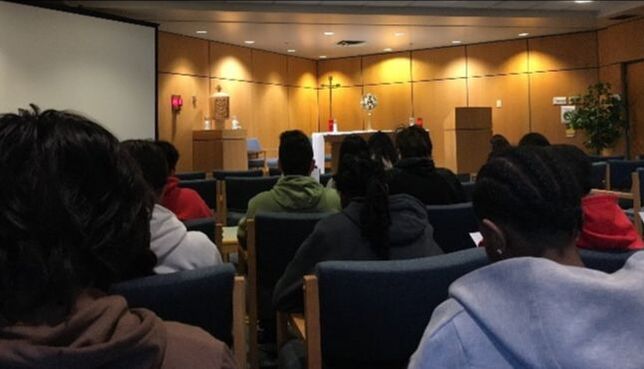
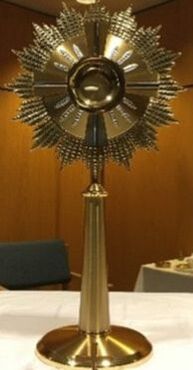
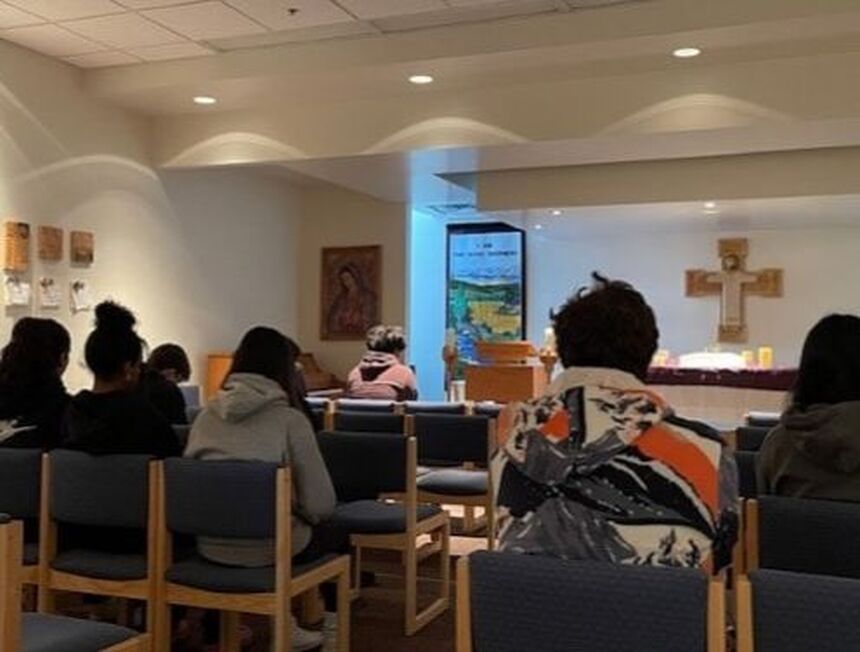
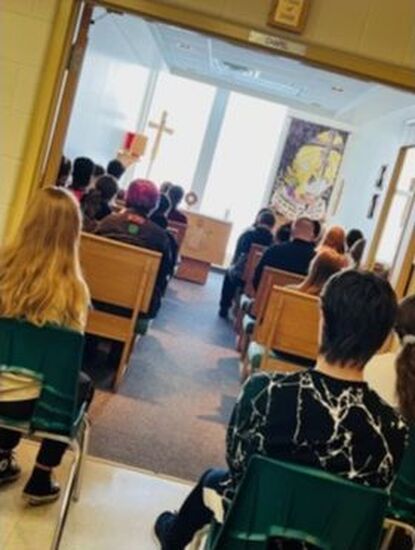
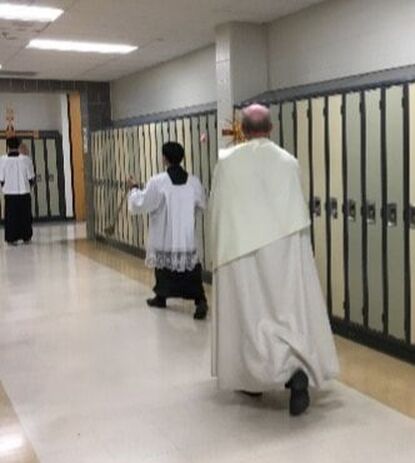
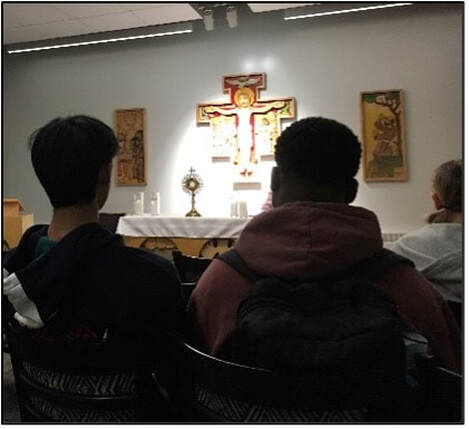
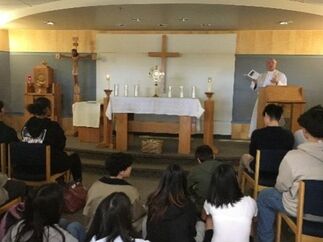
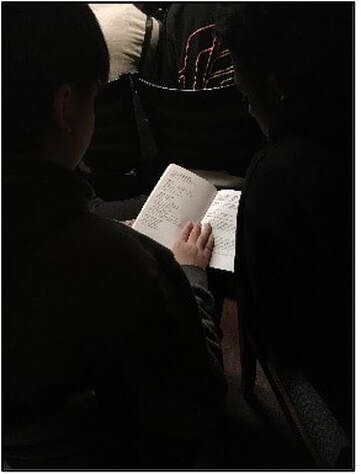
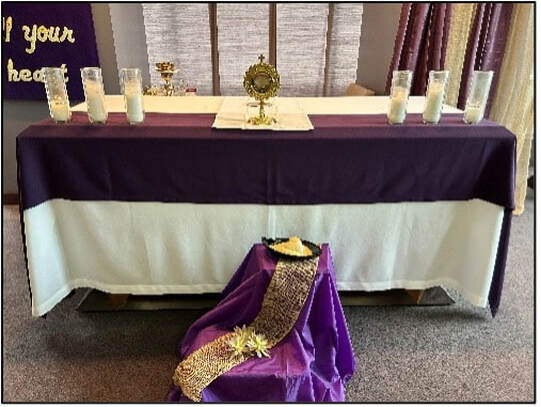
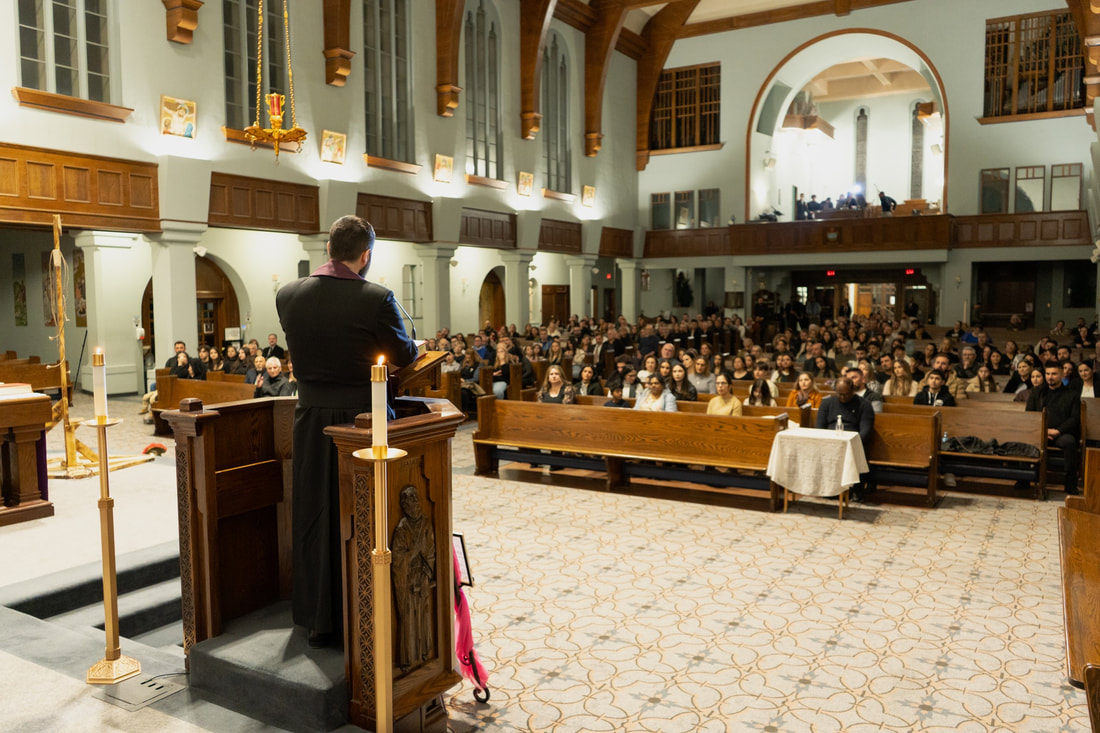
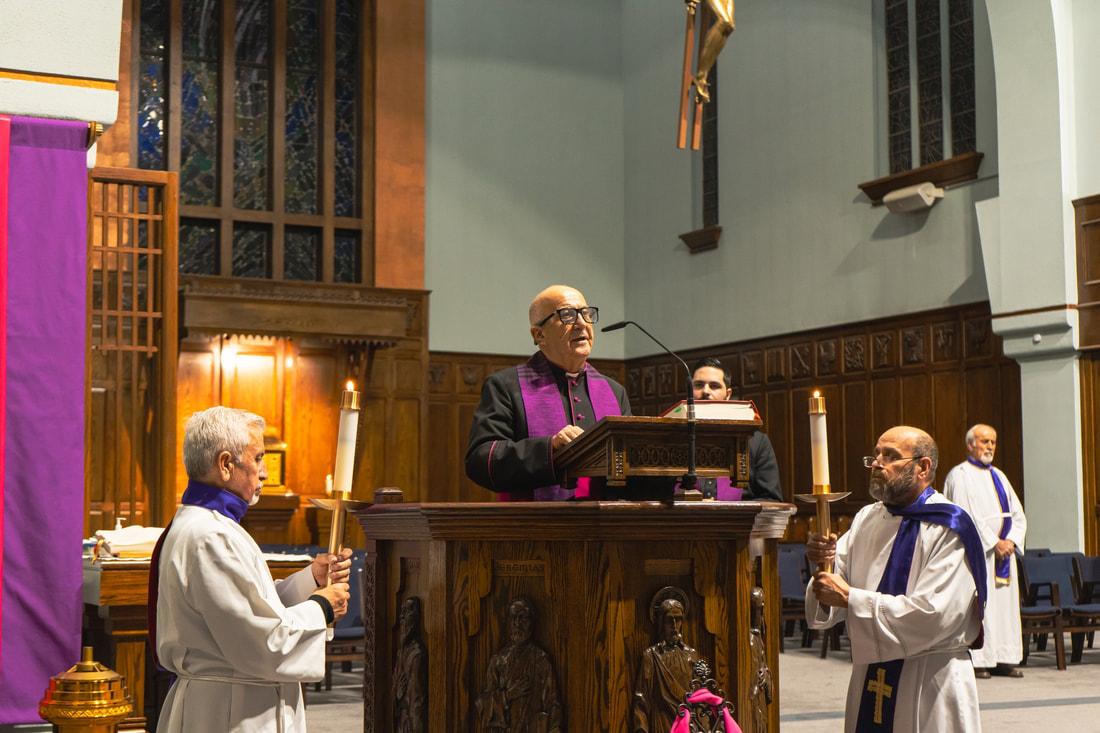
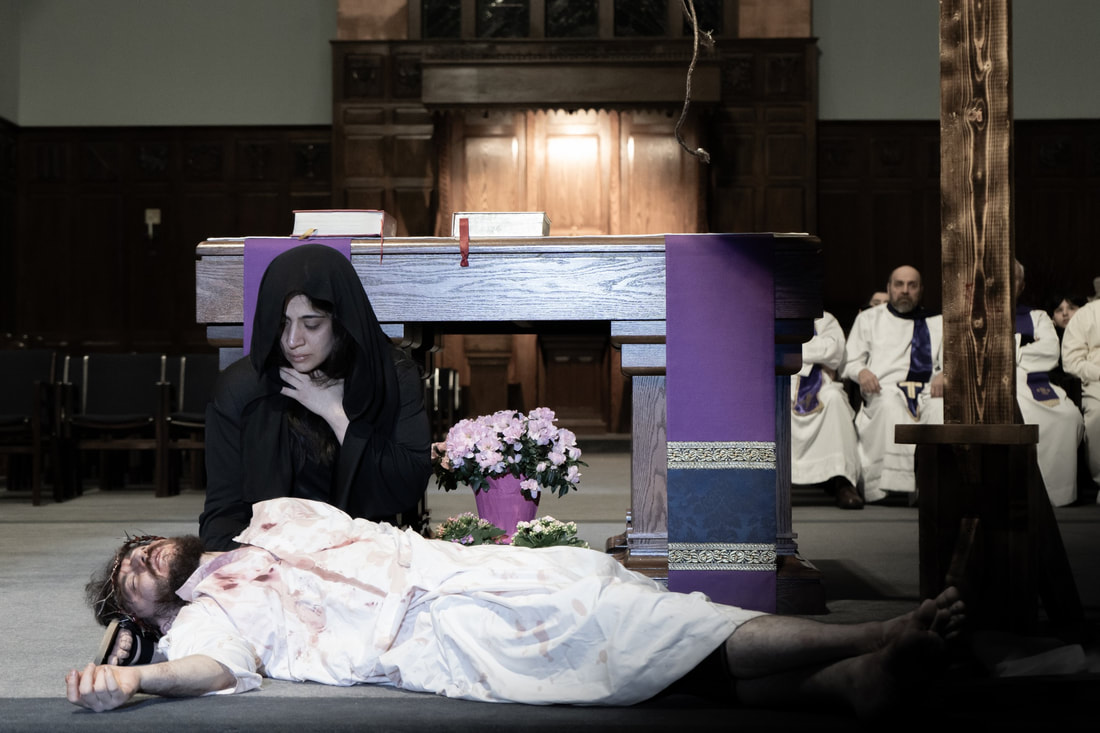
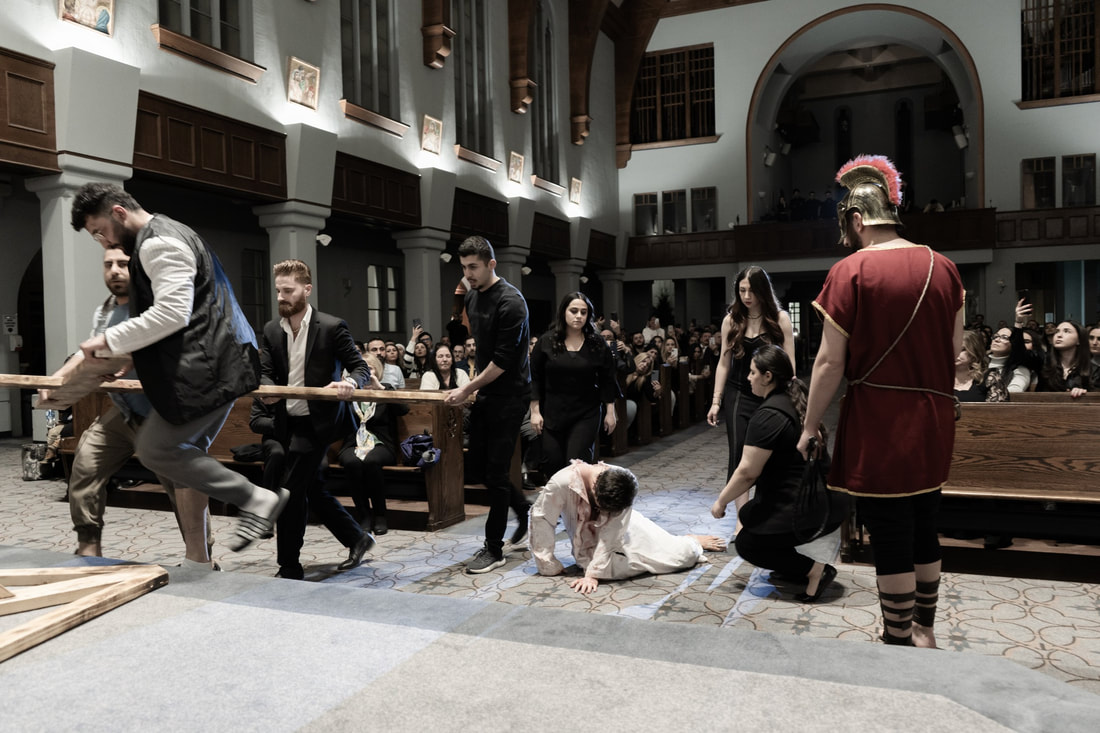
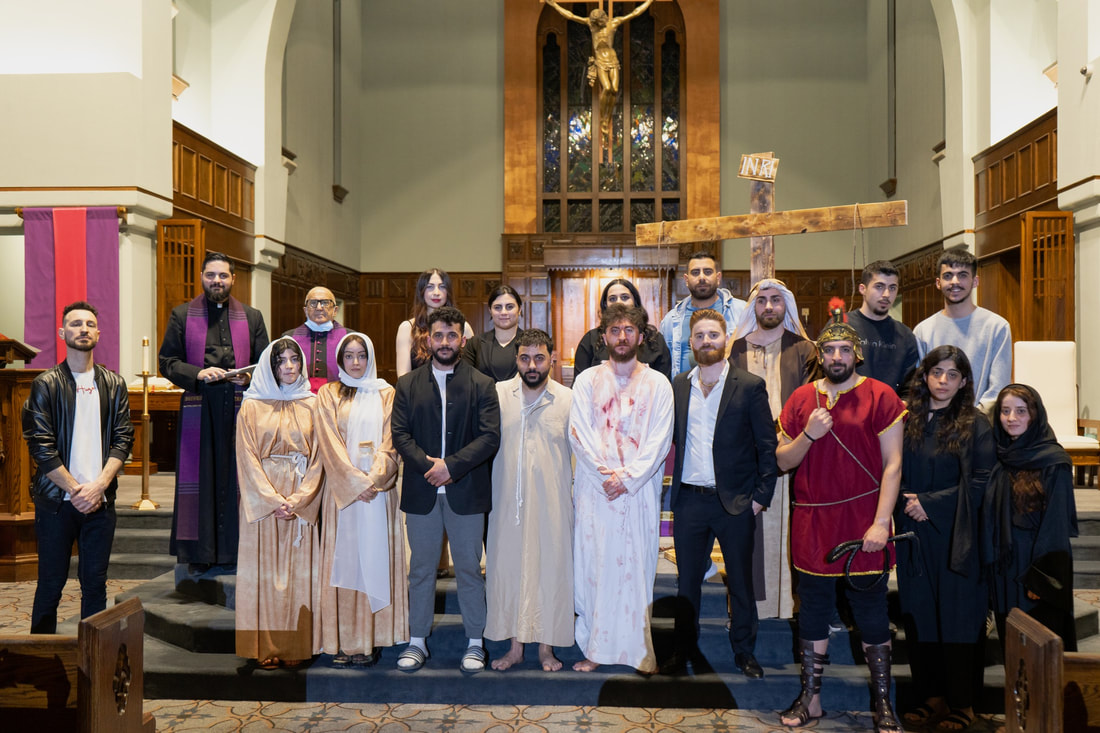
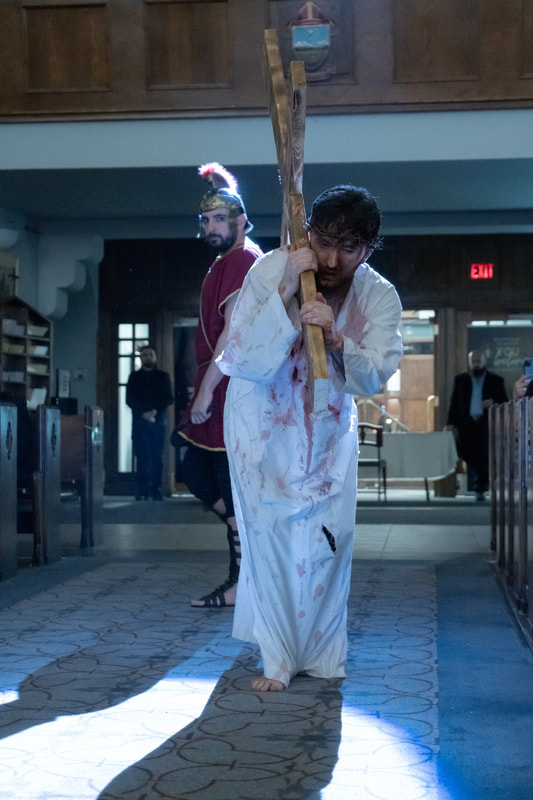
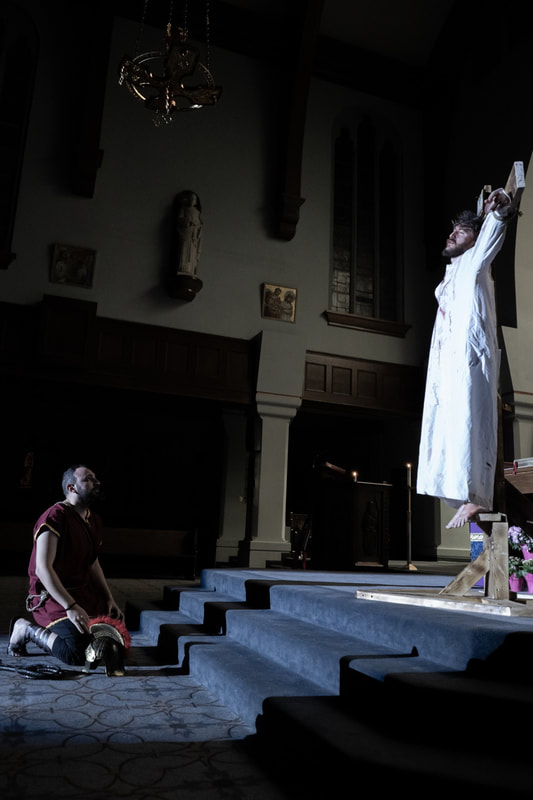
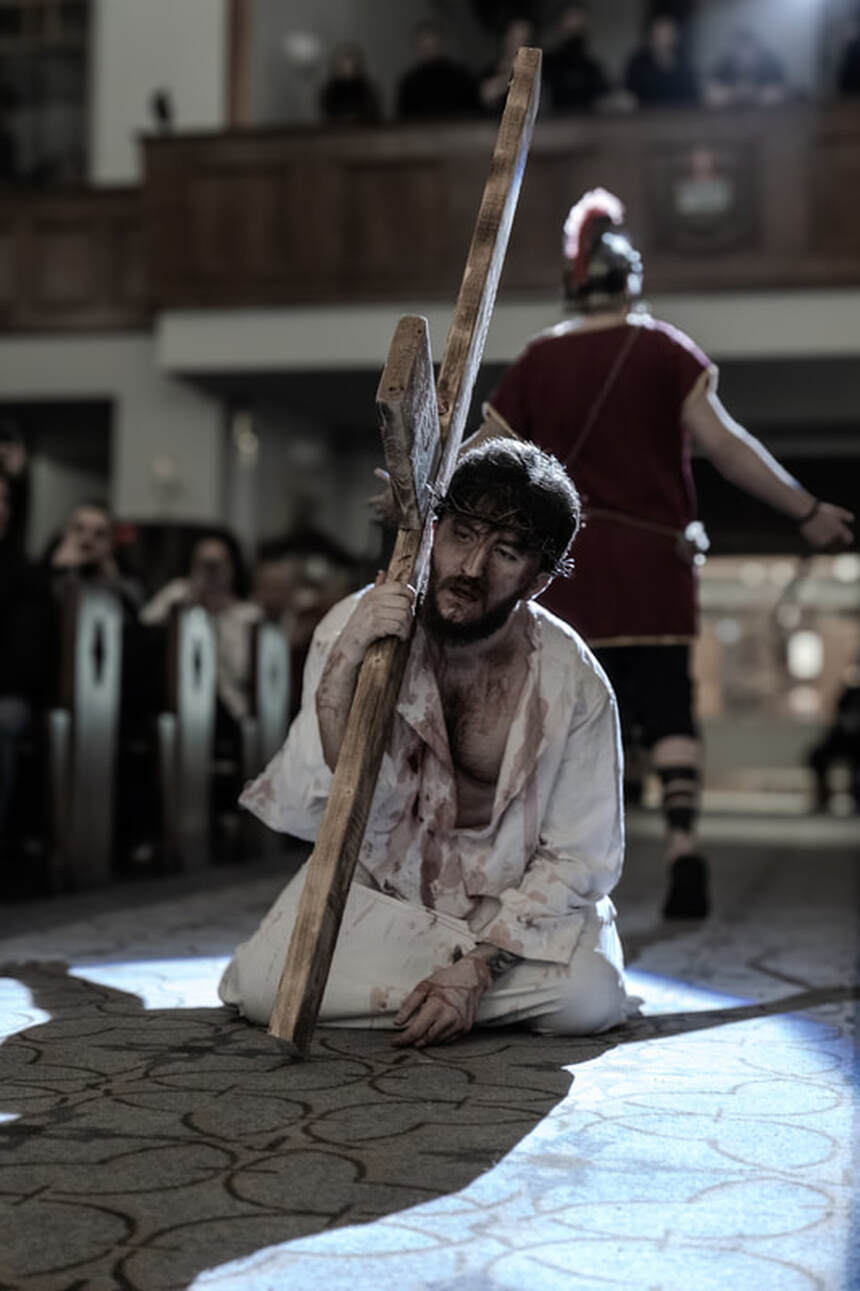


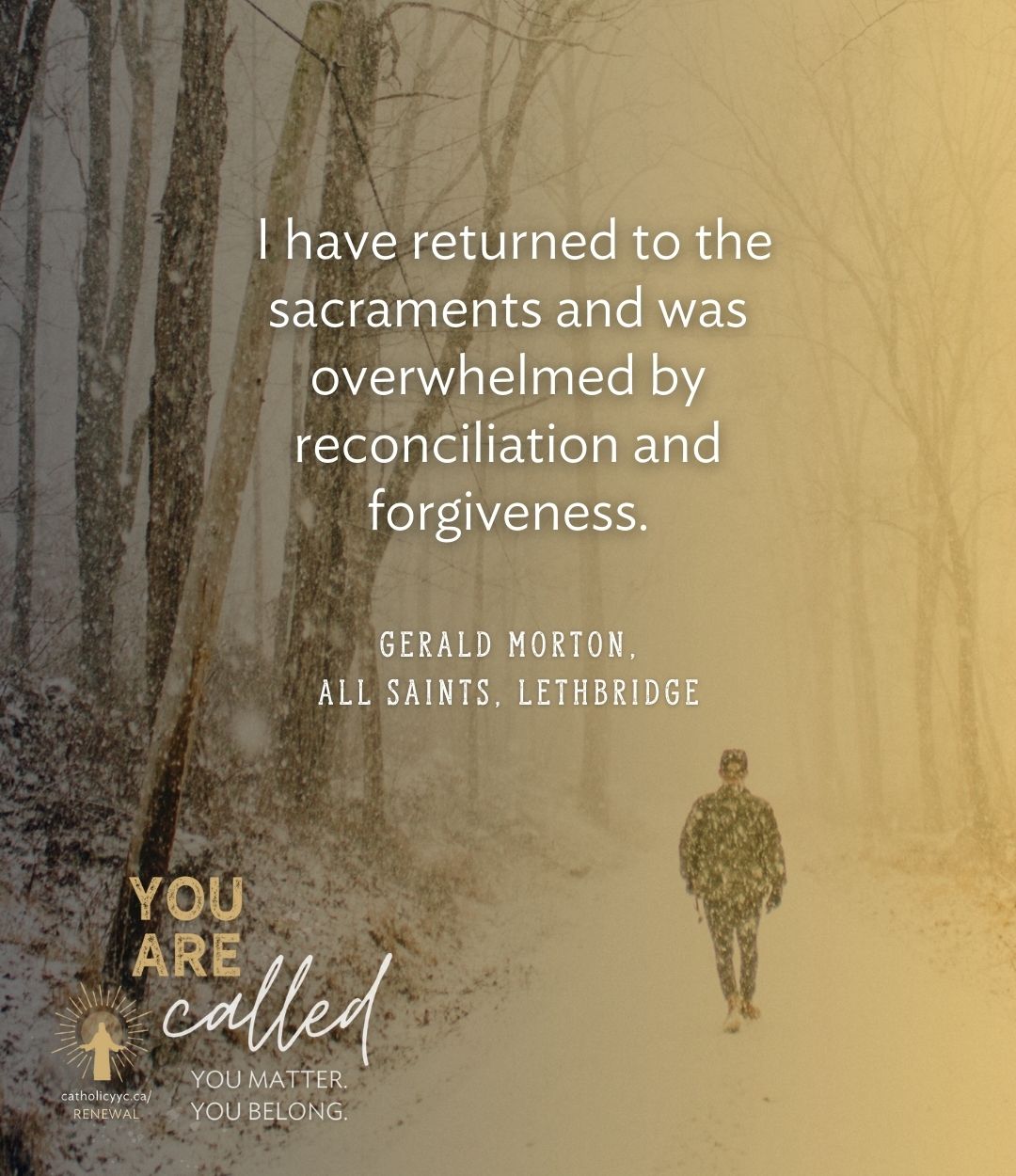
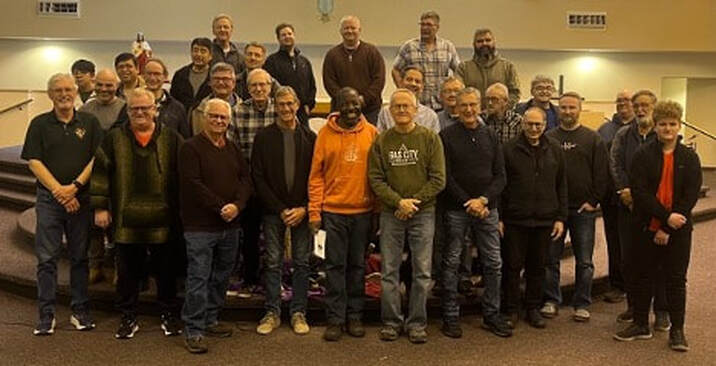
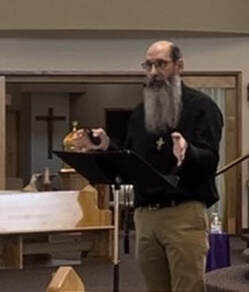
 RSS Feed
RSS Feed